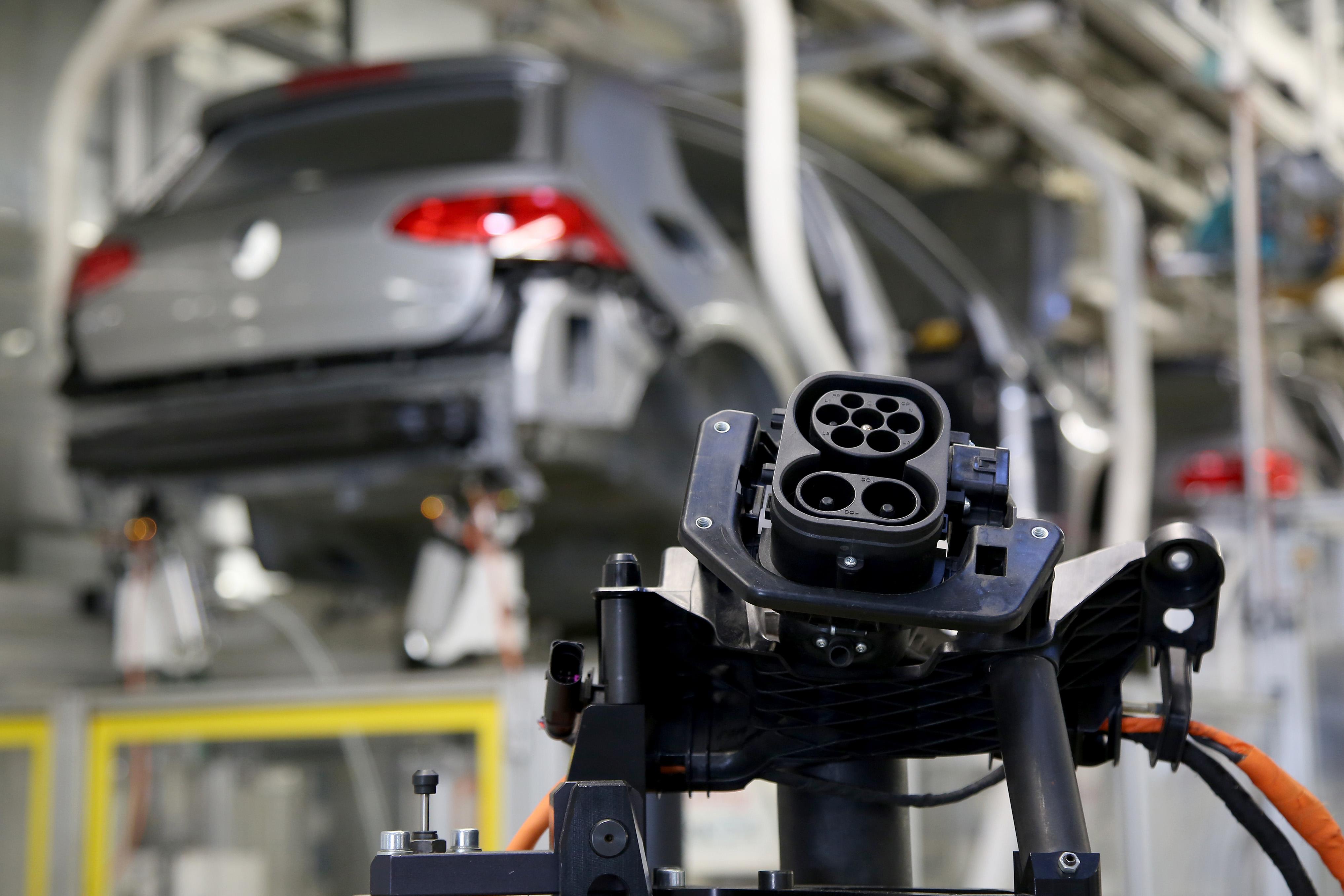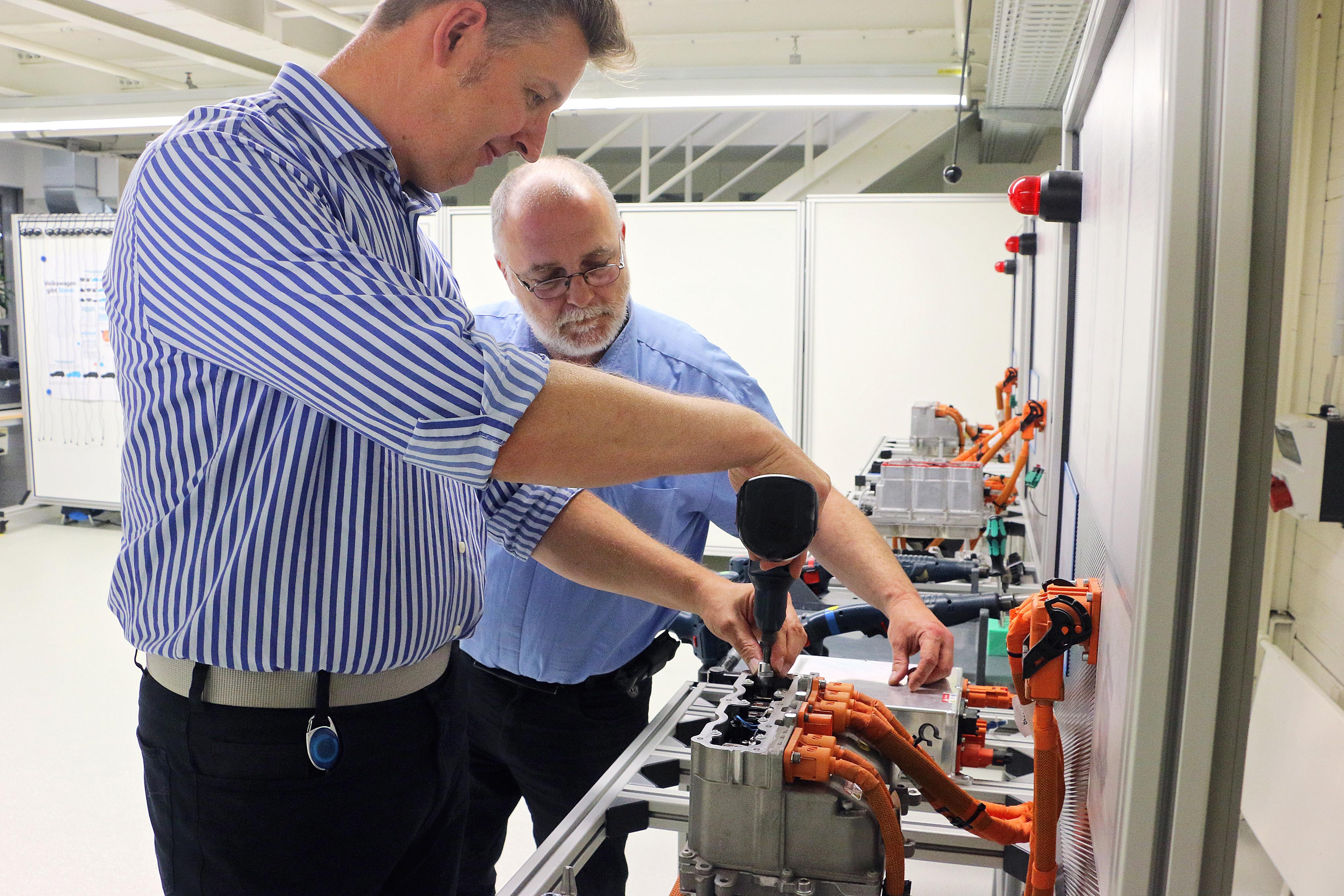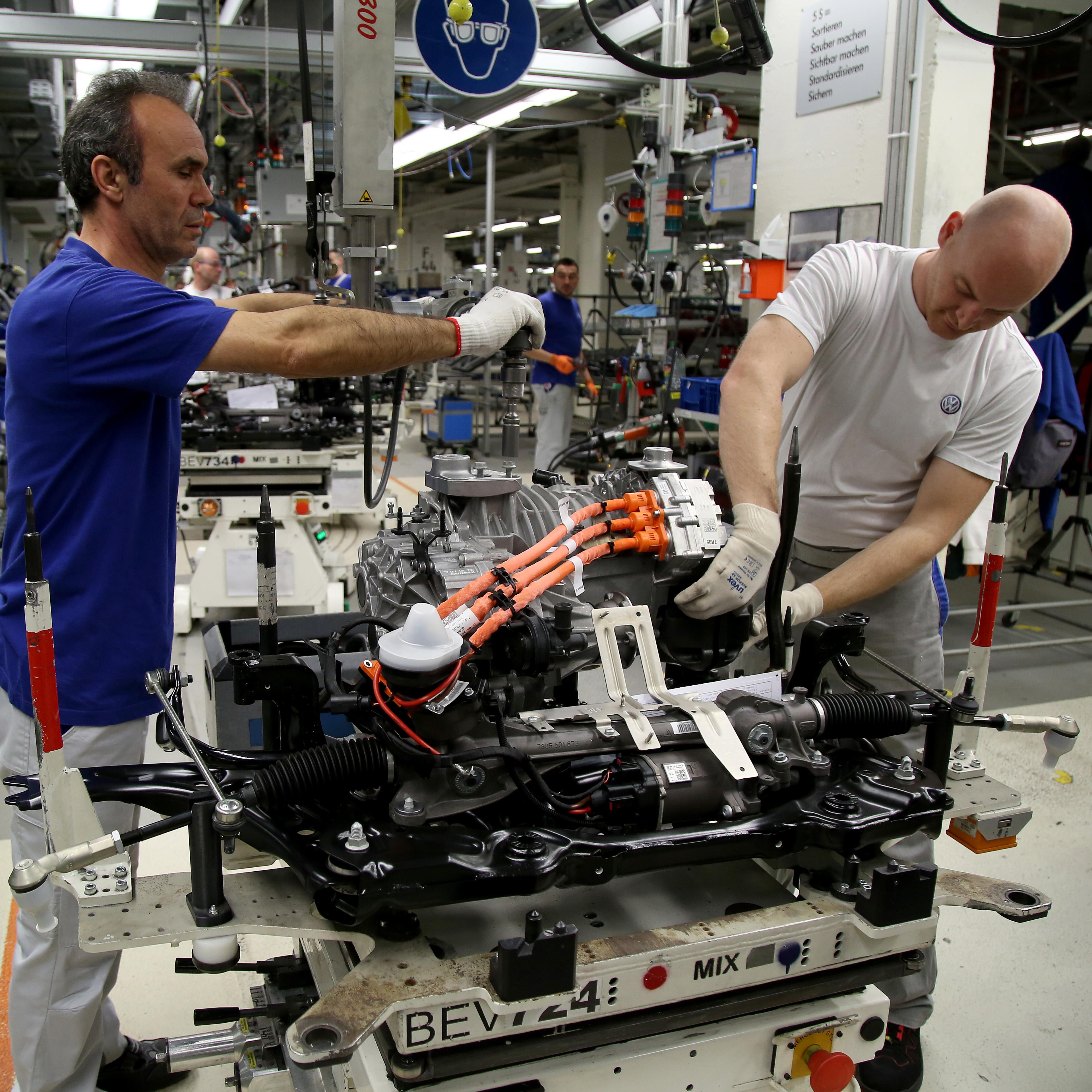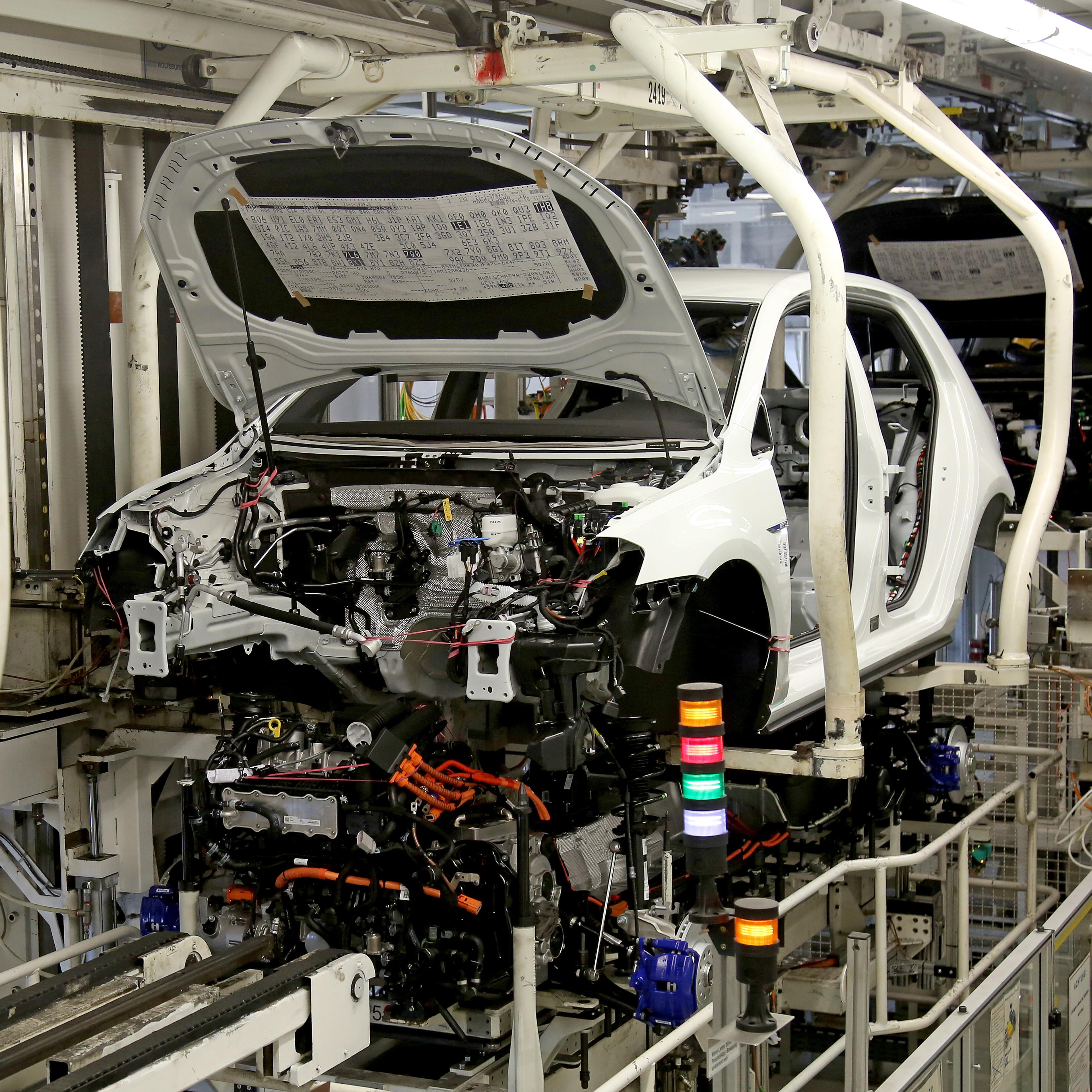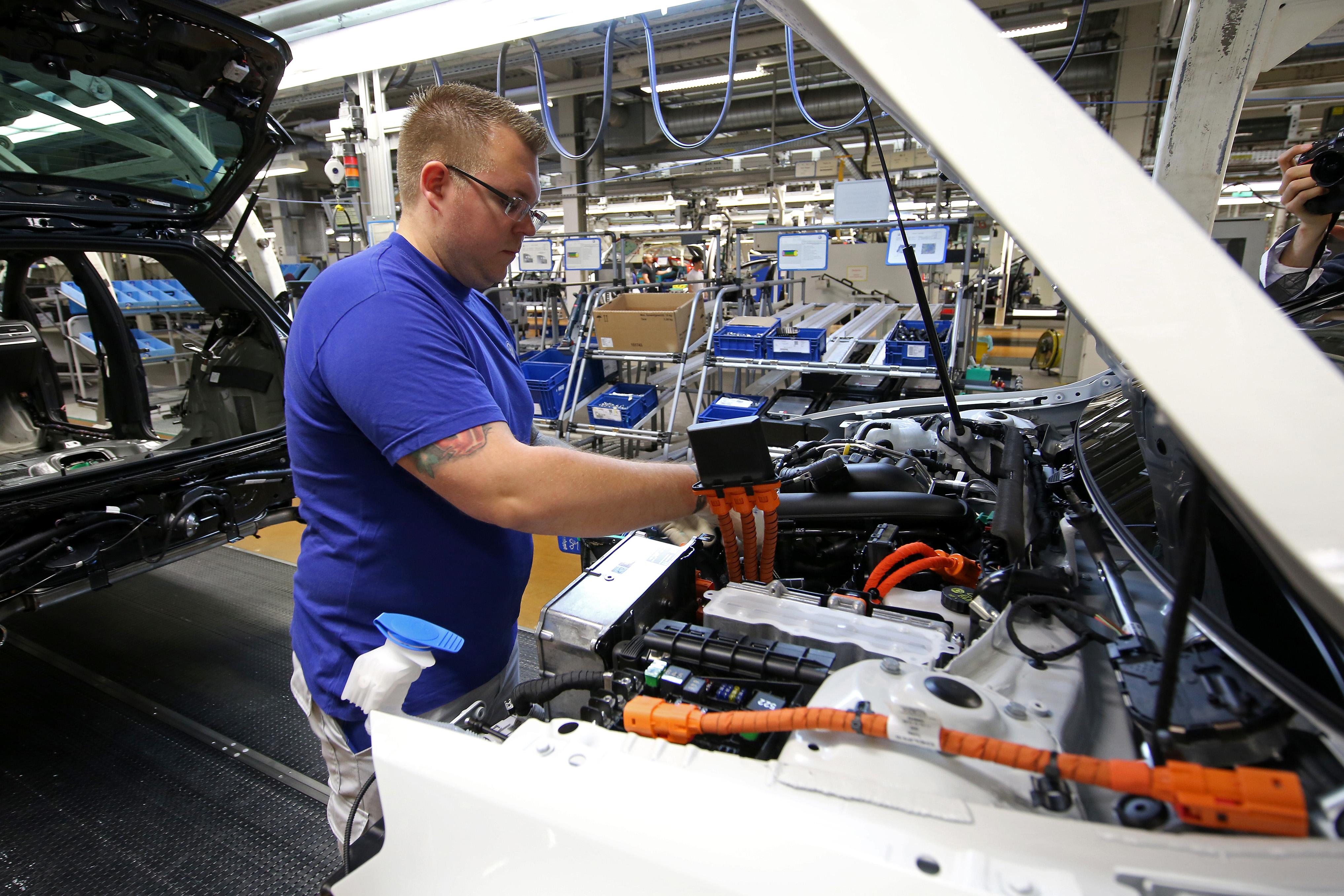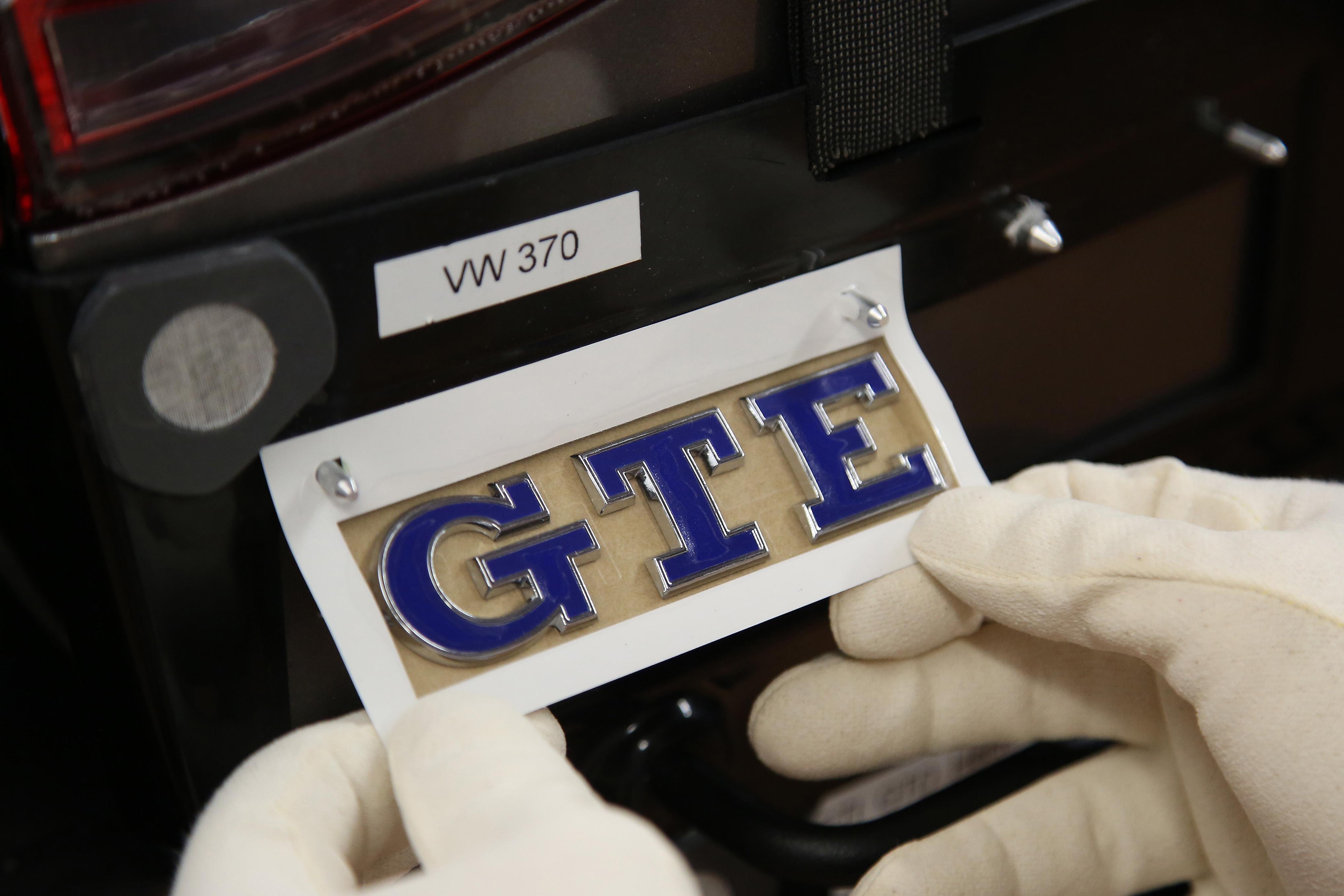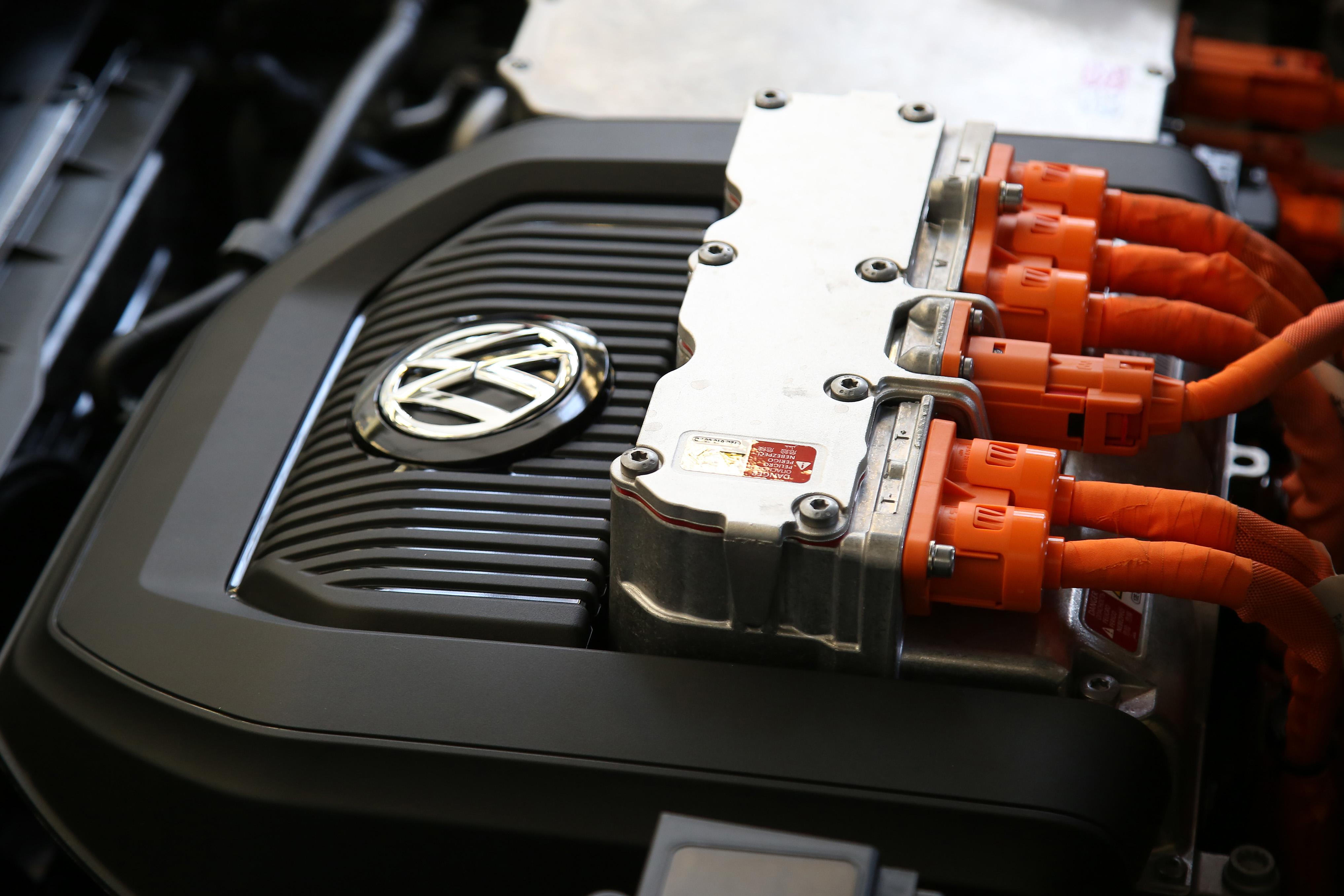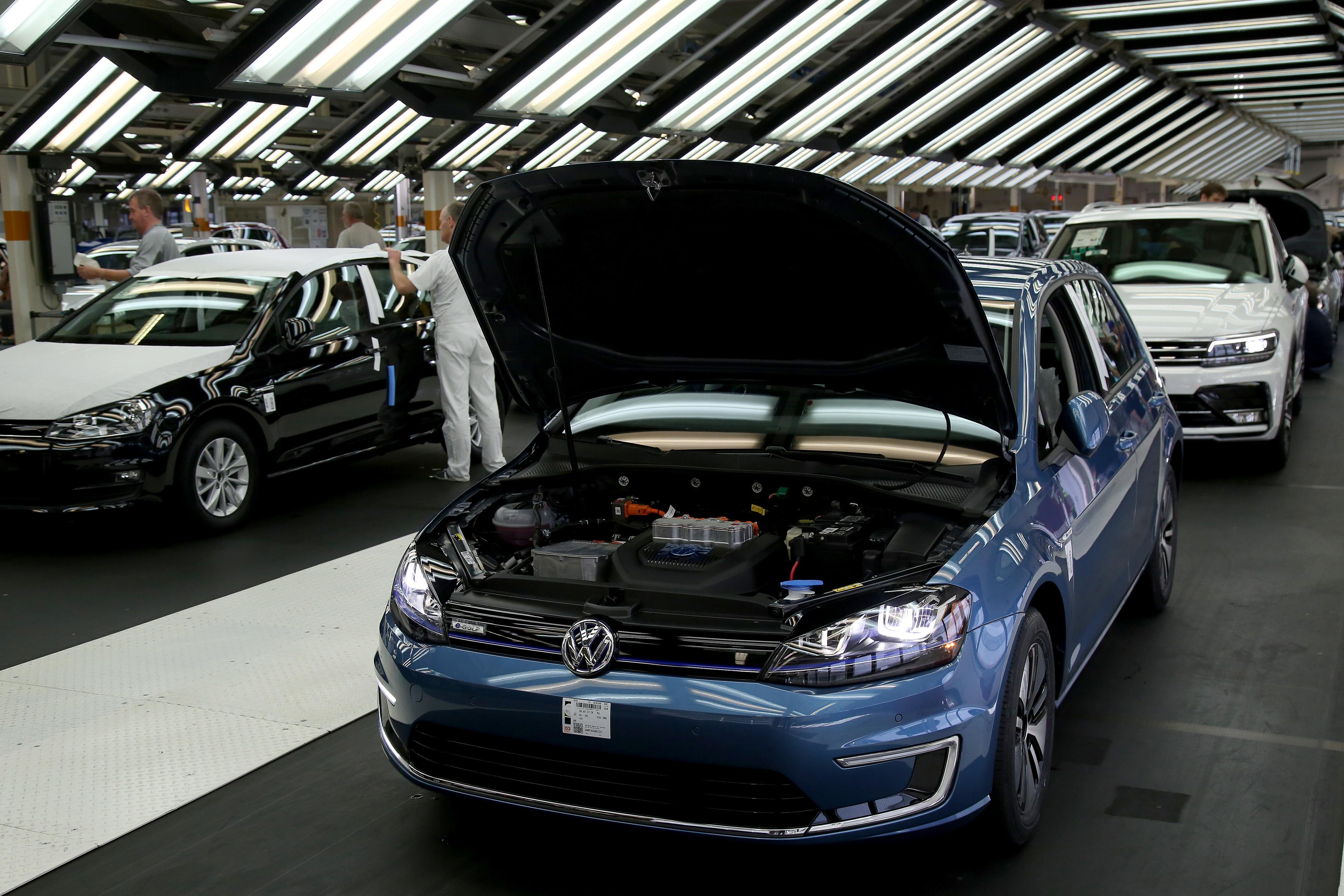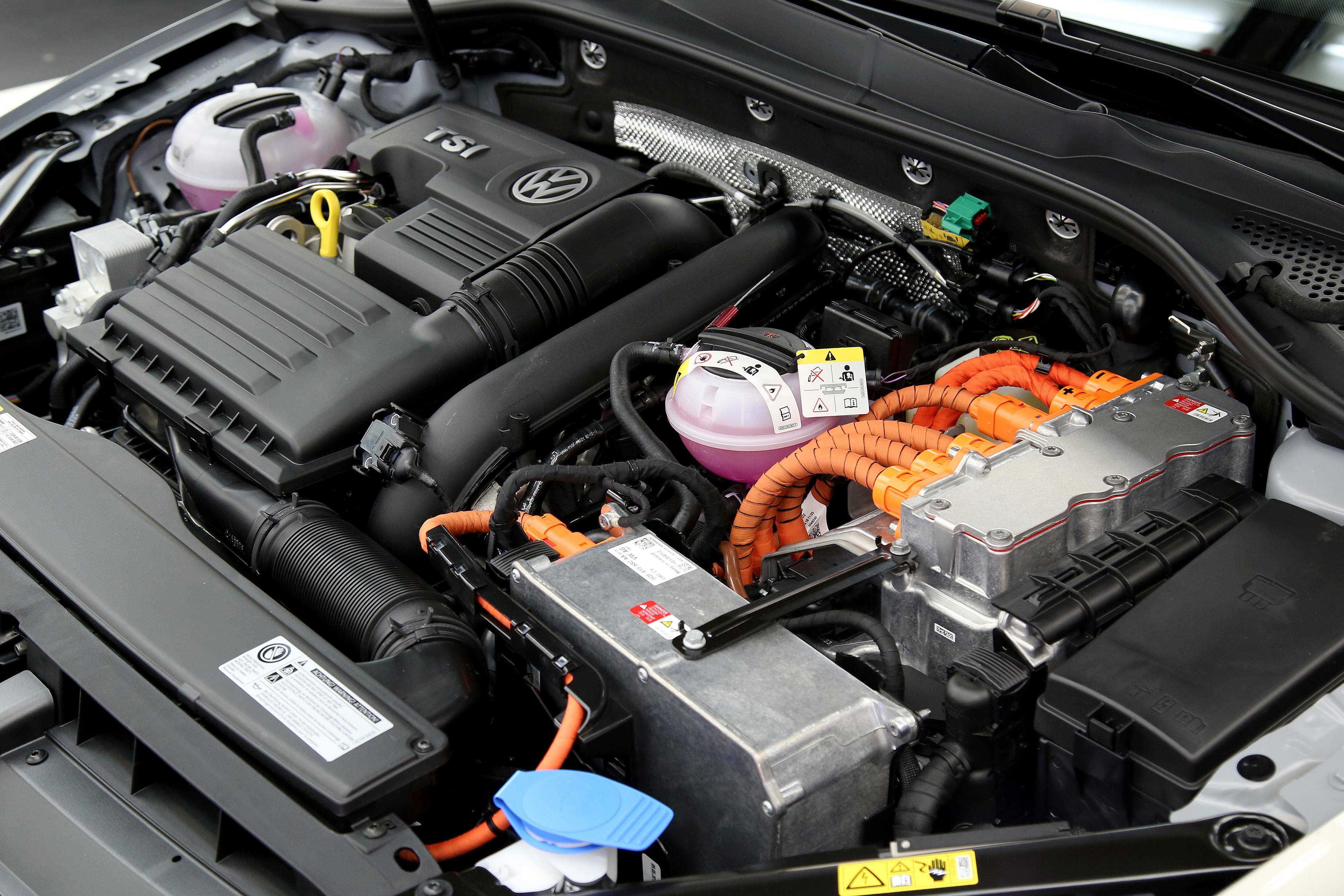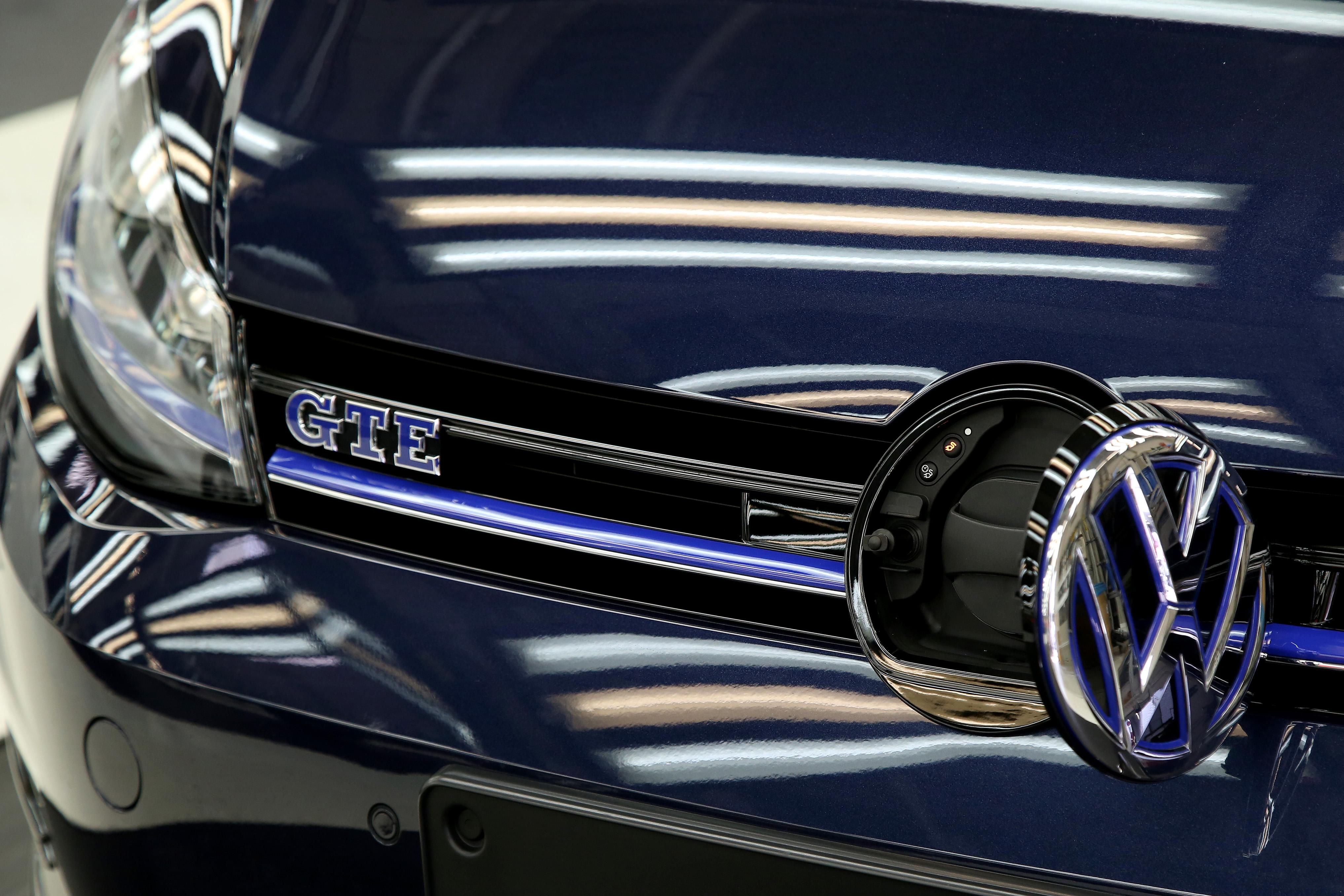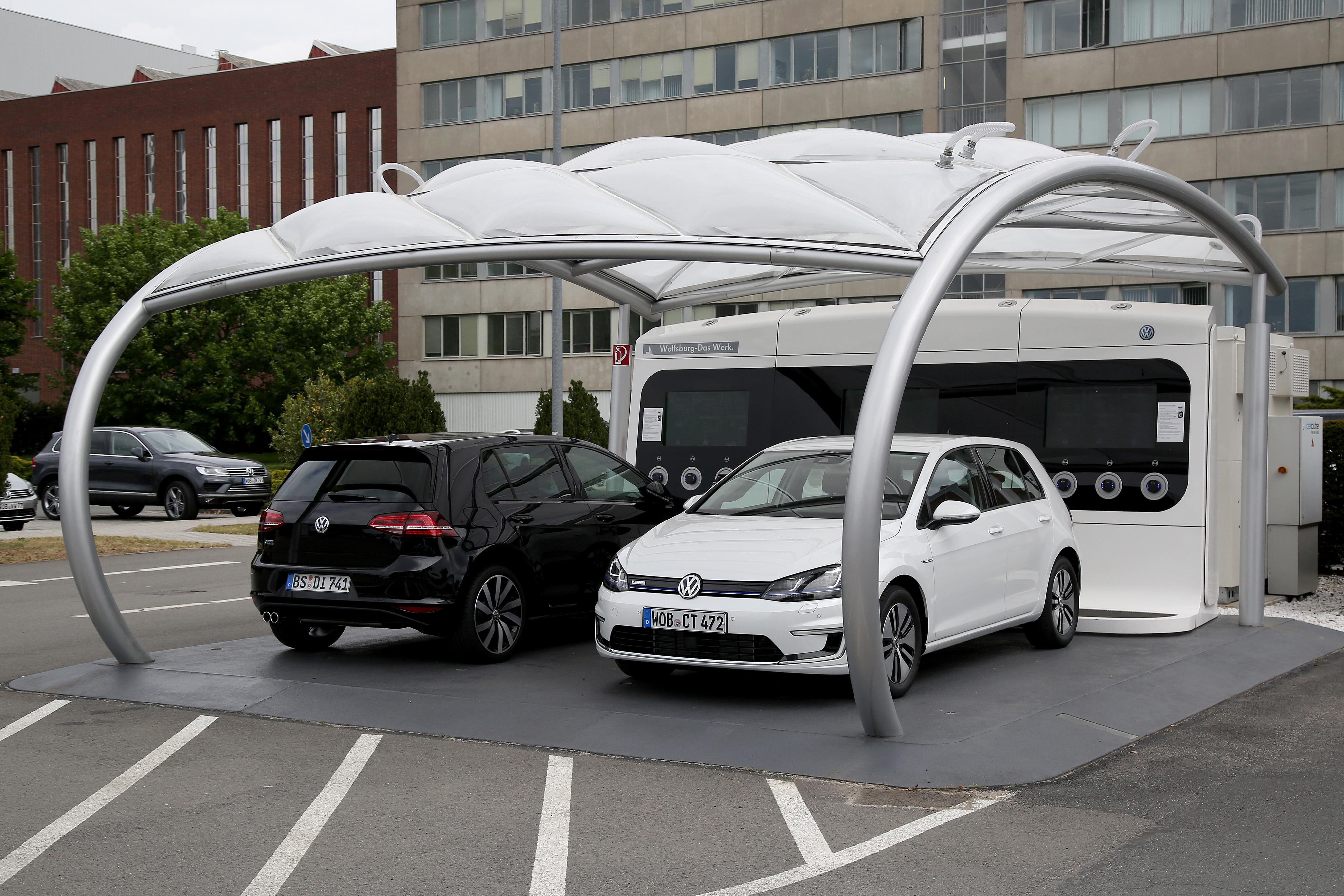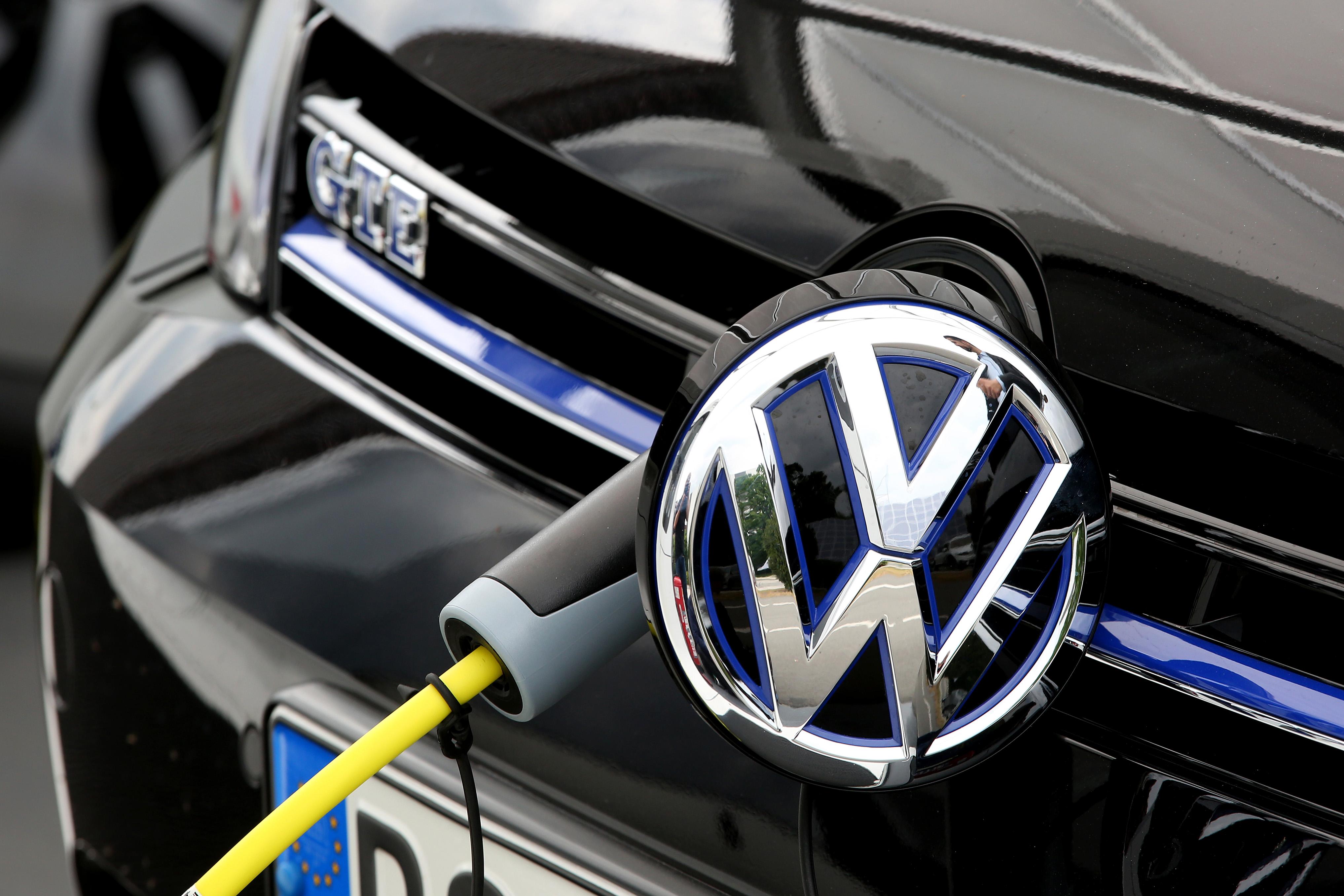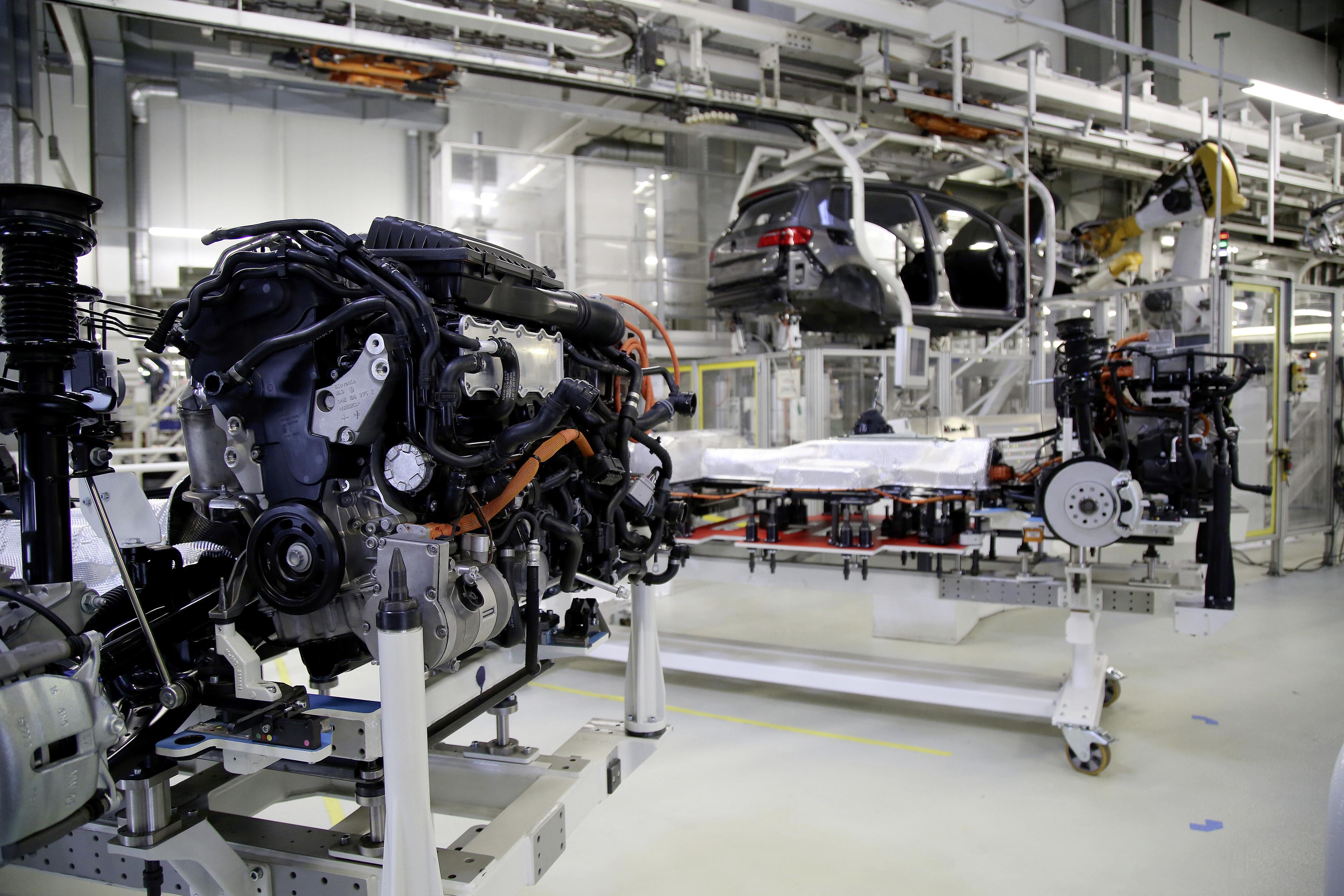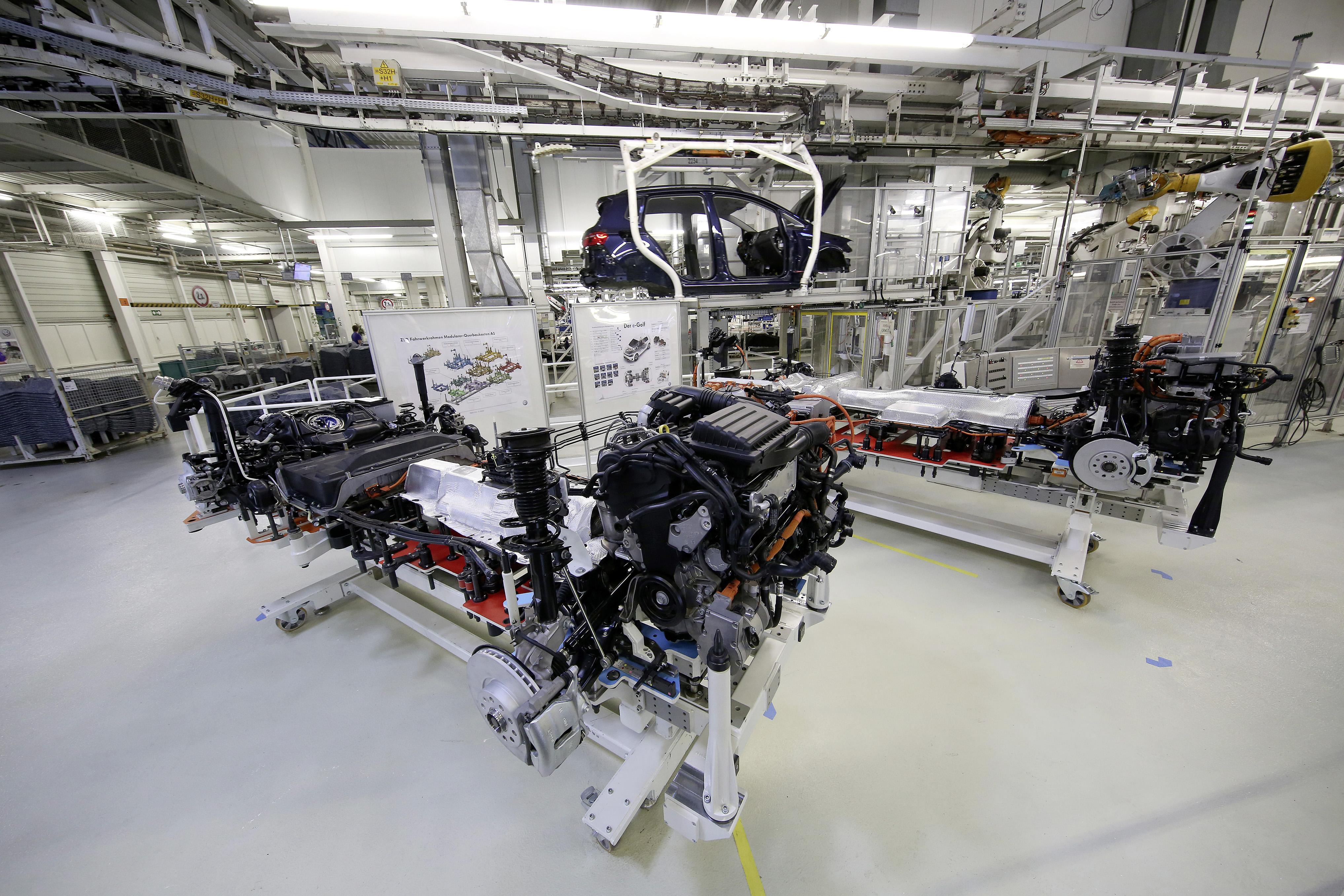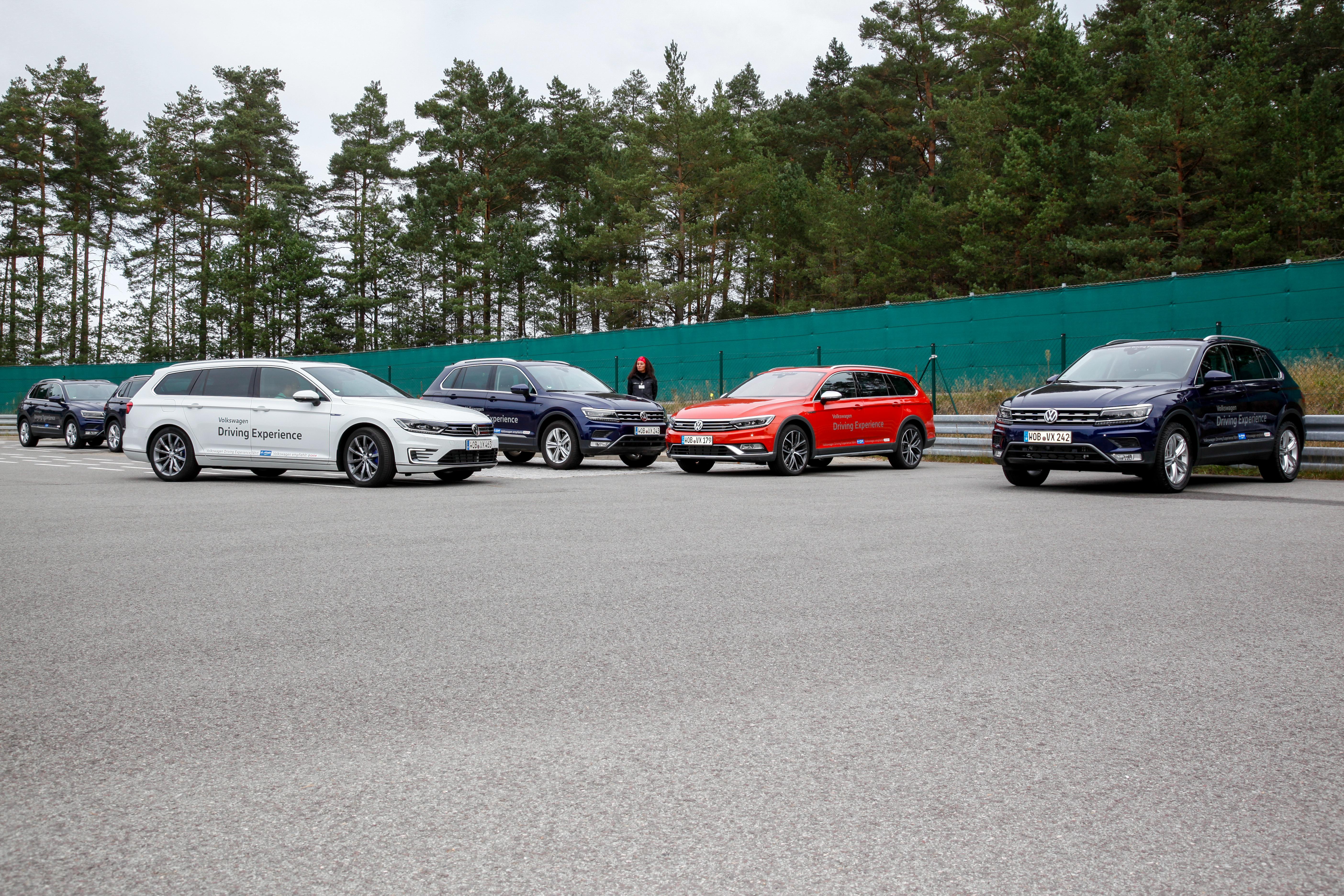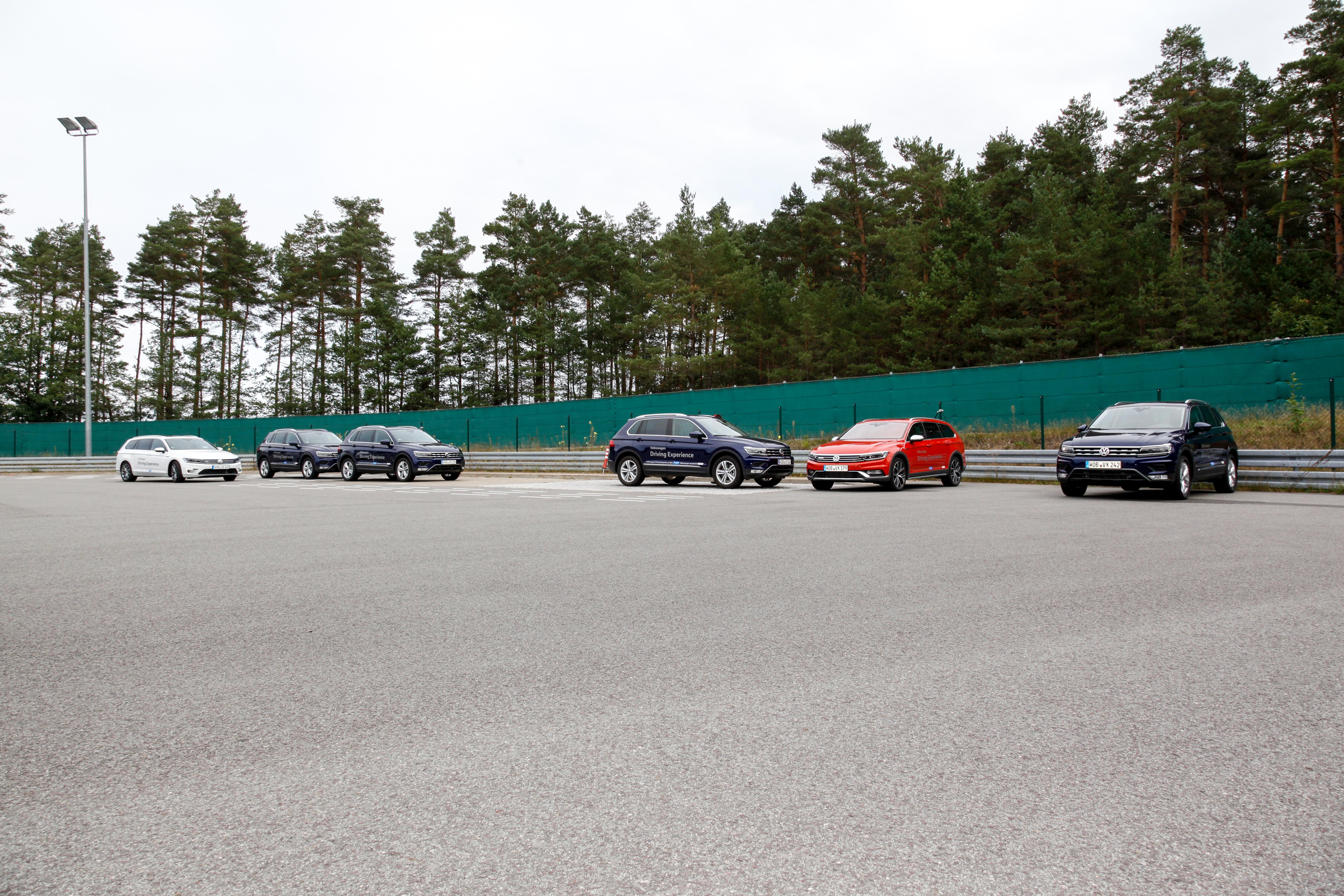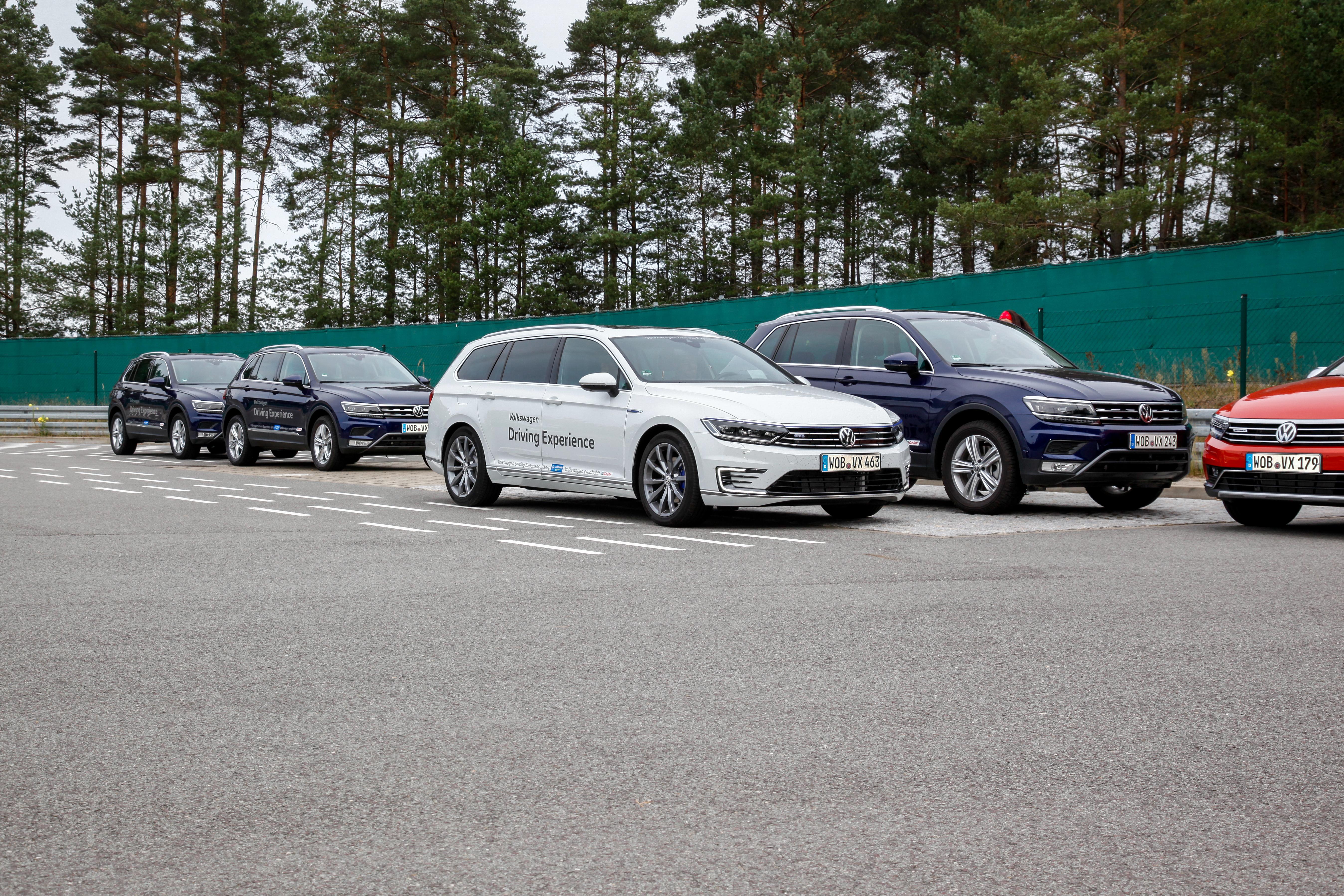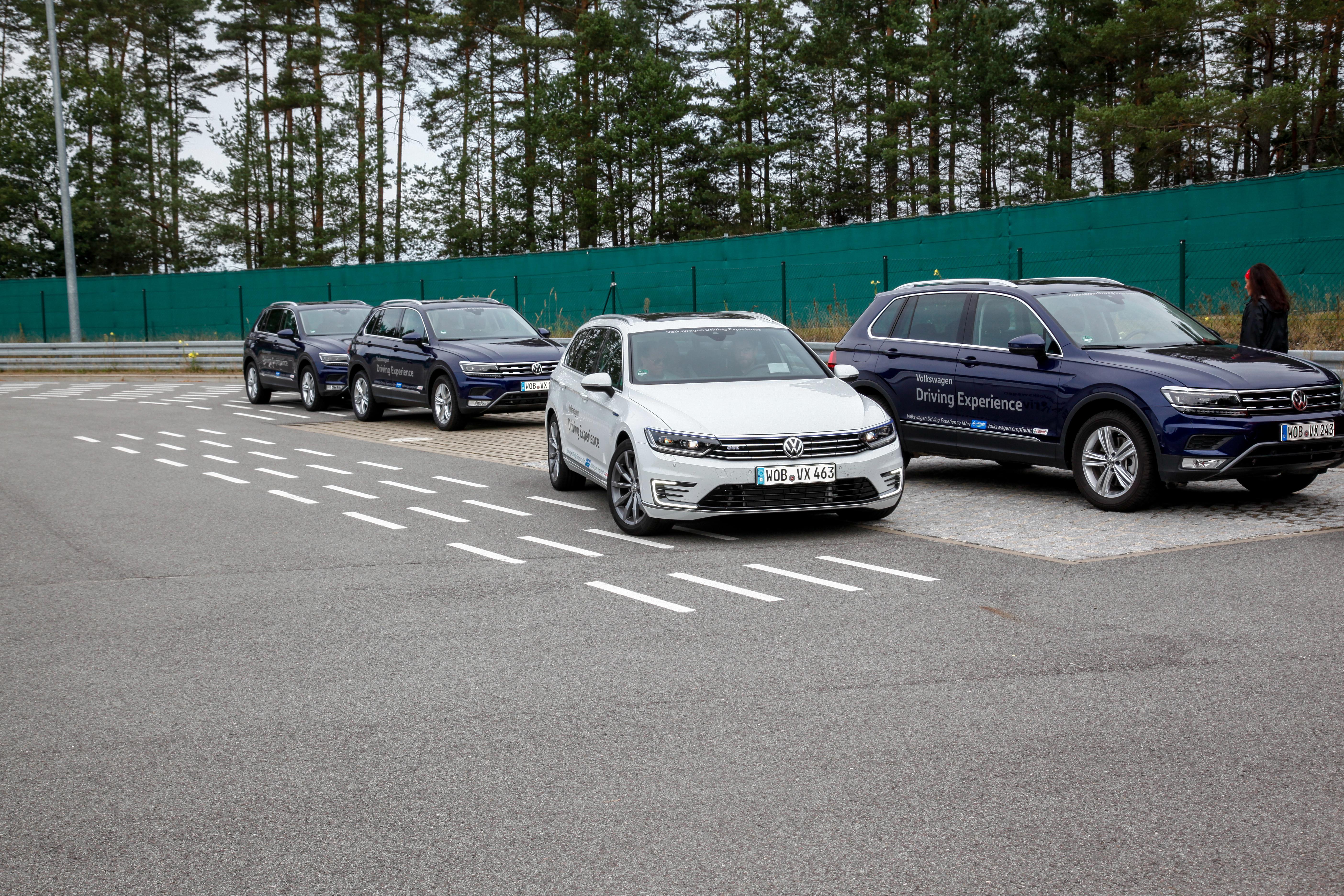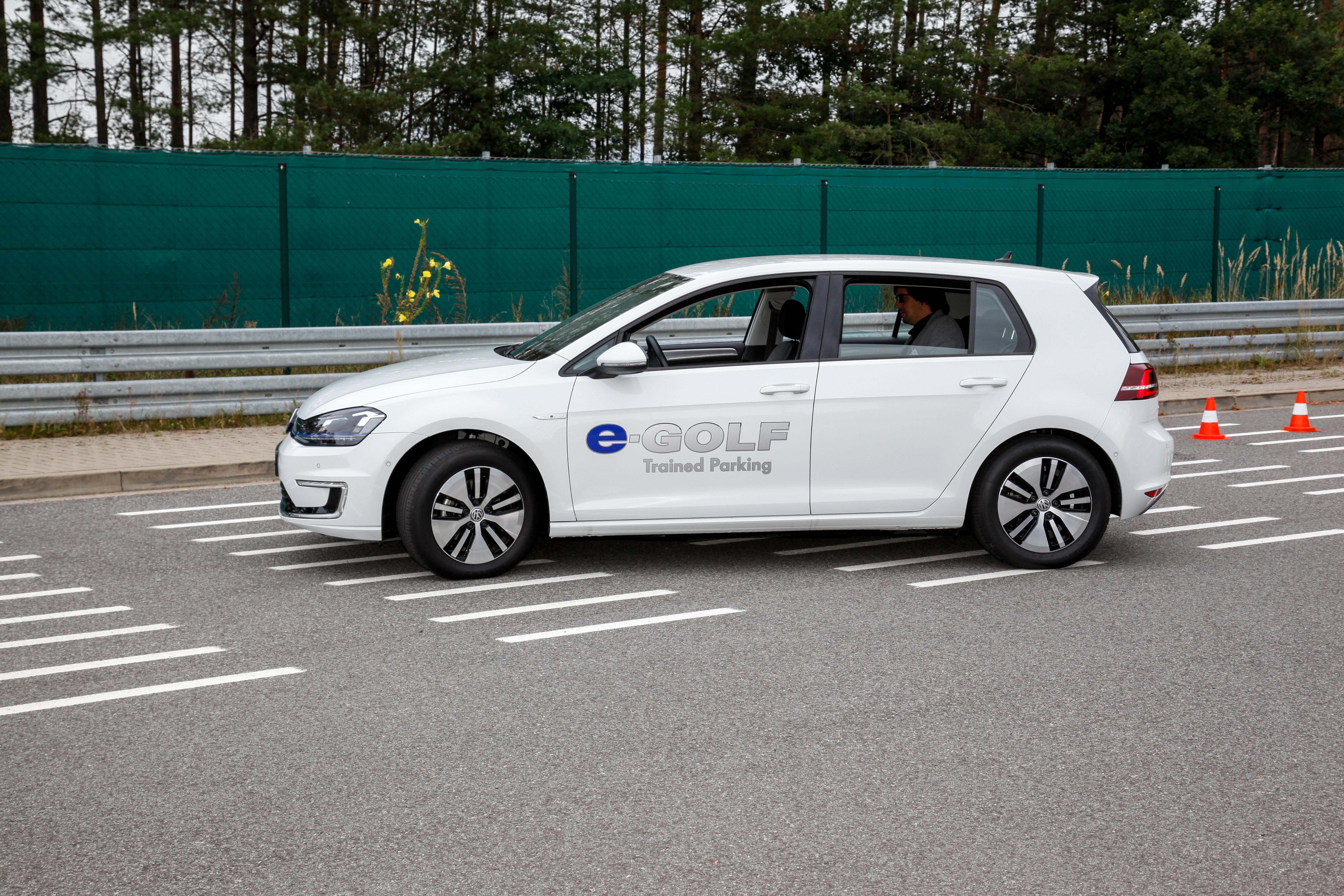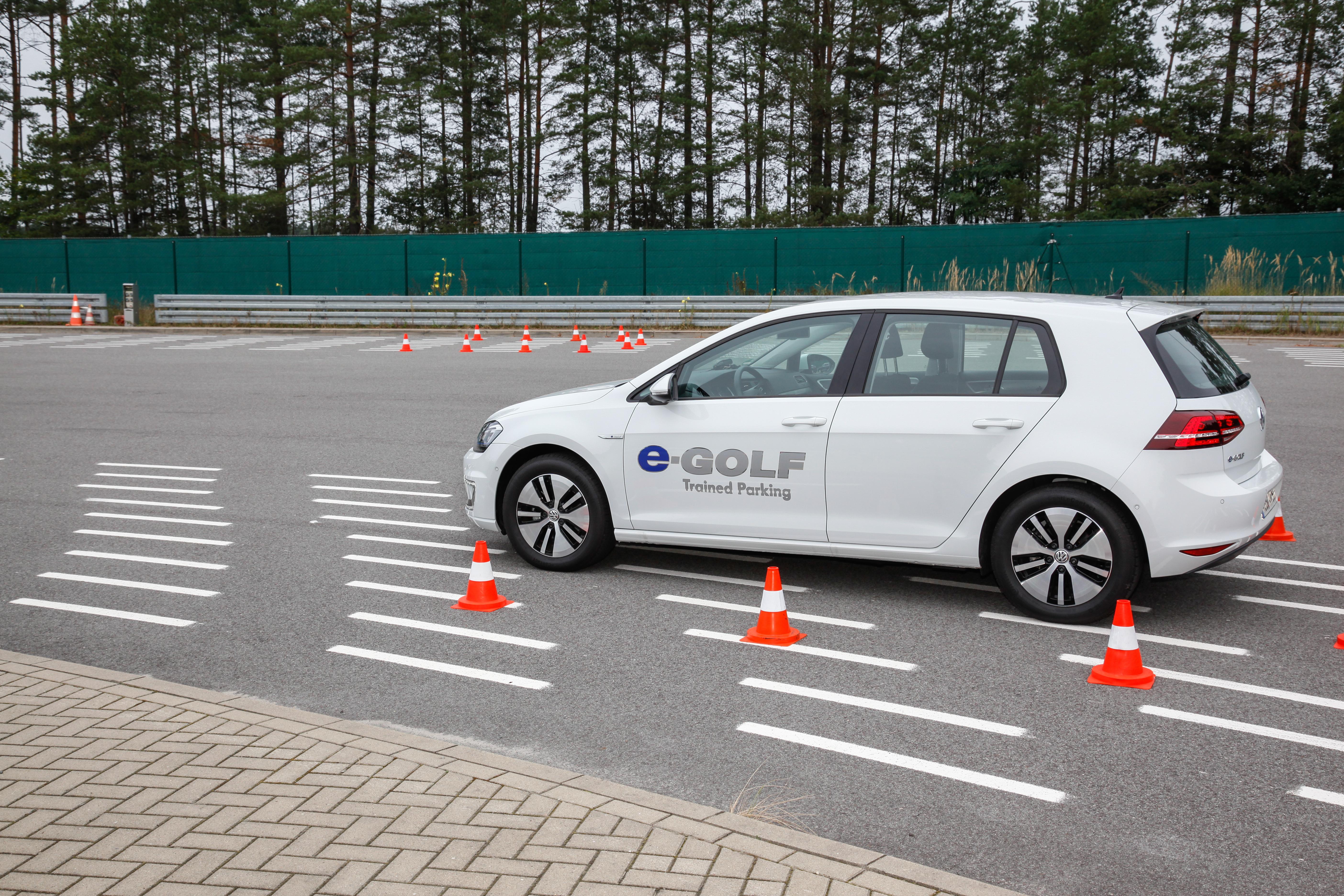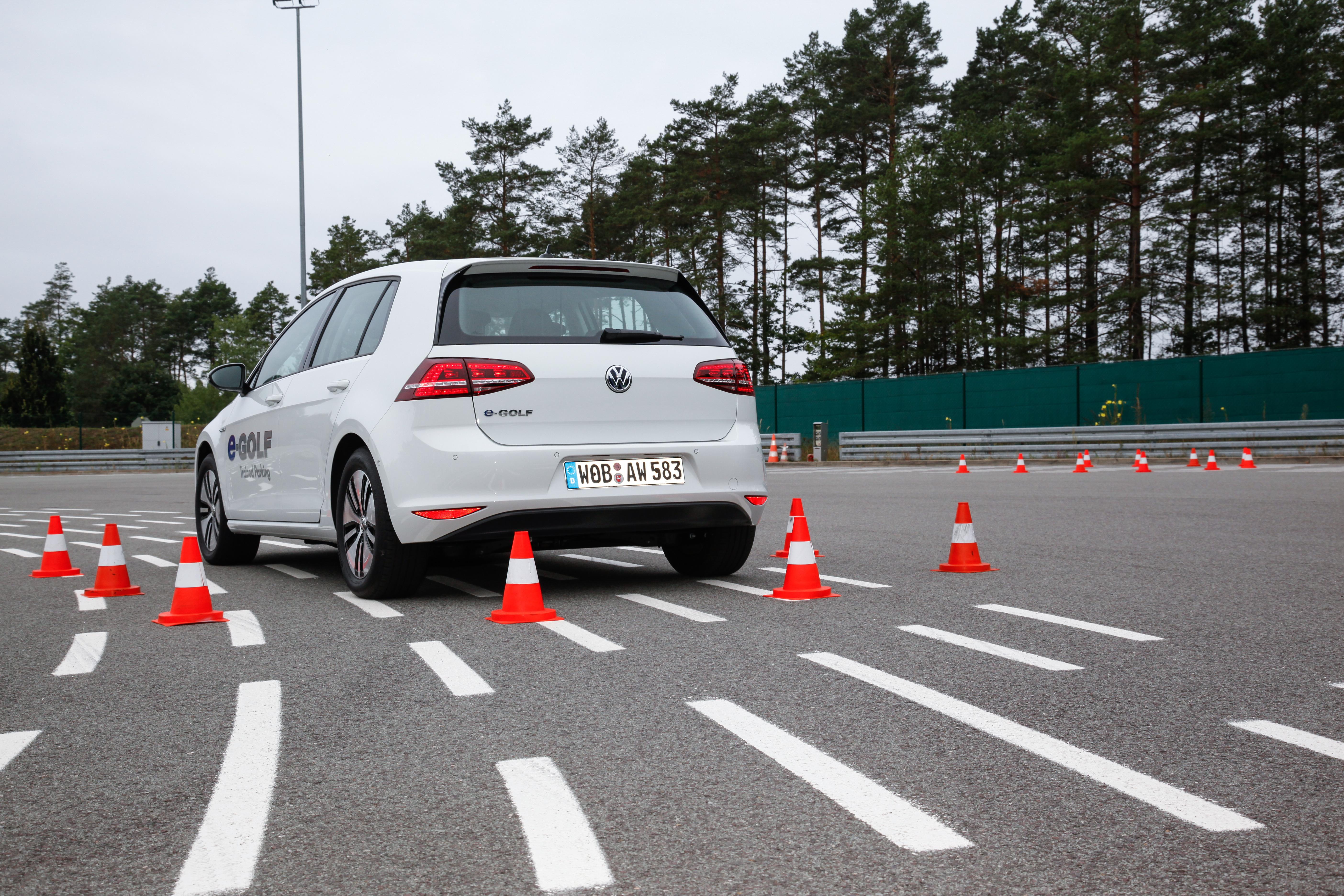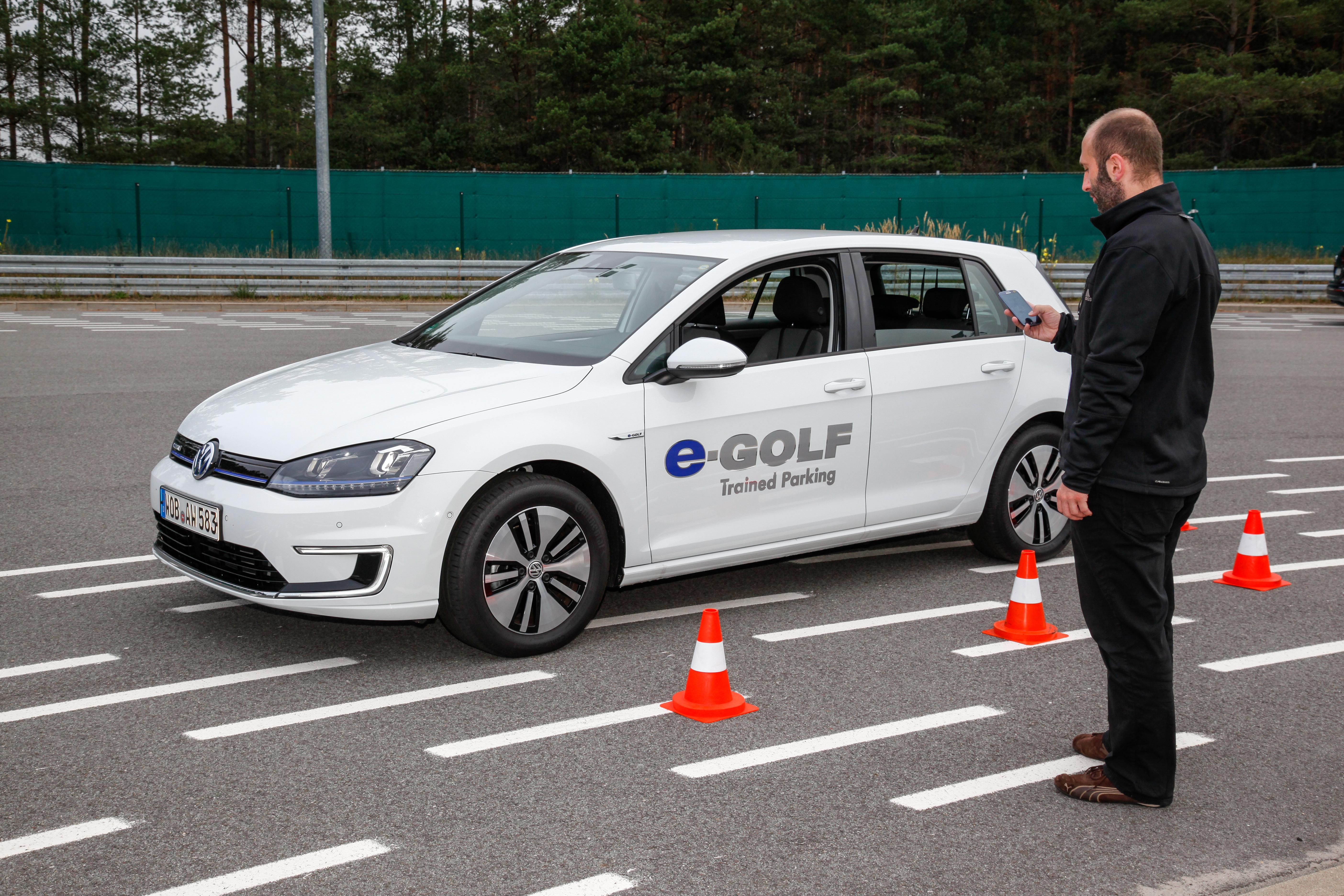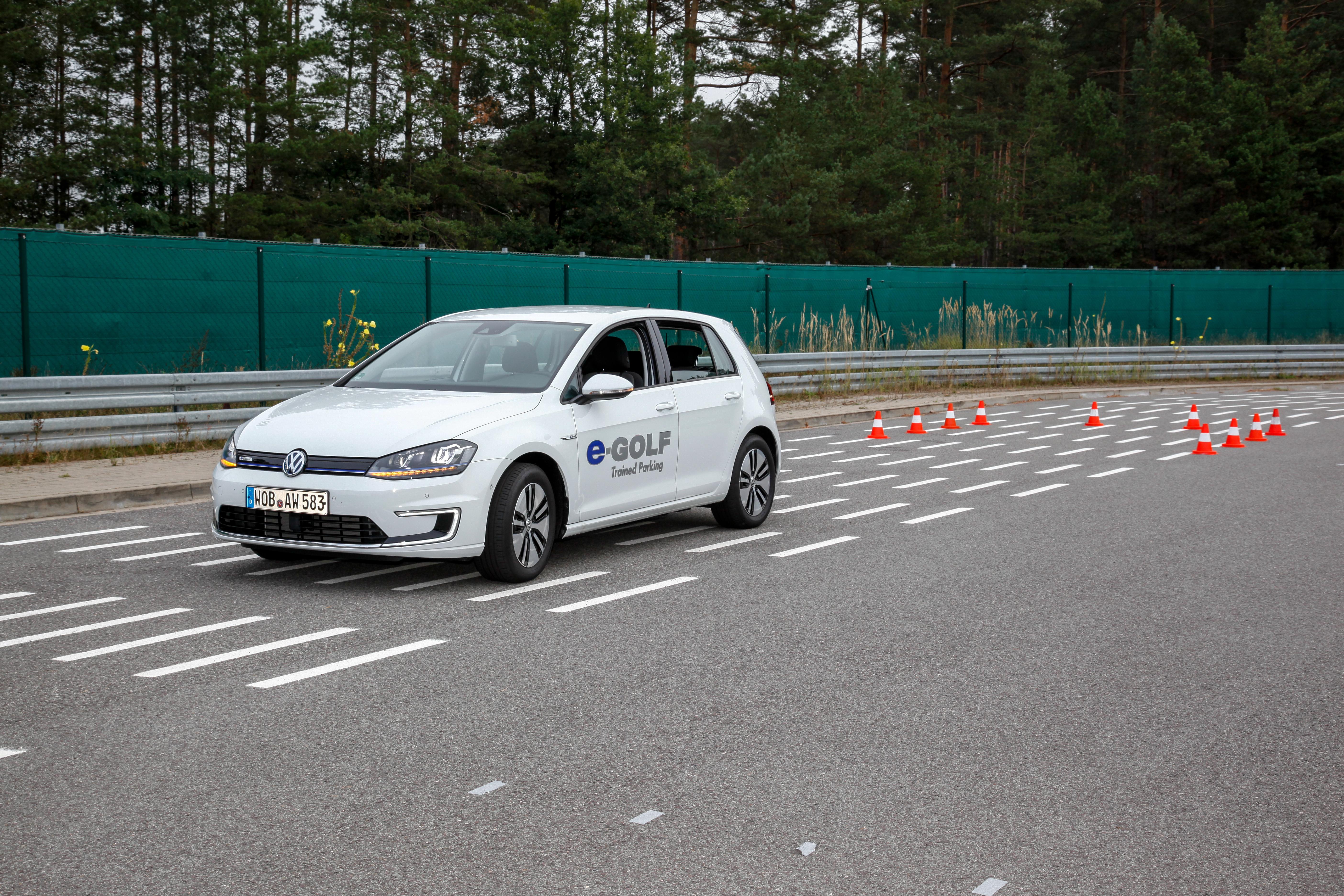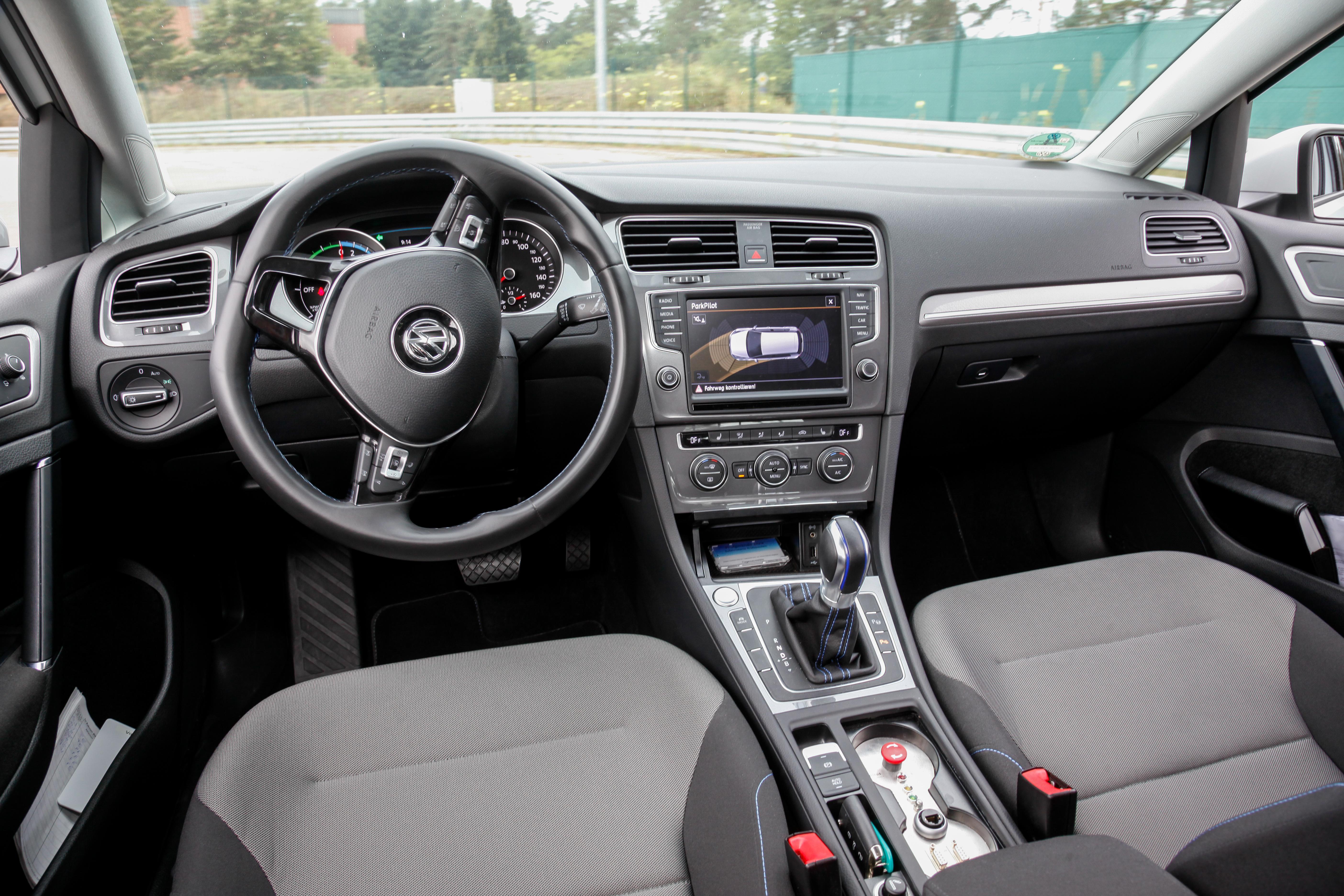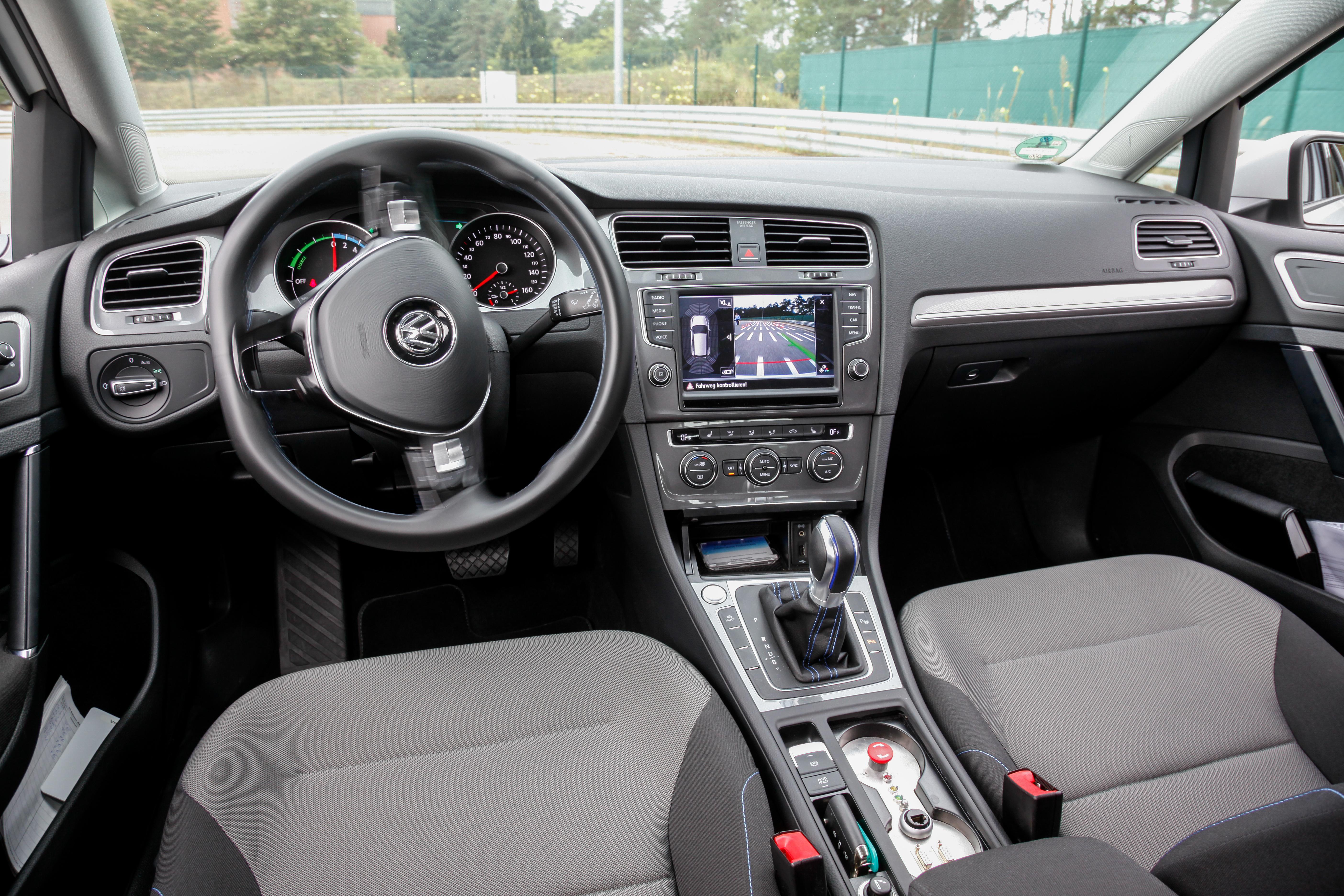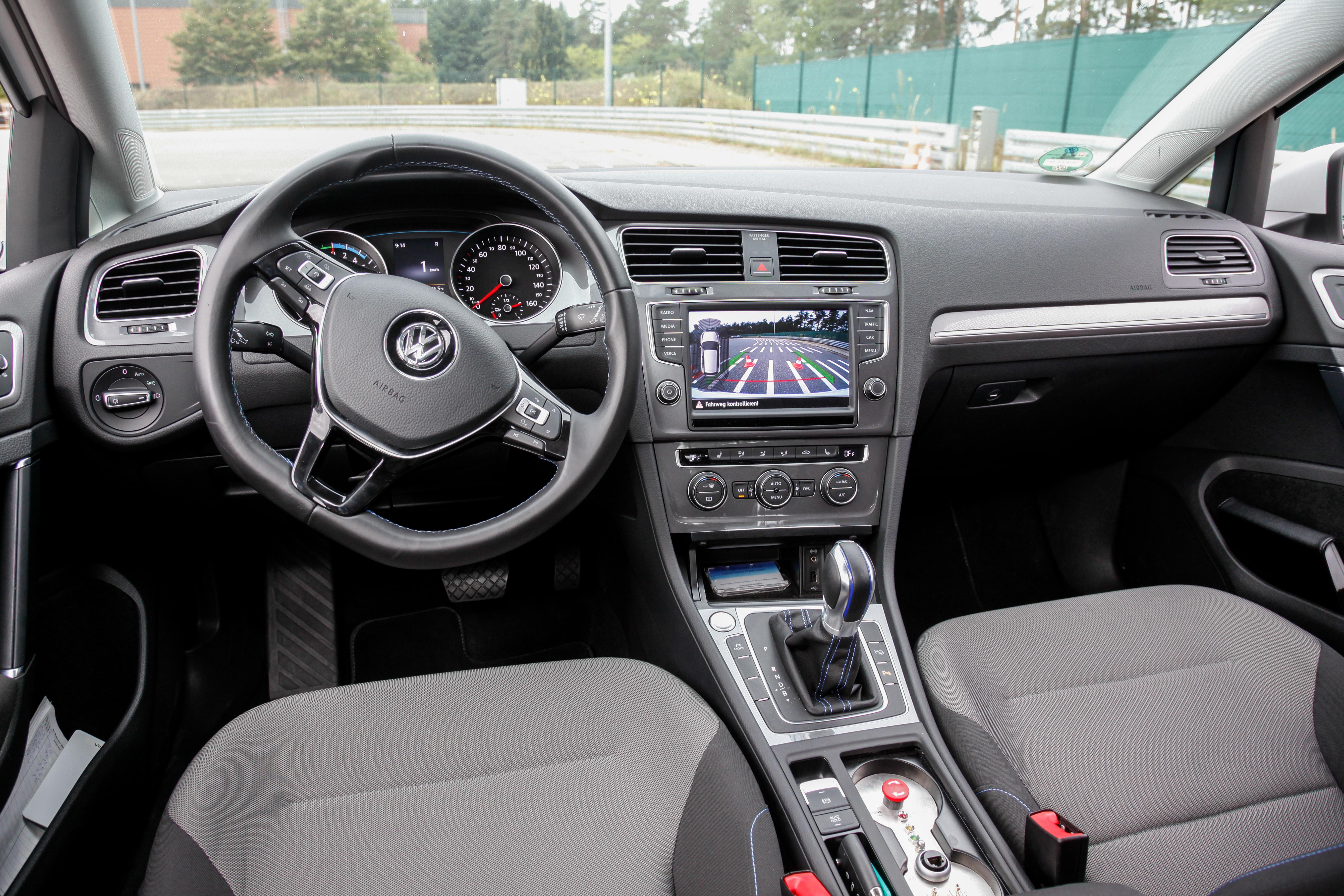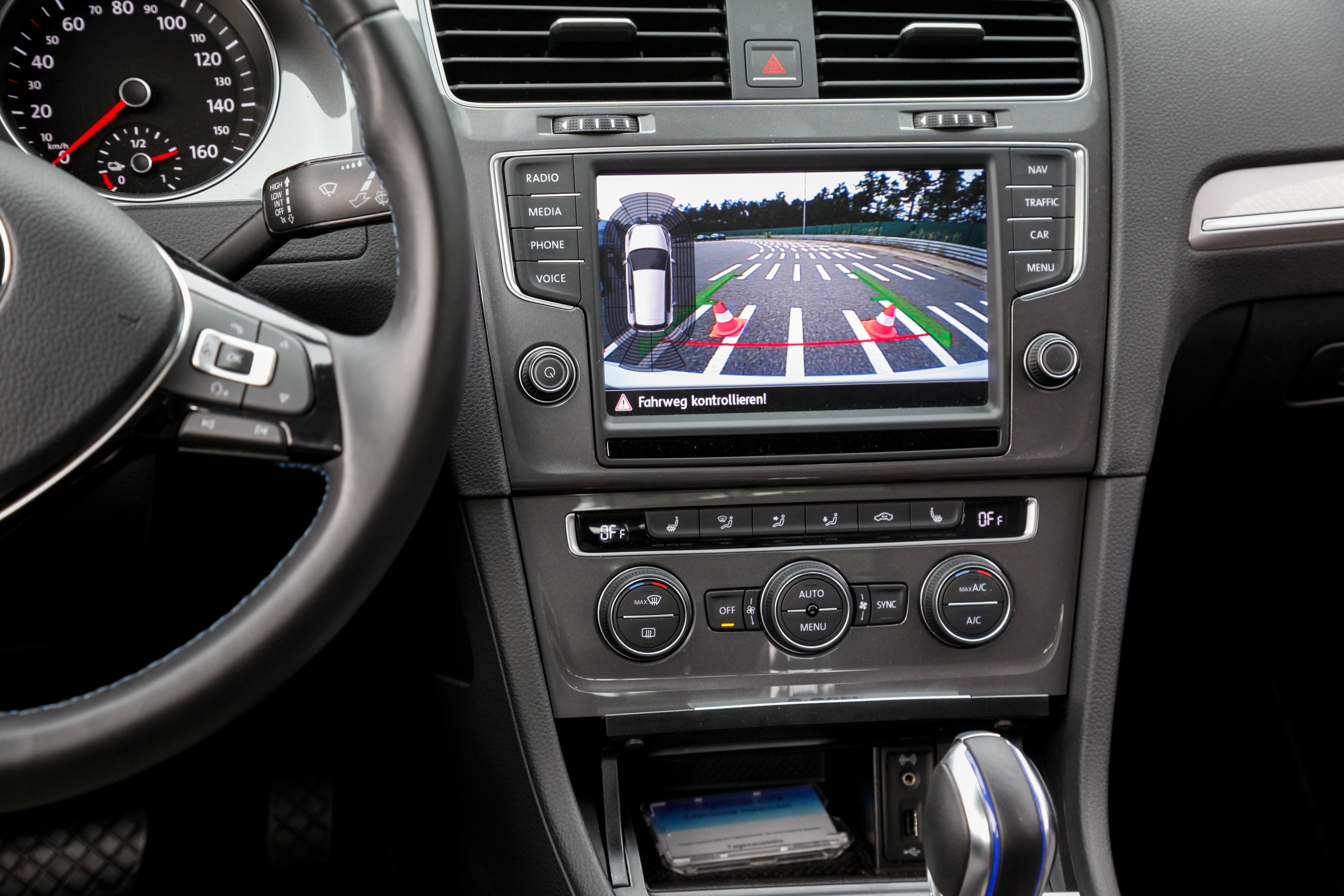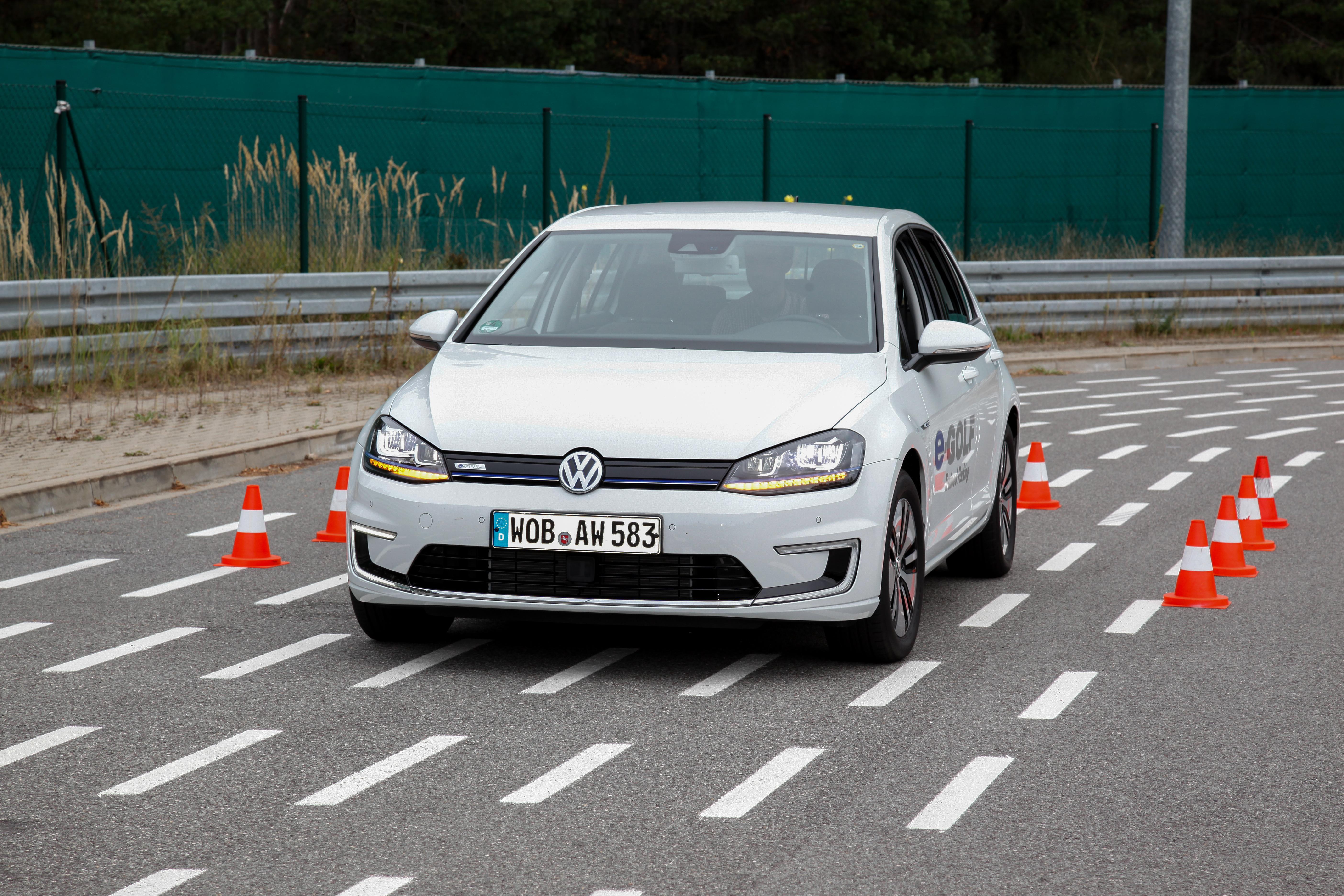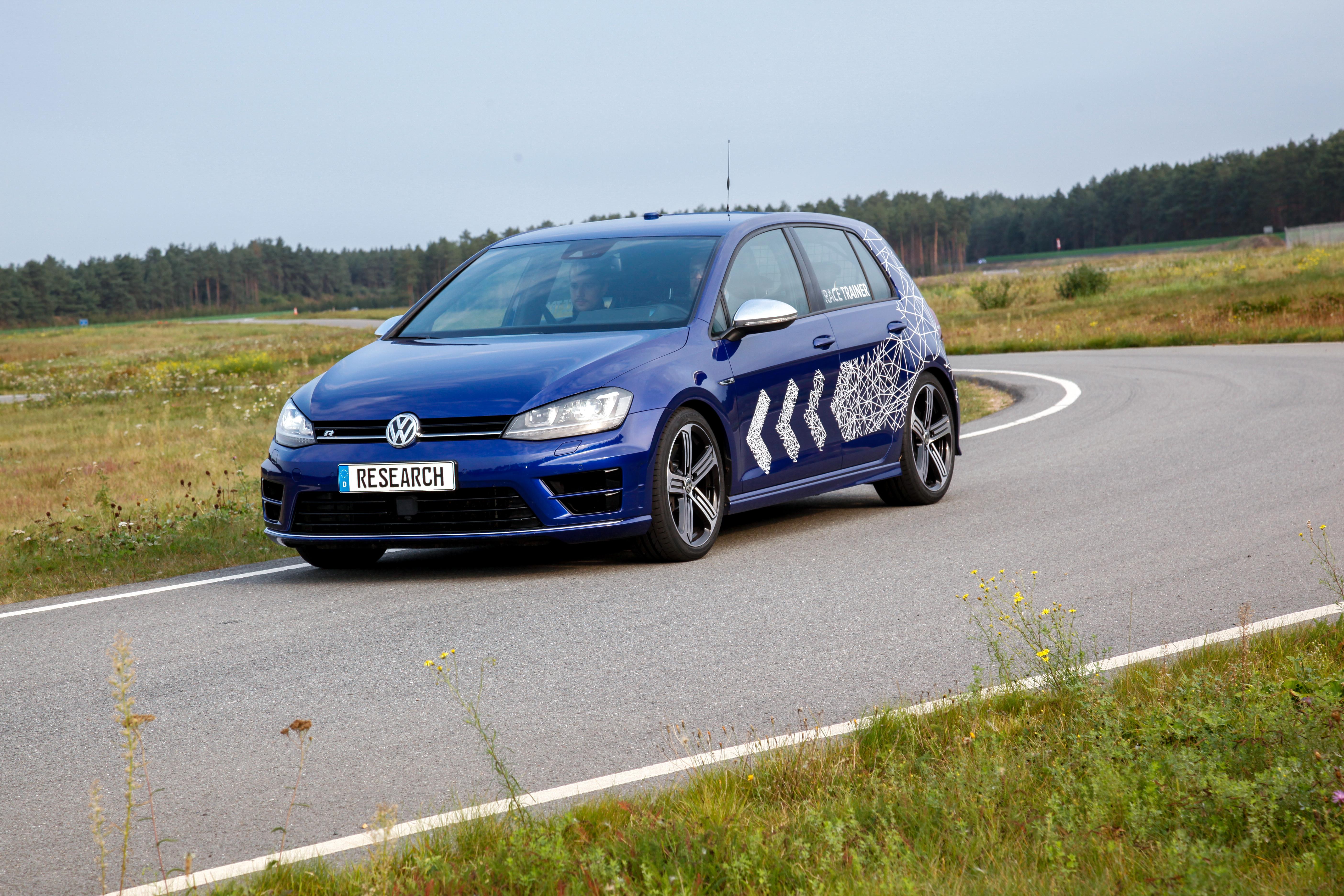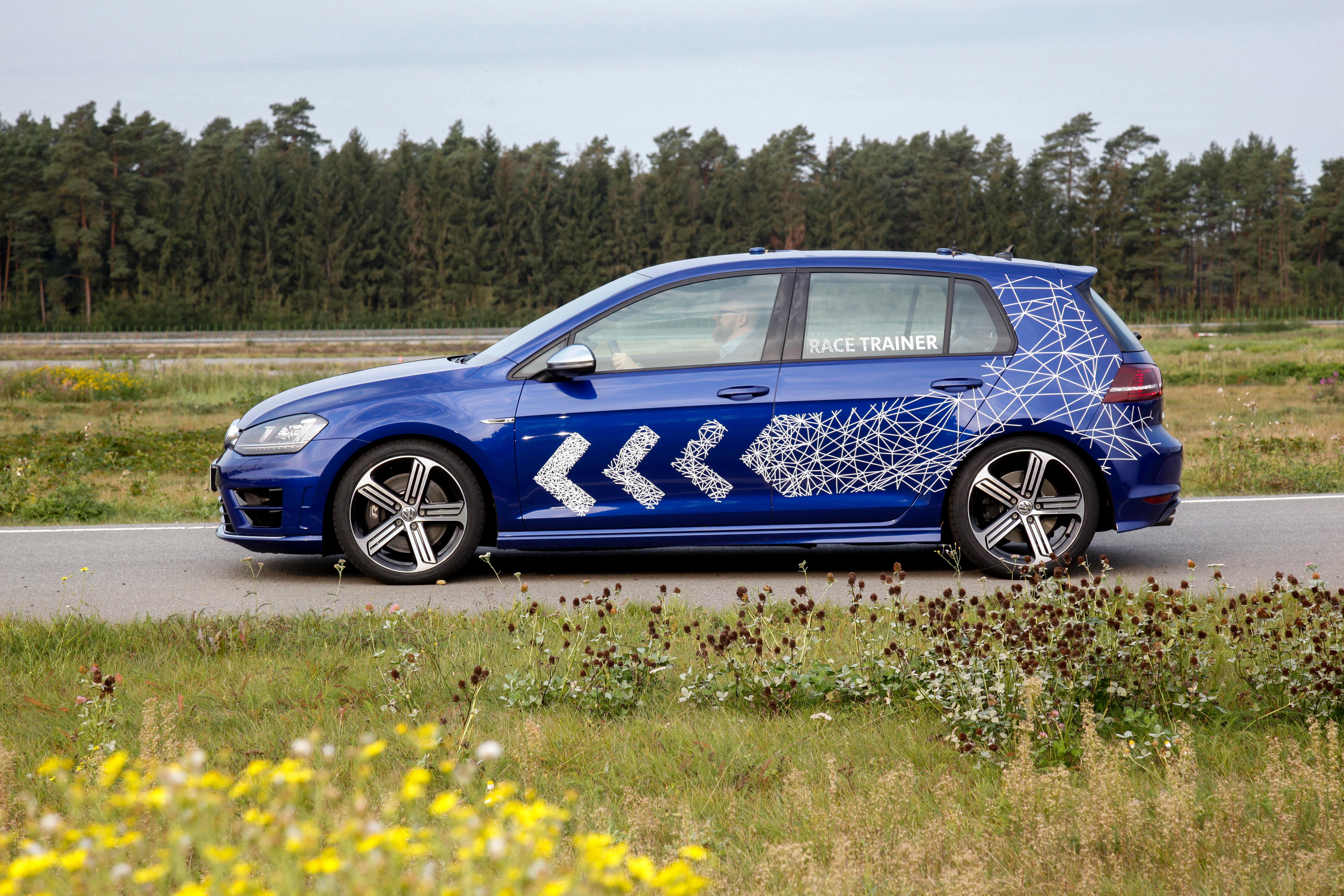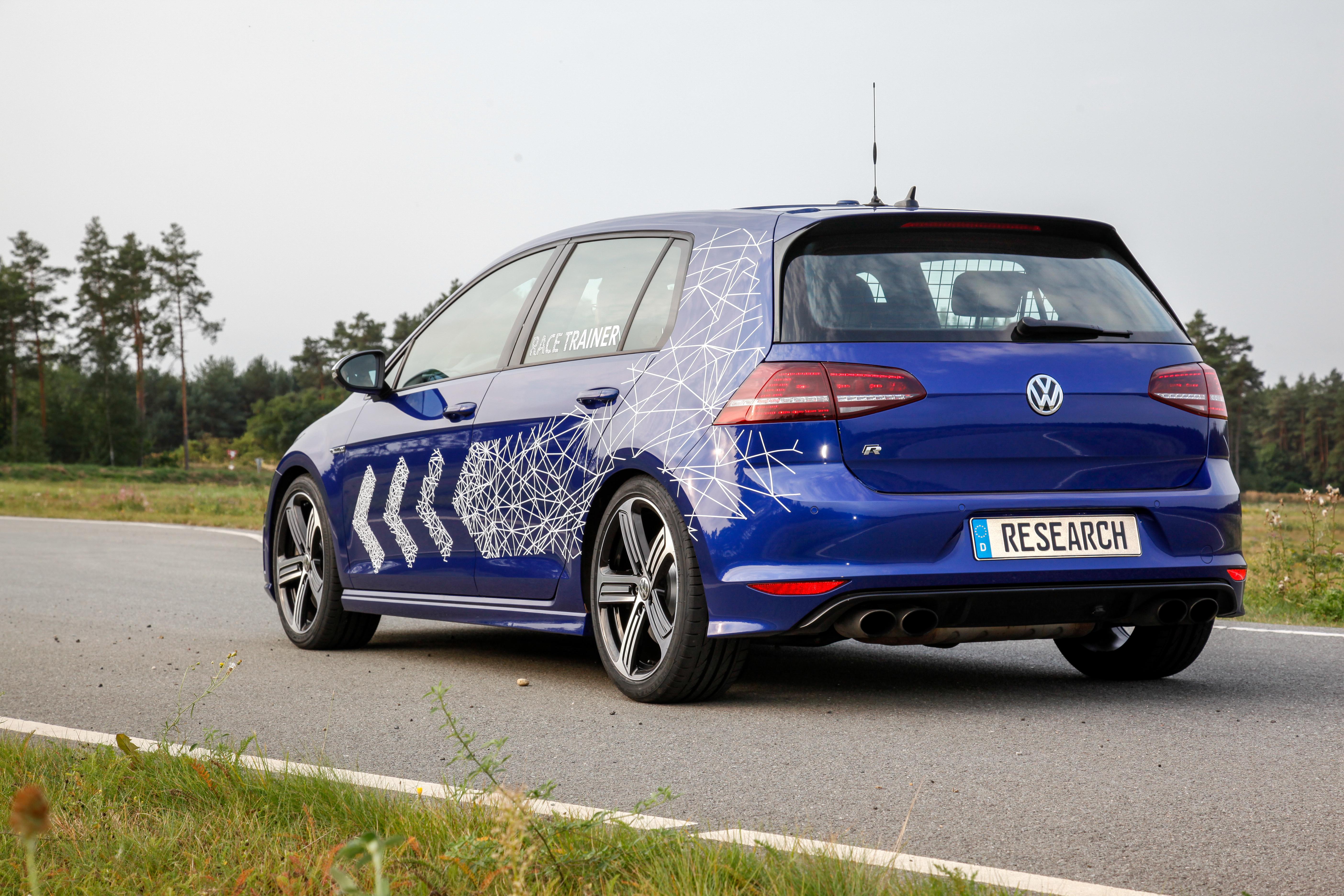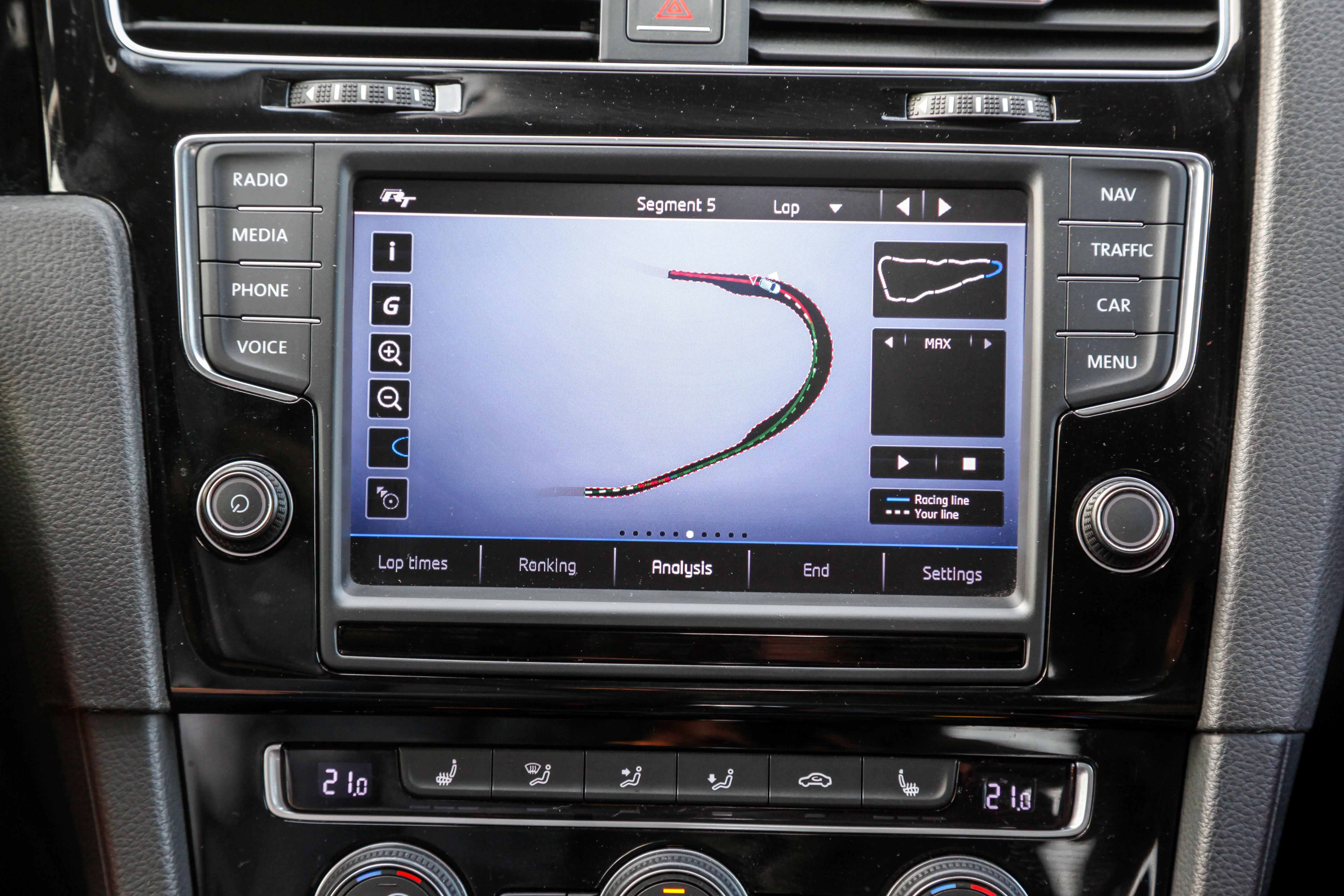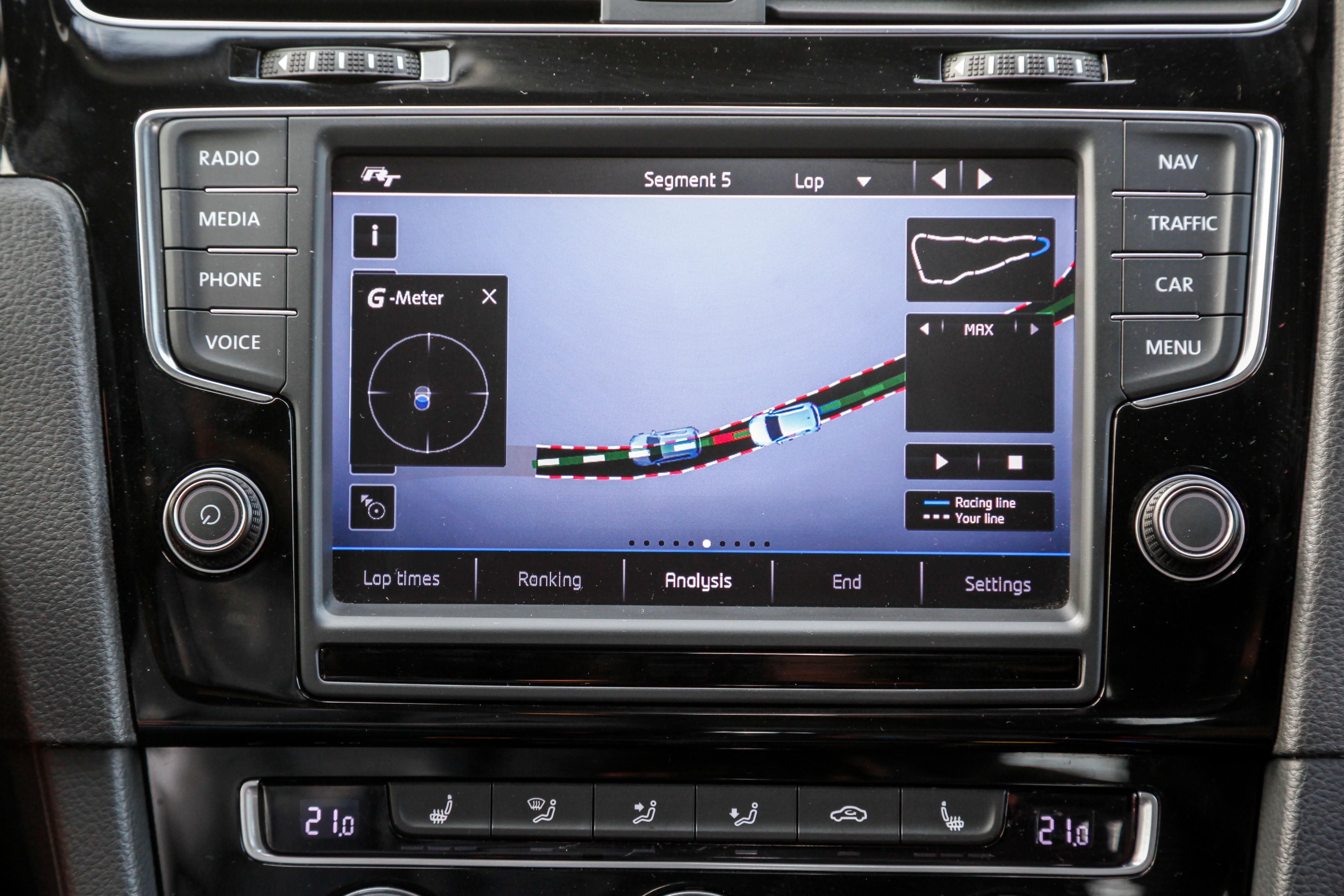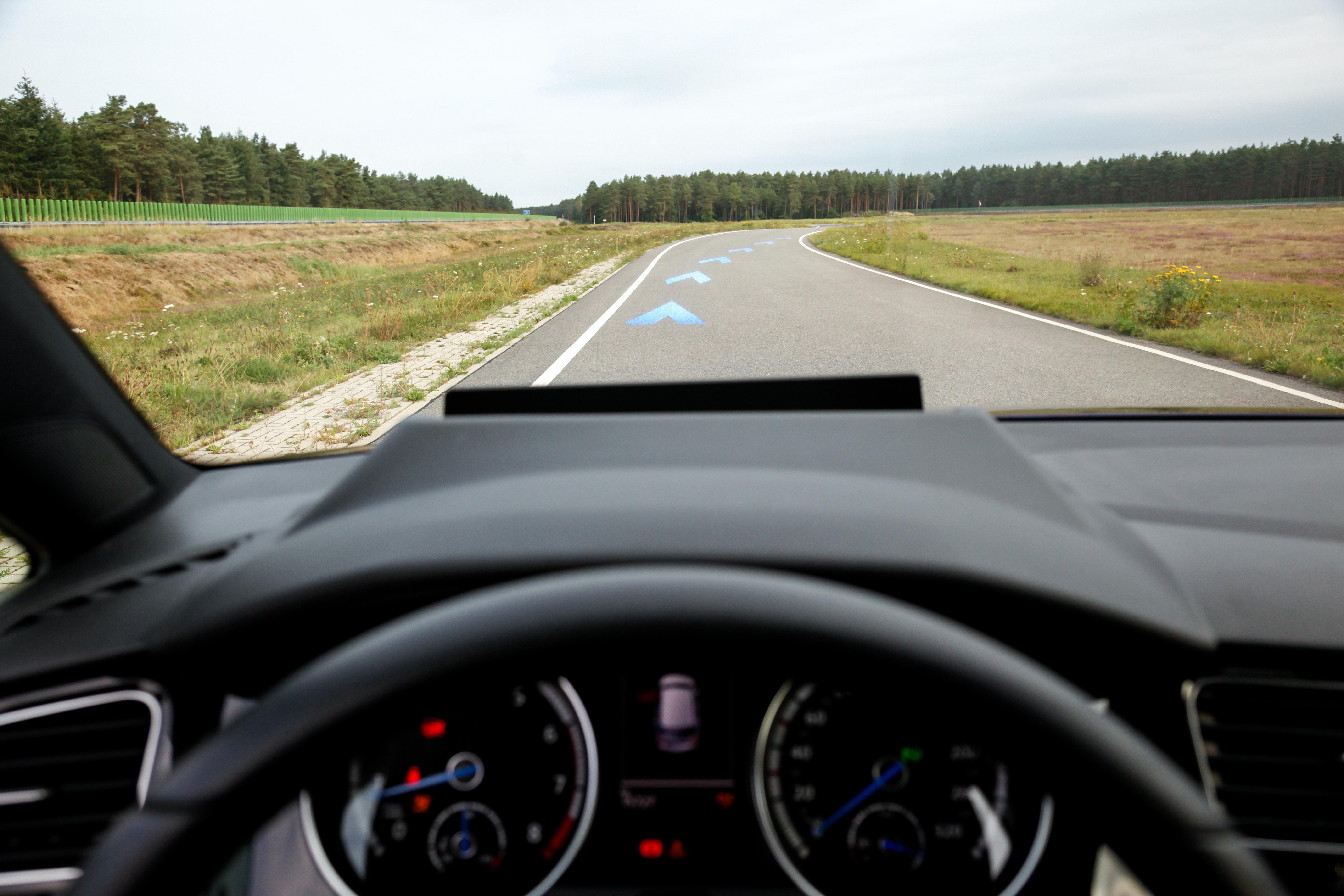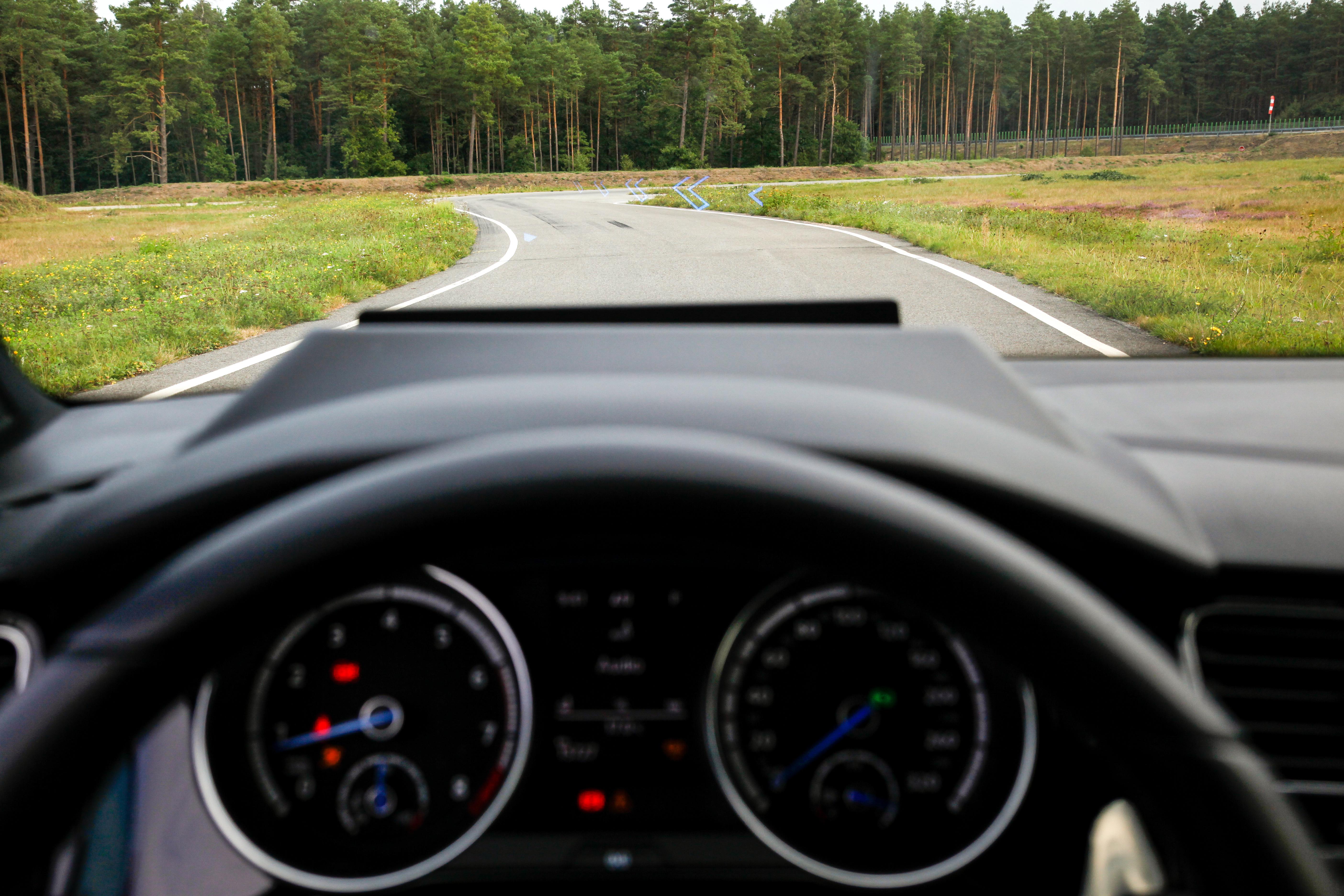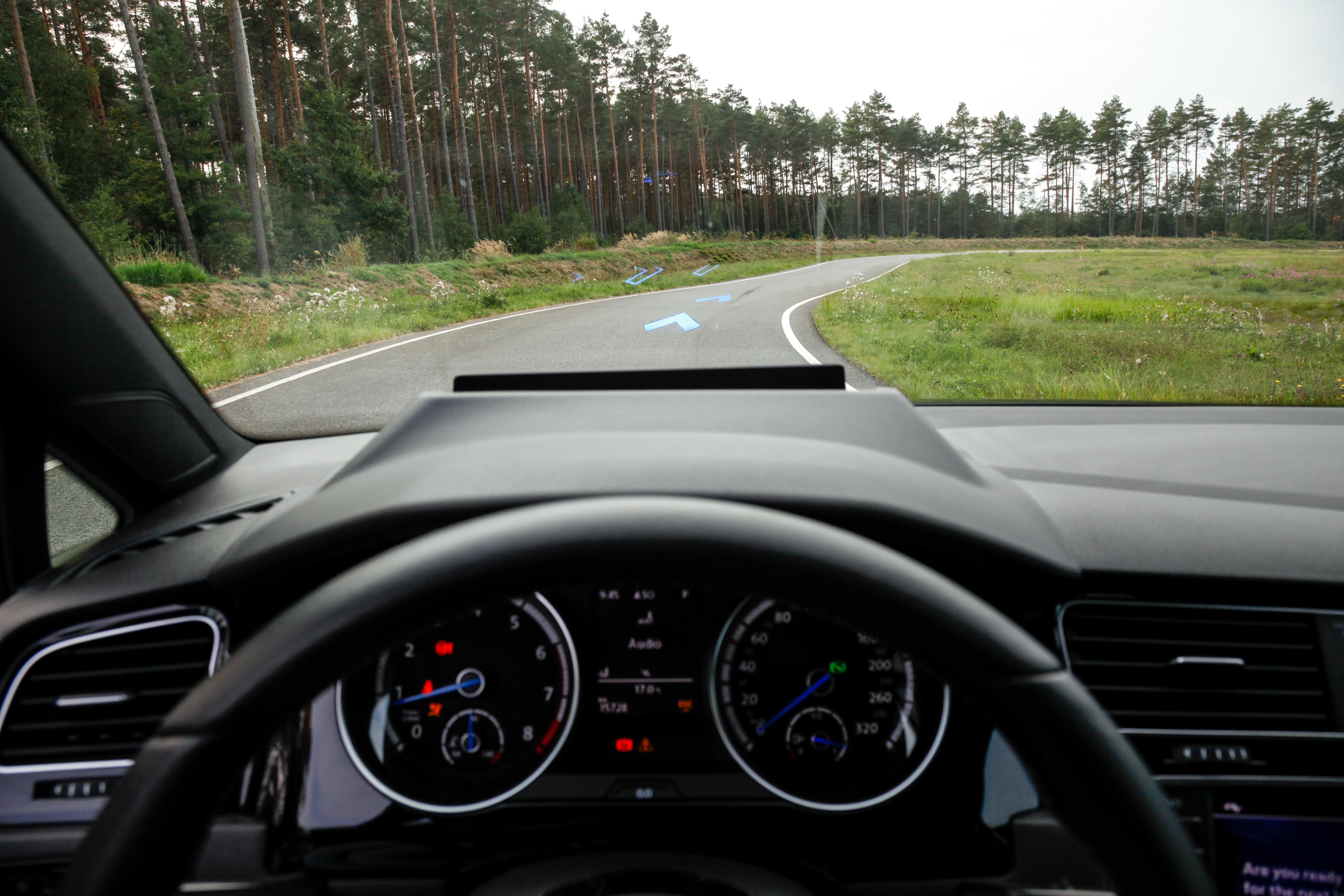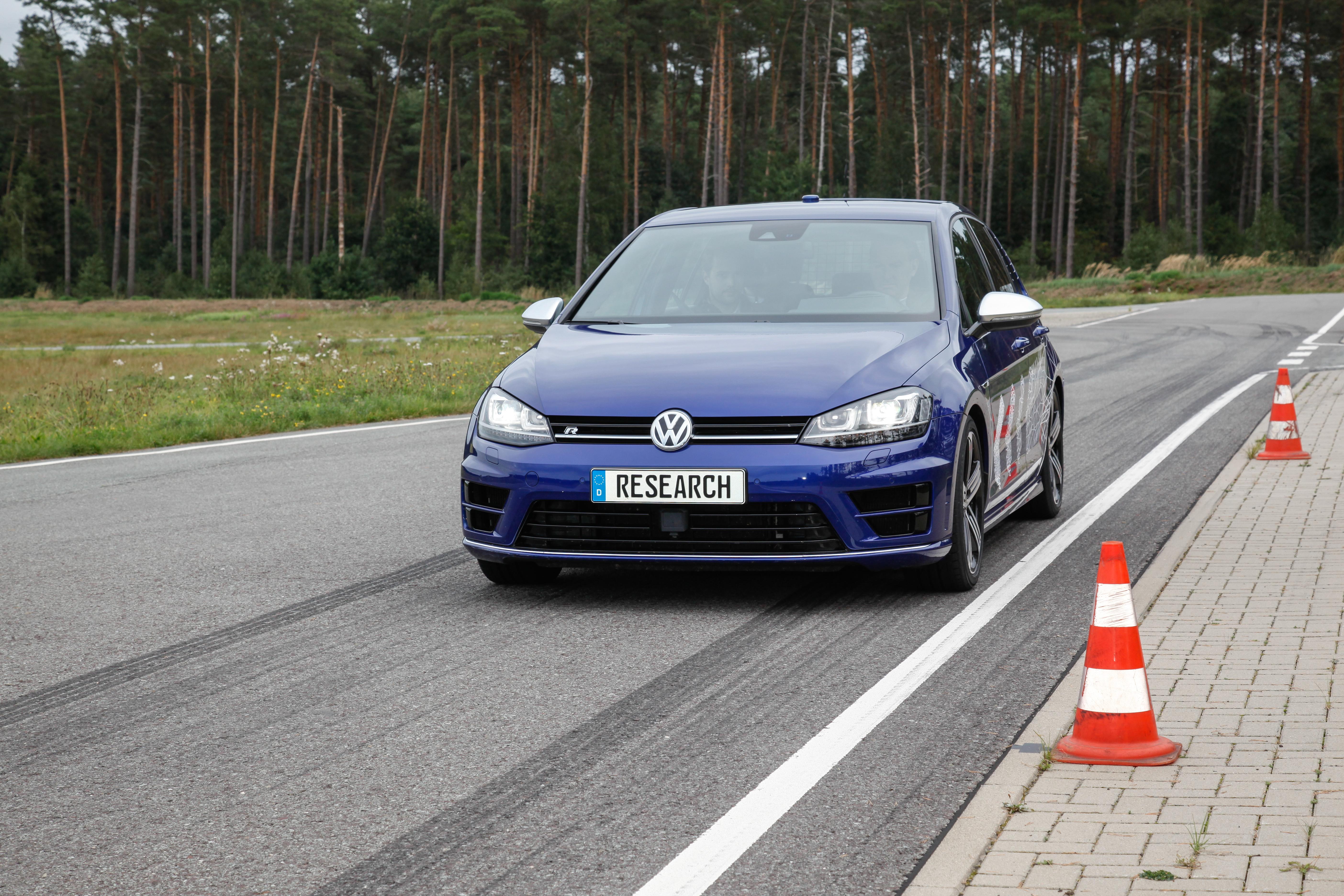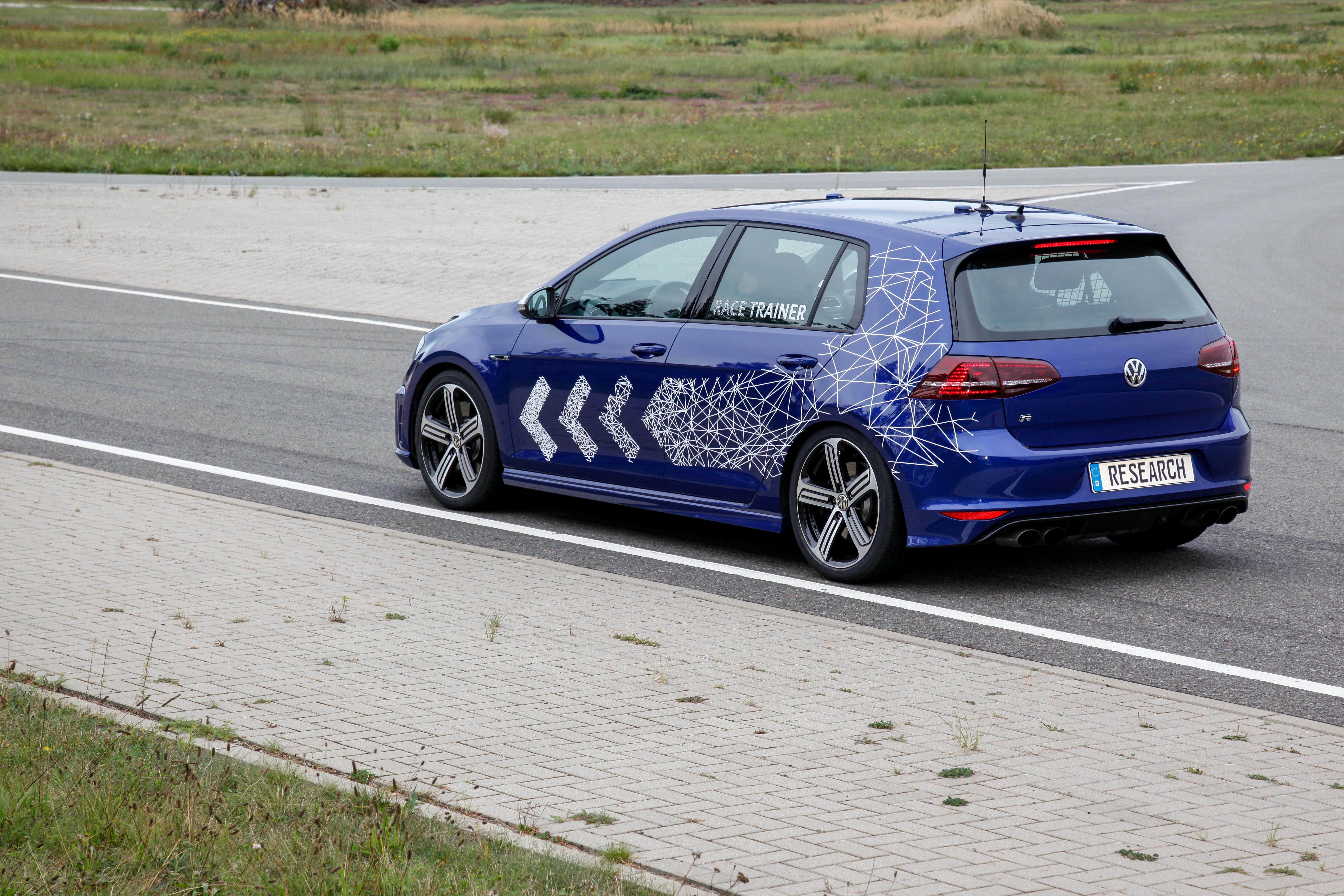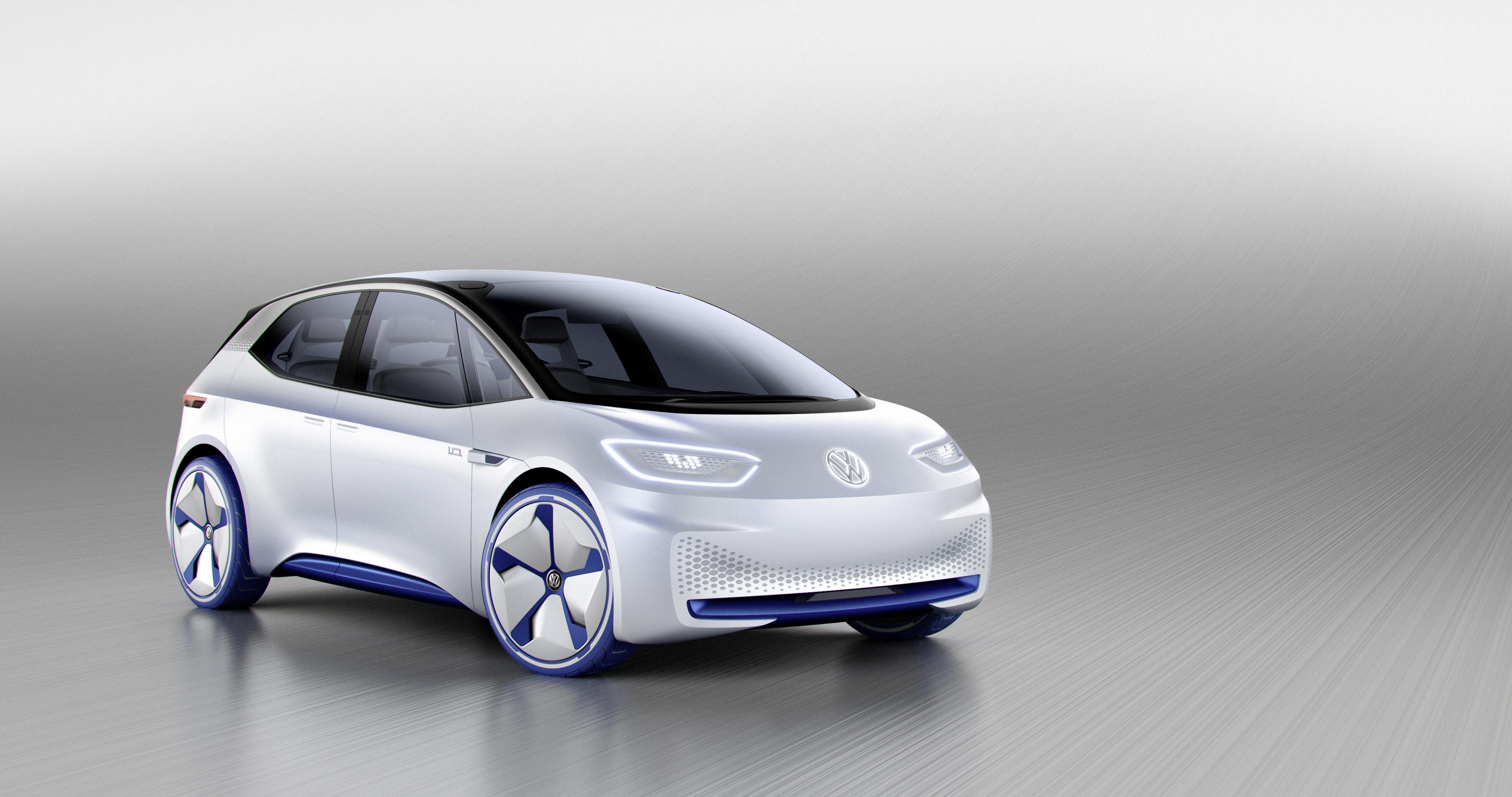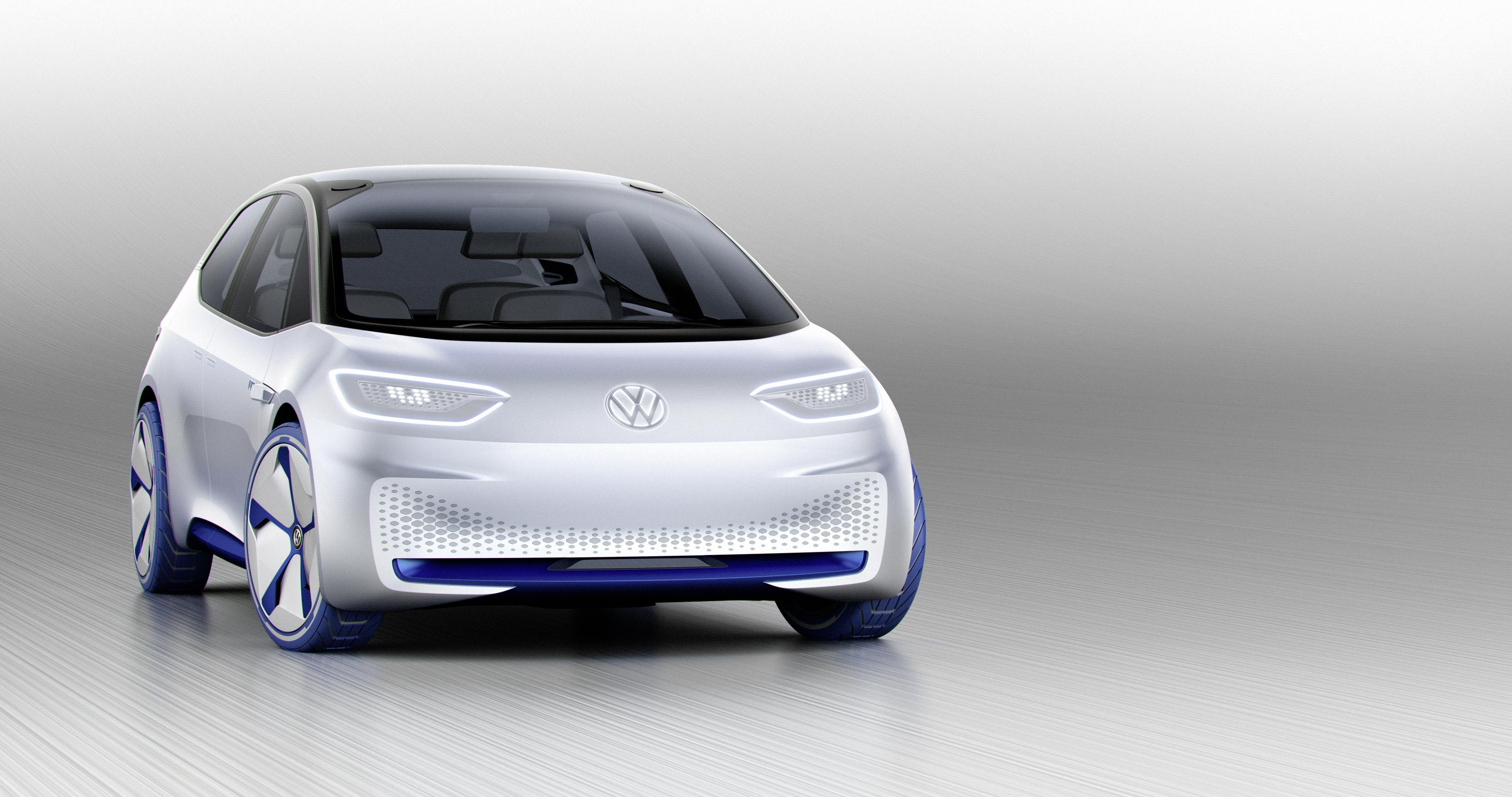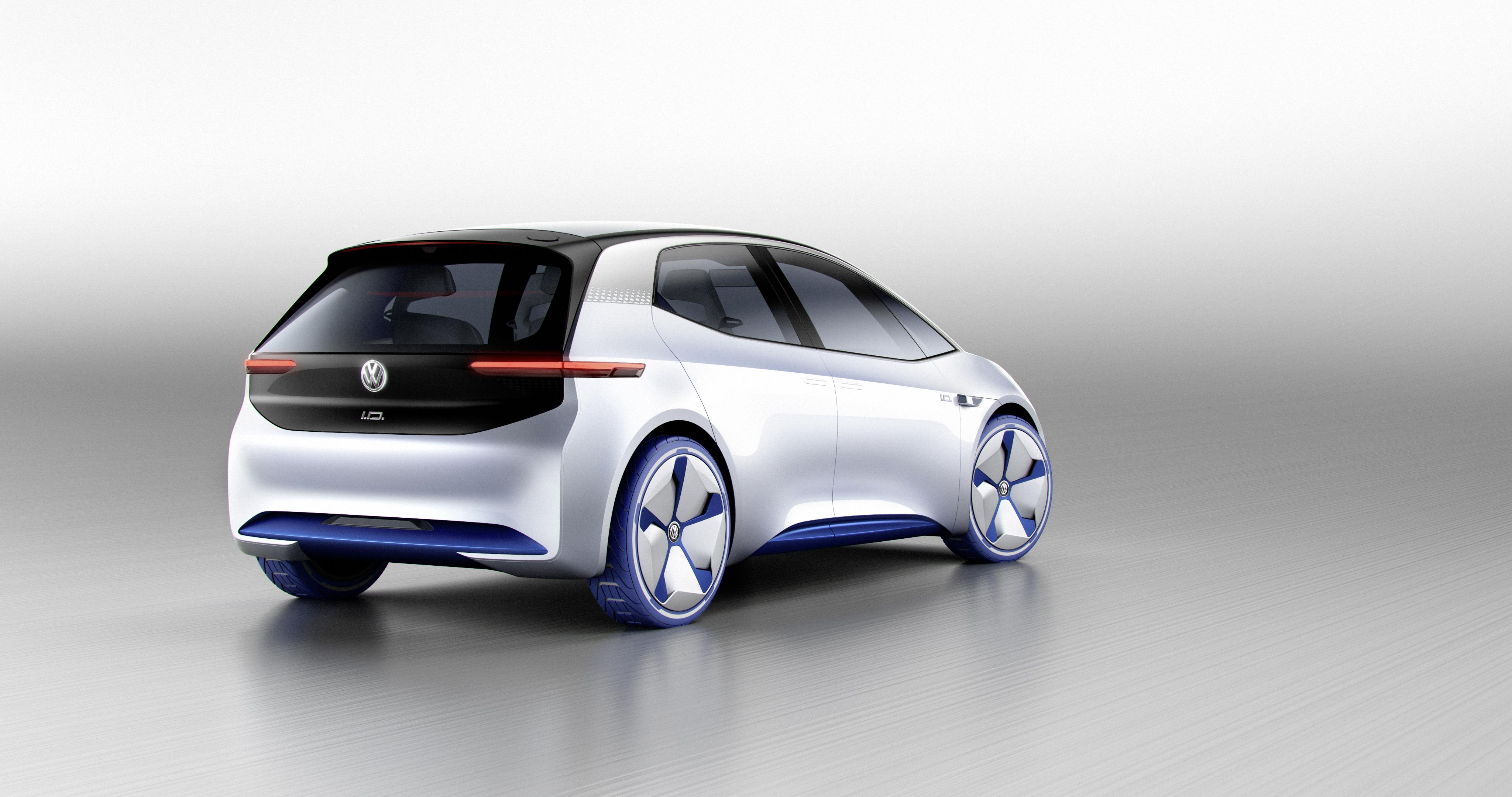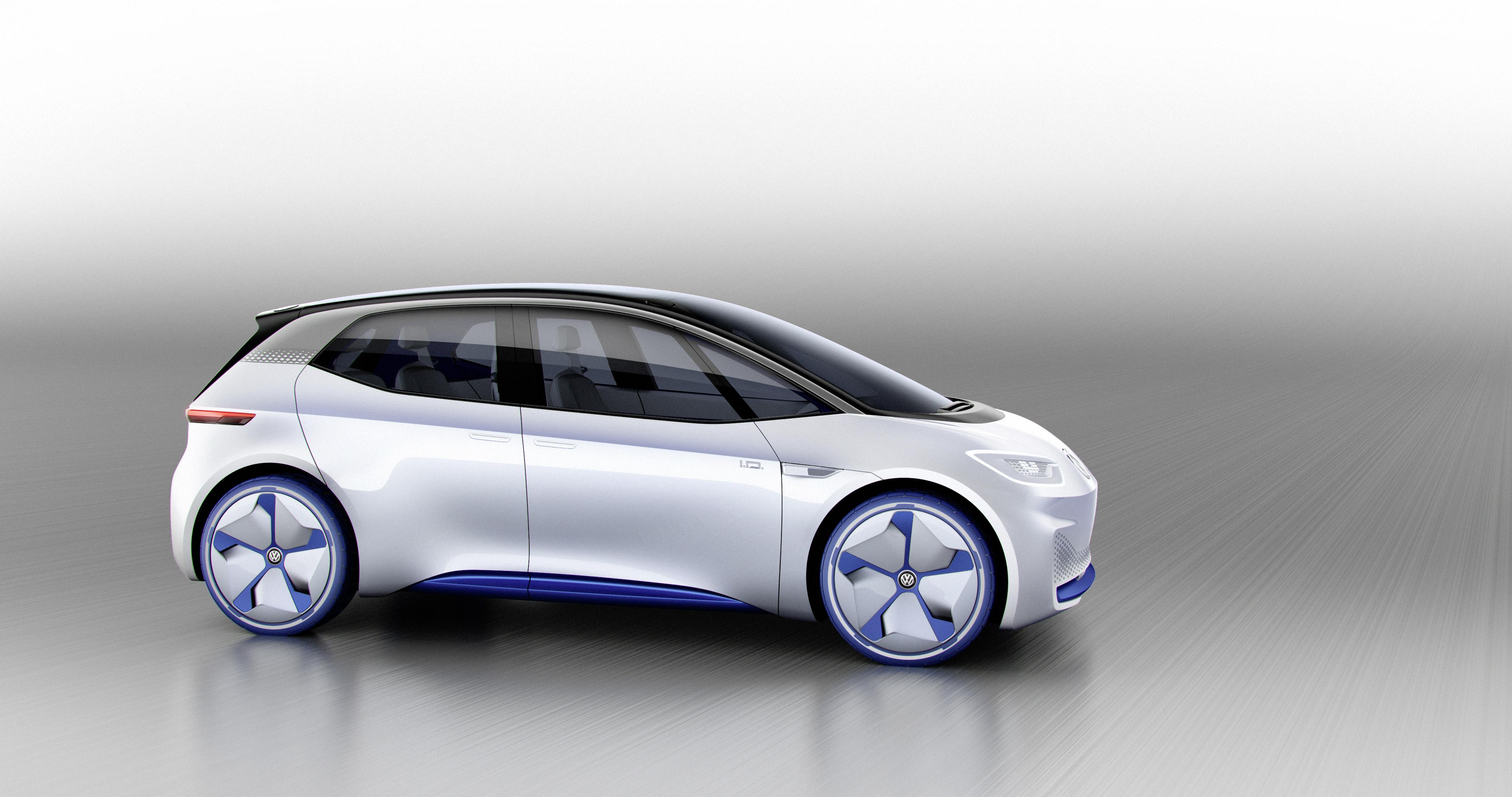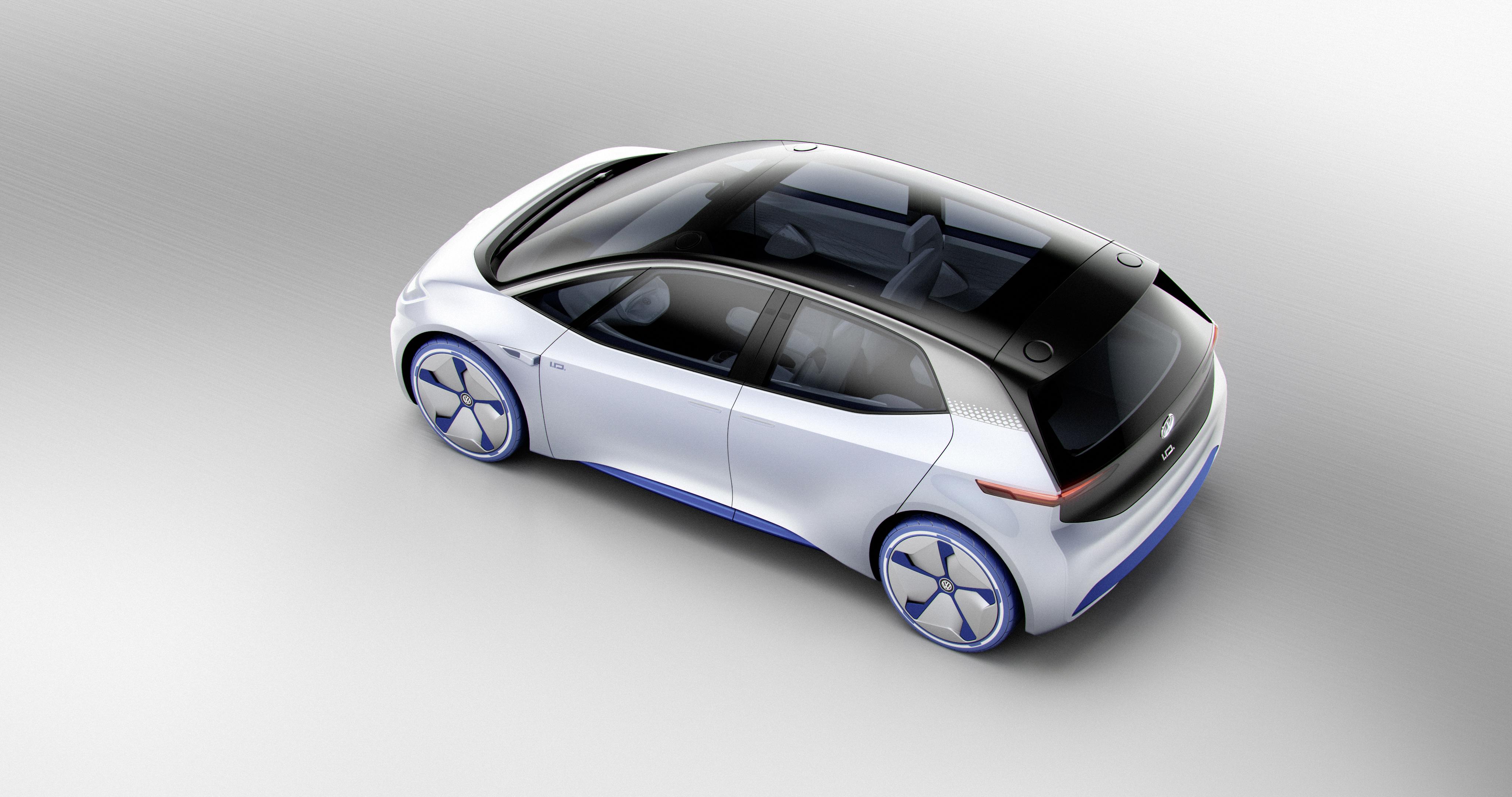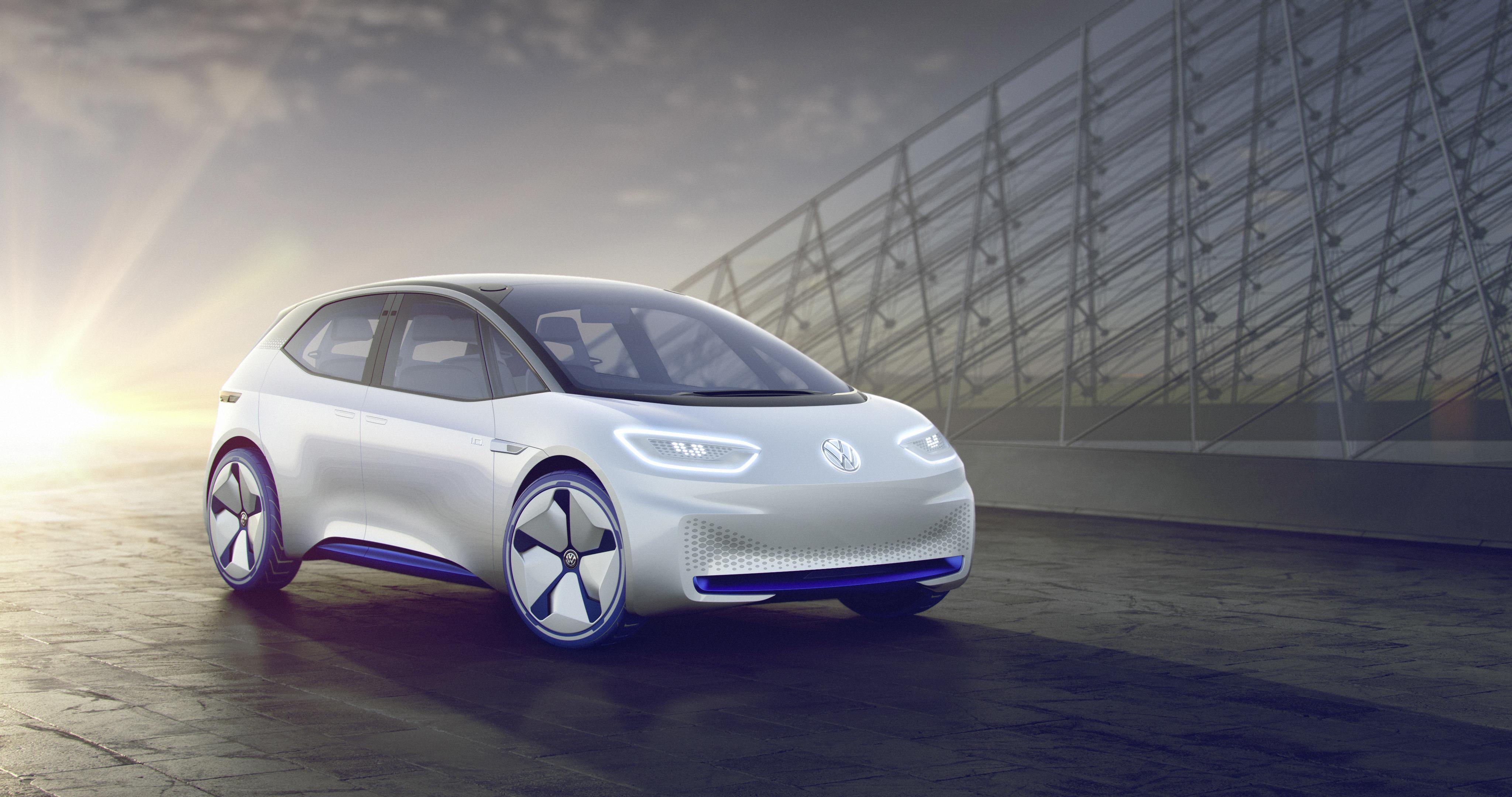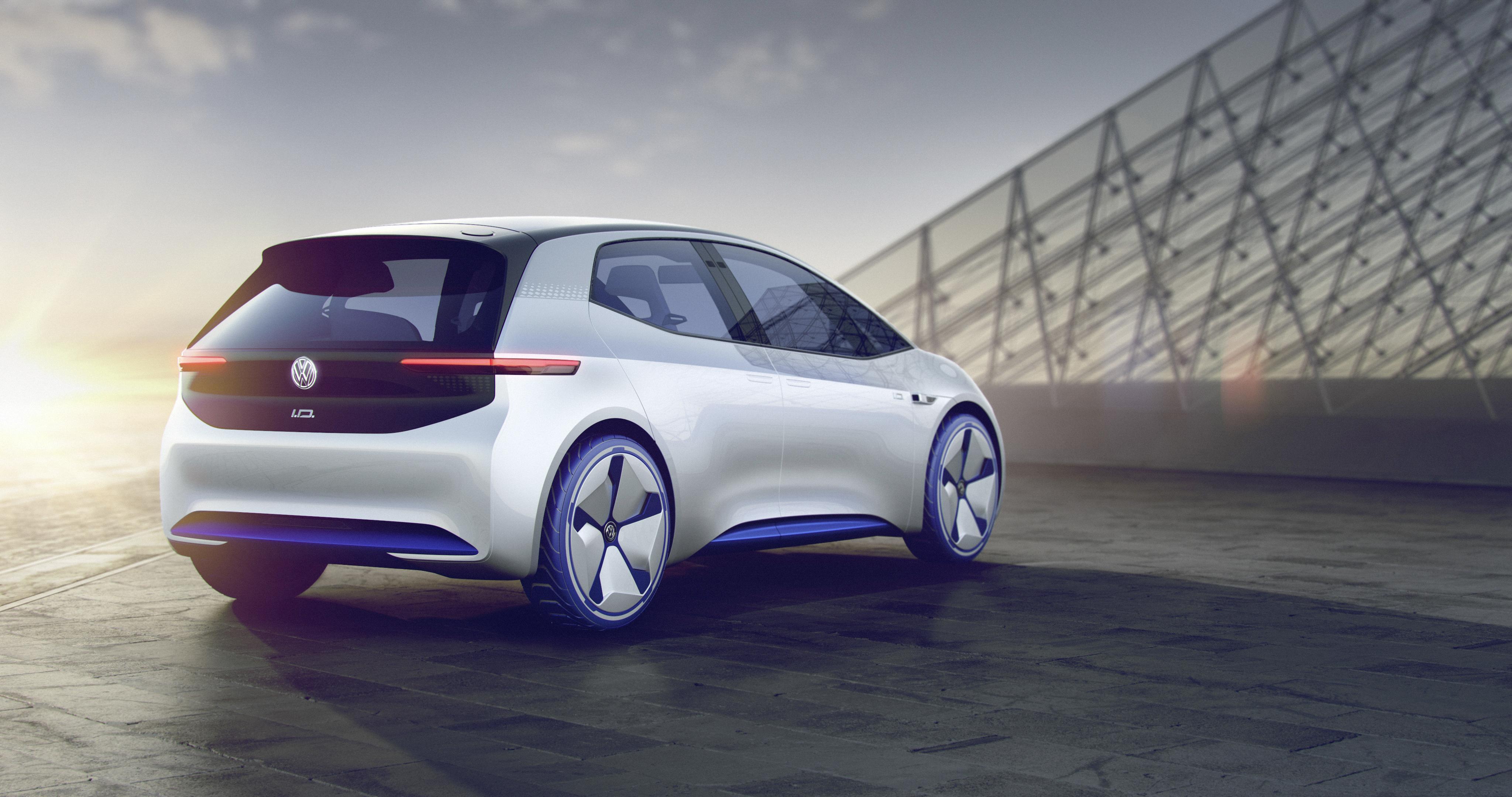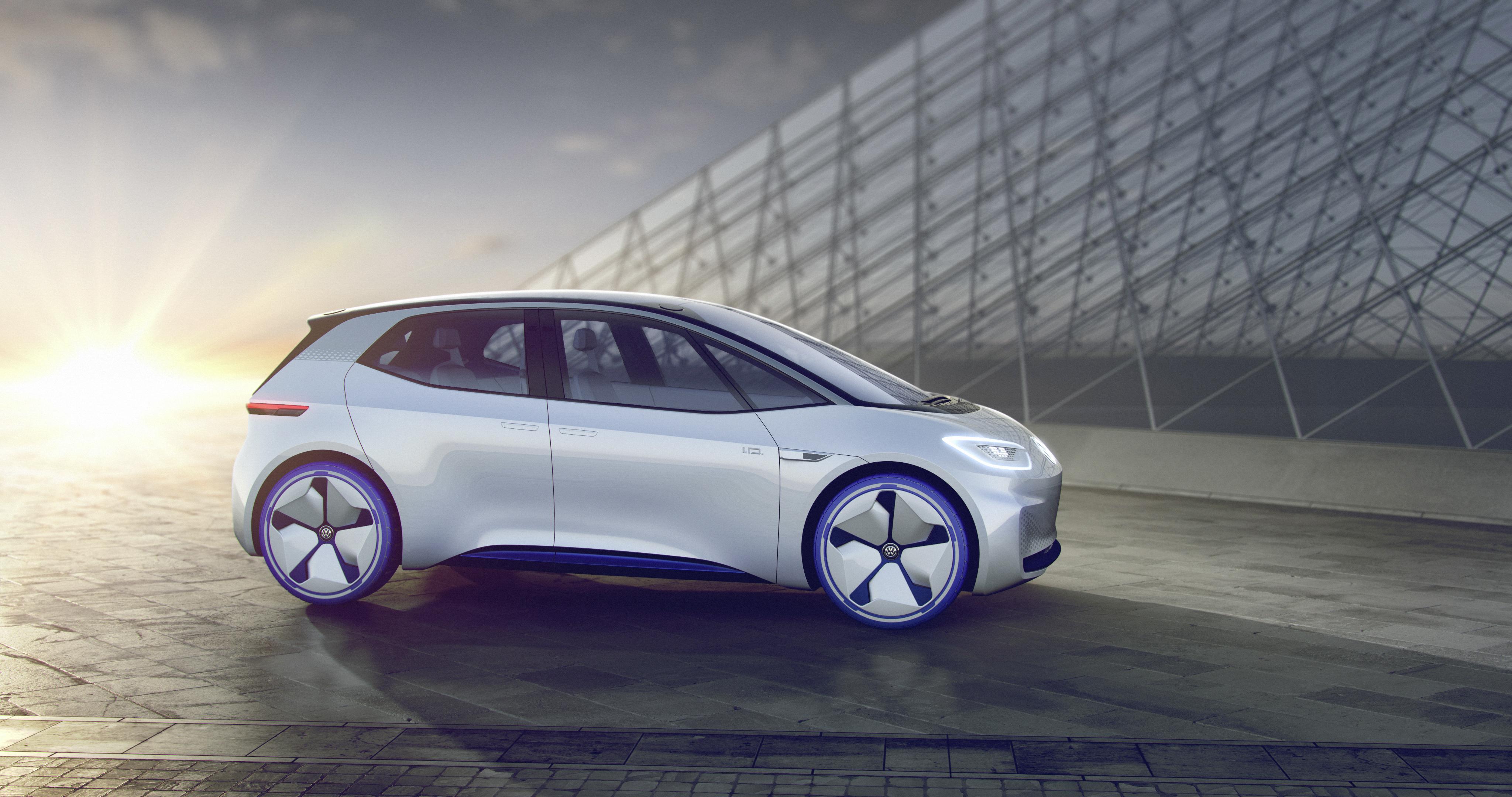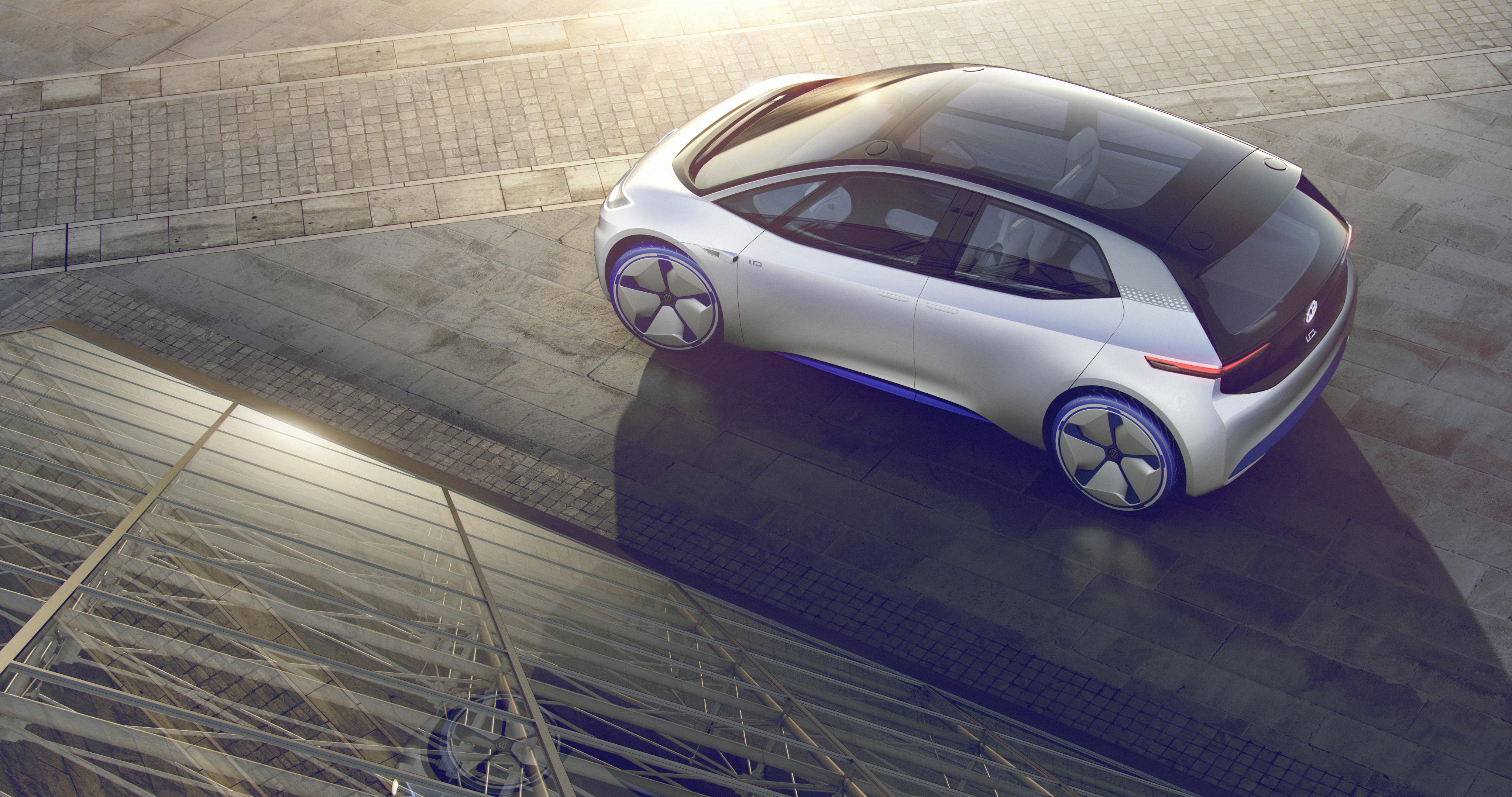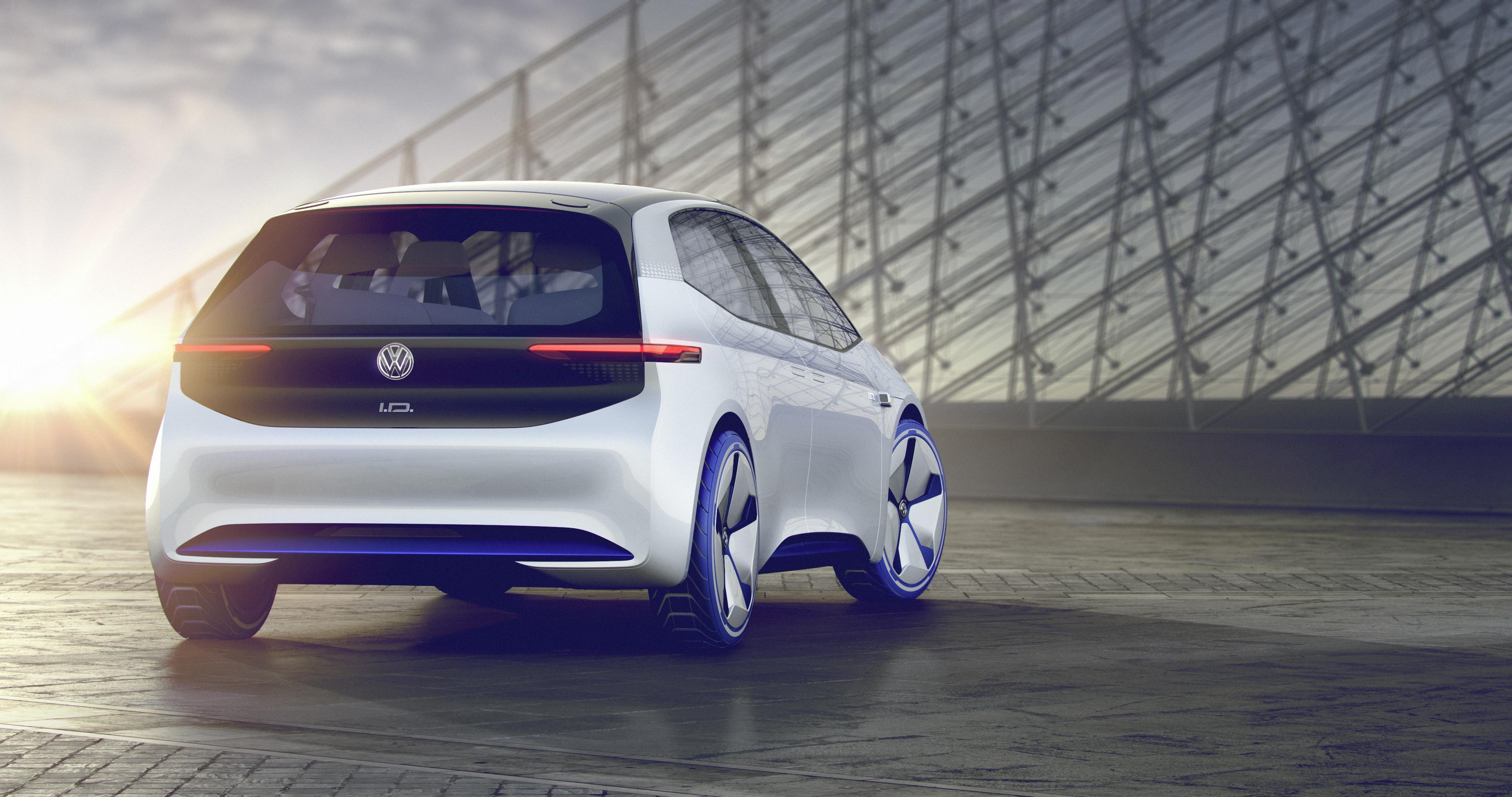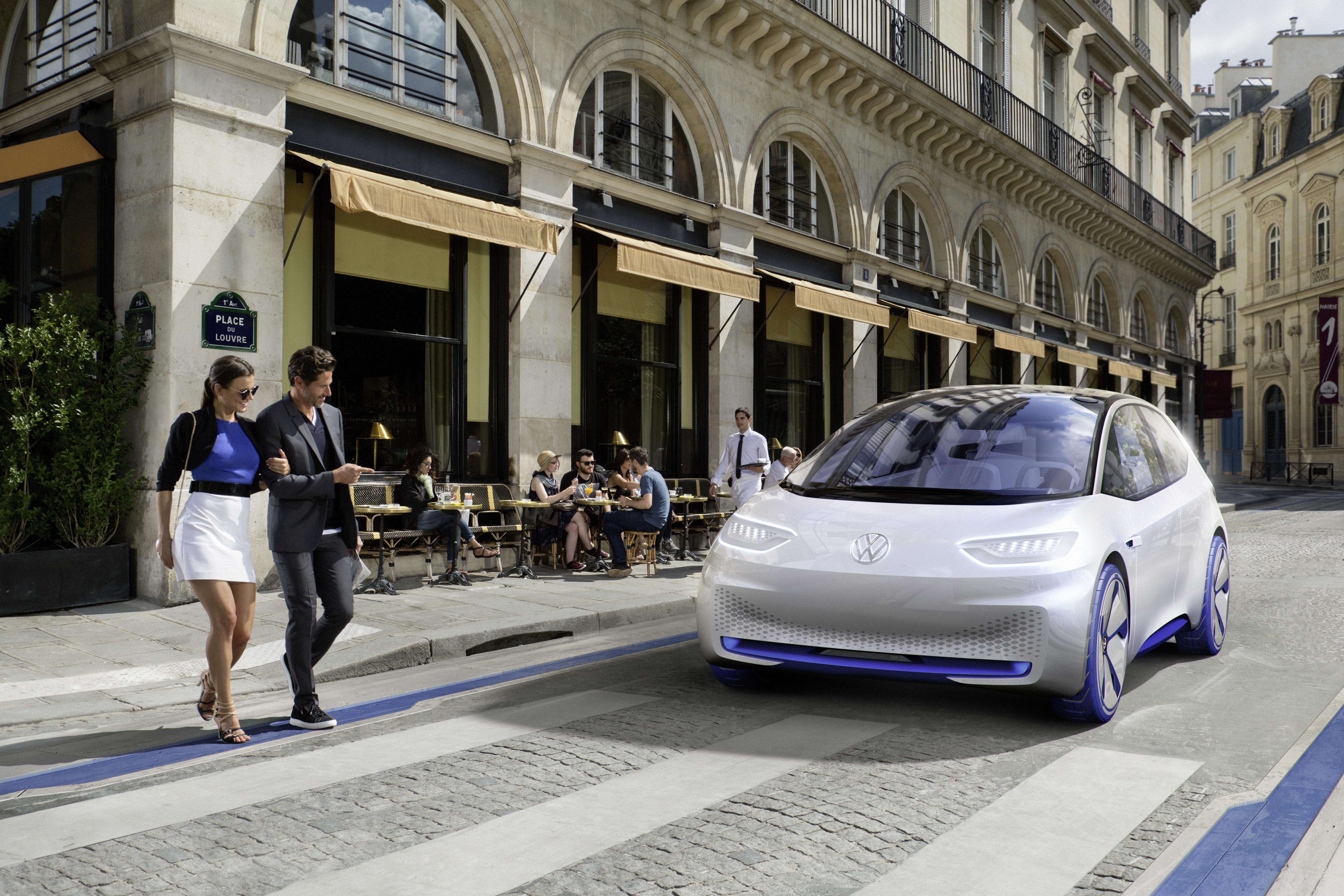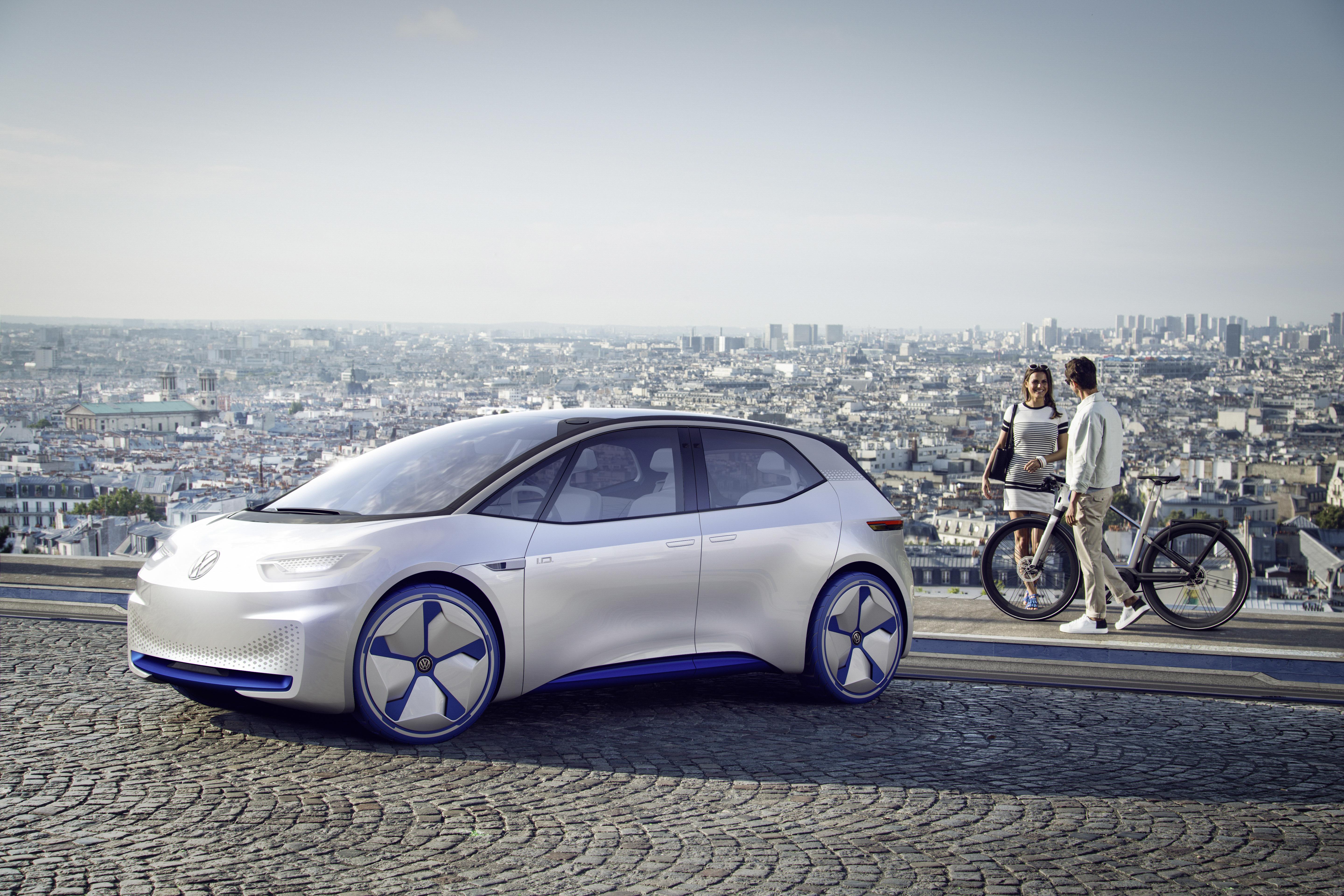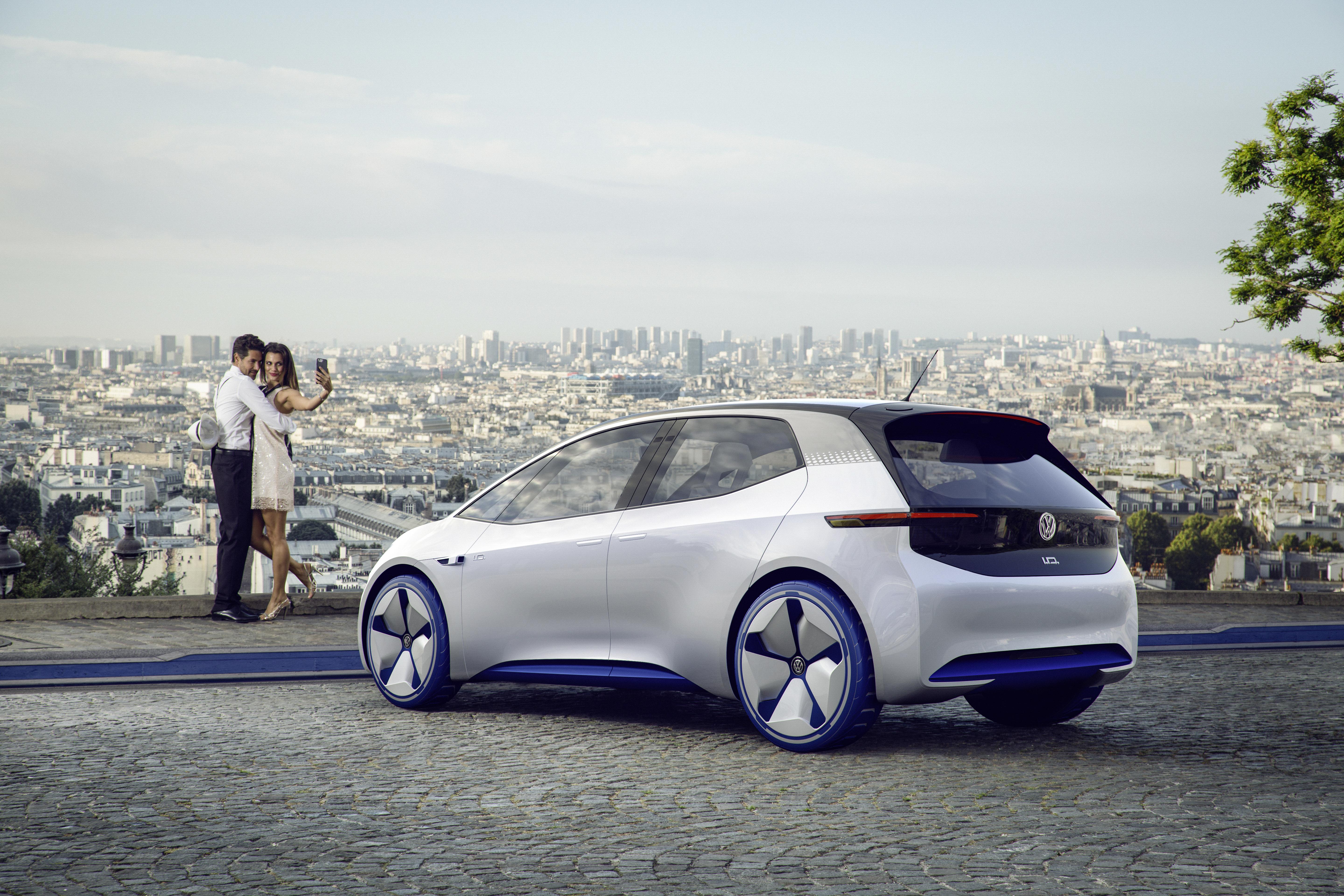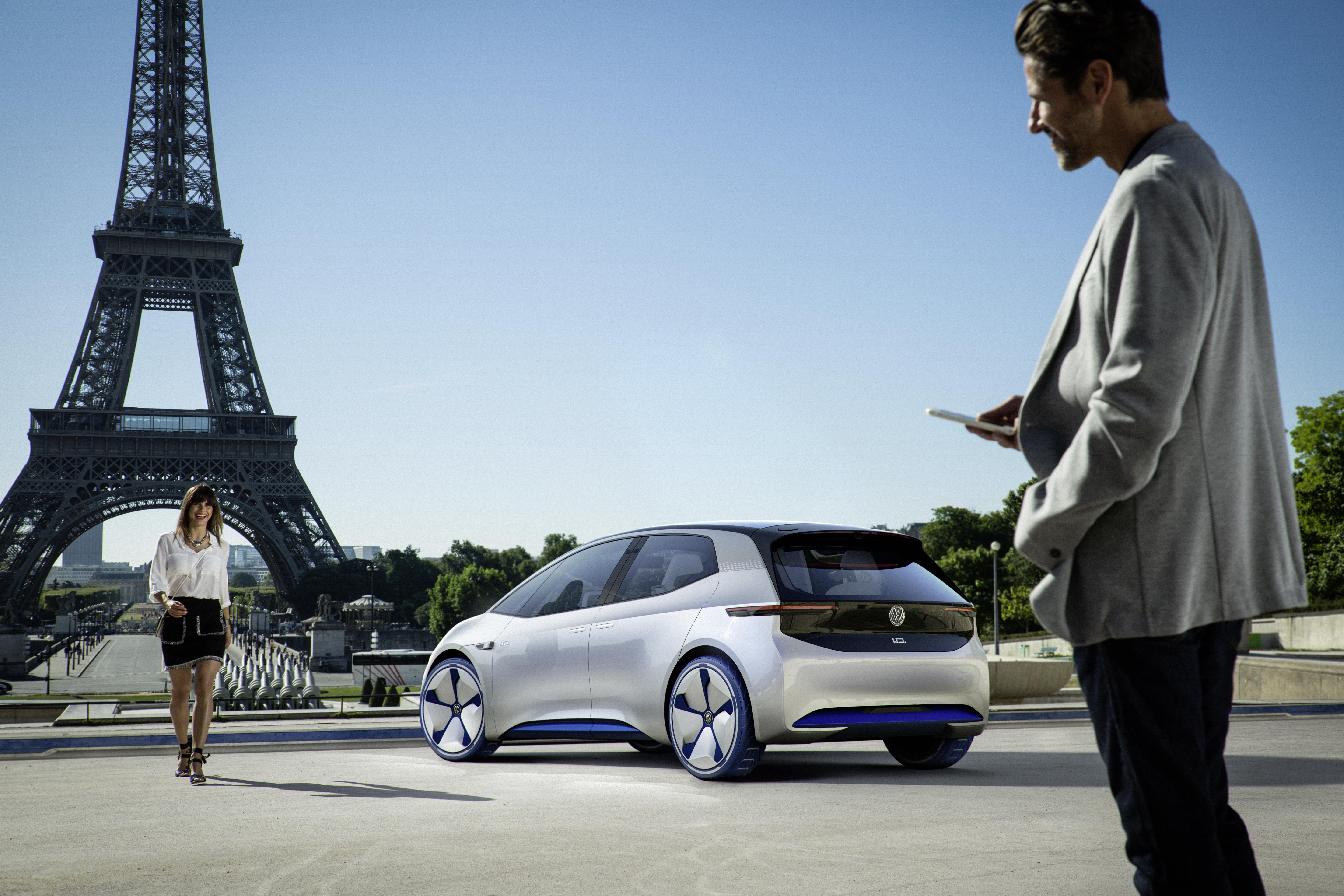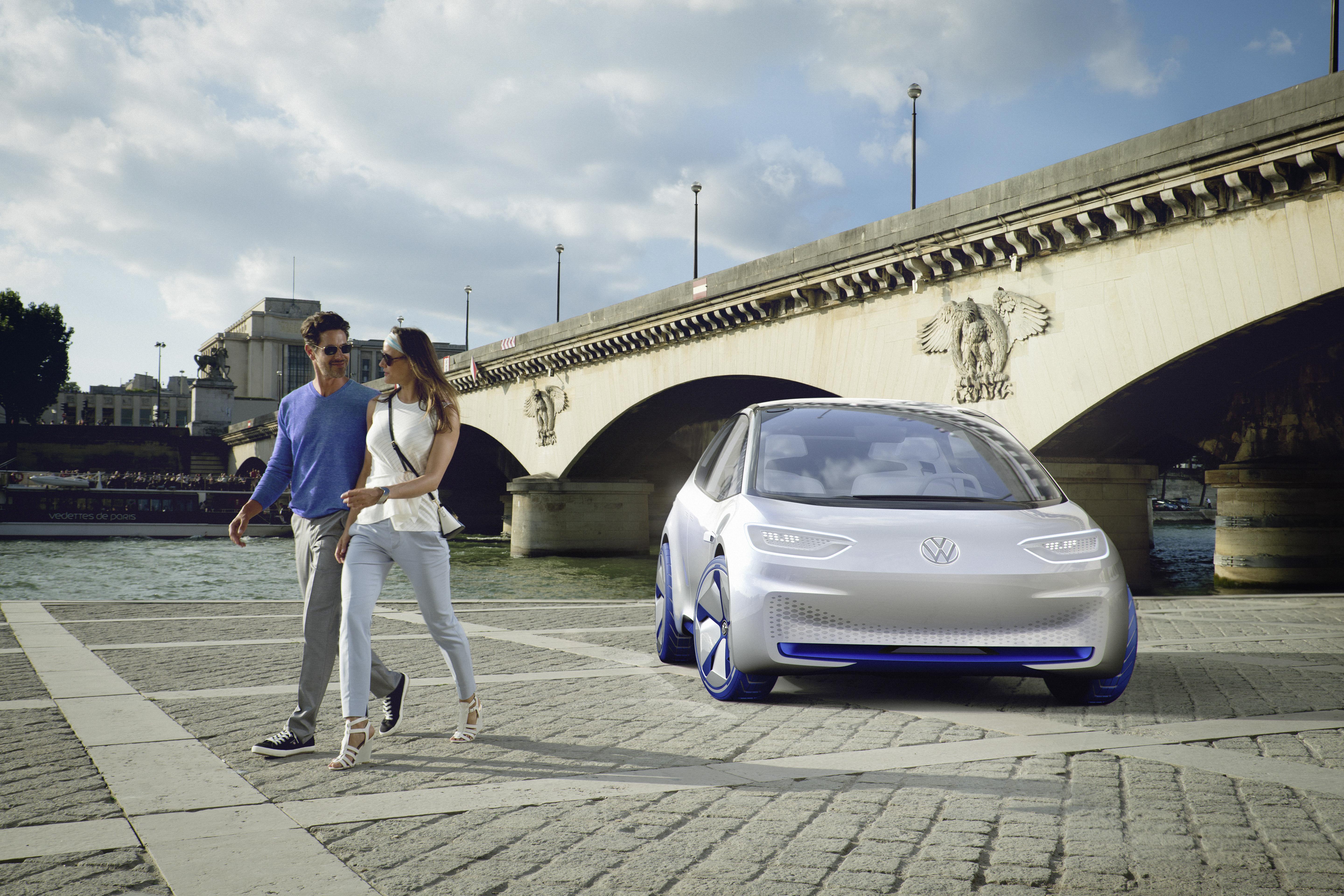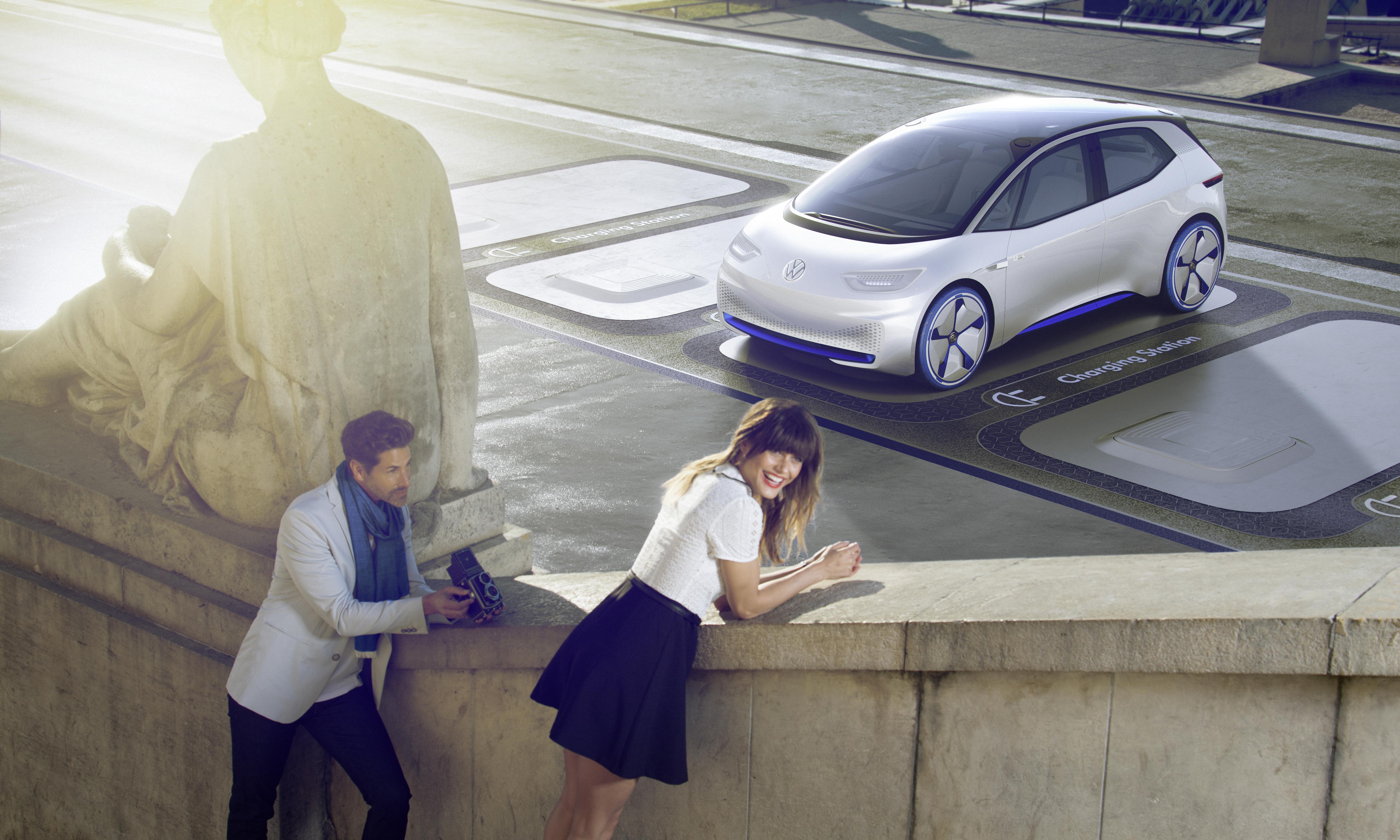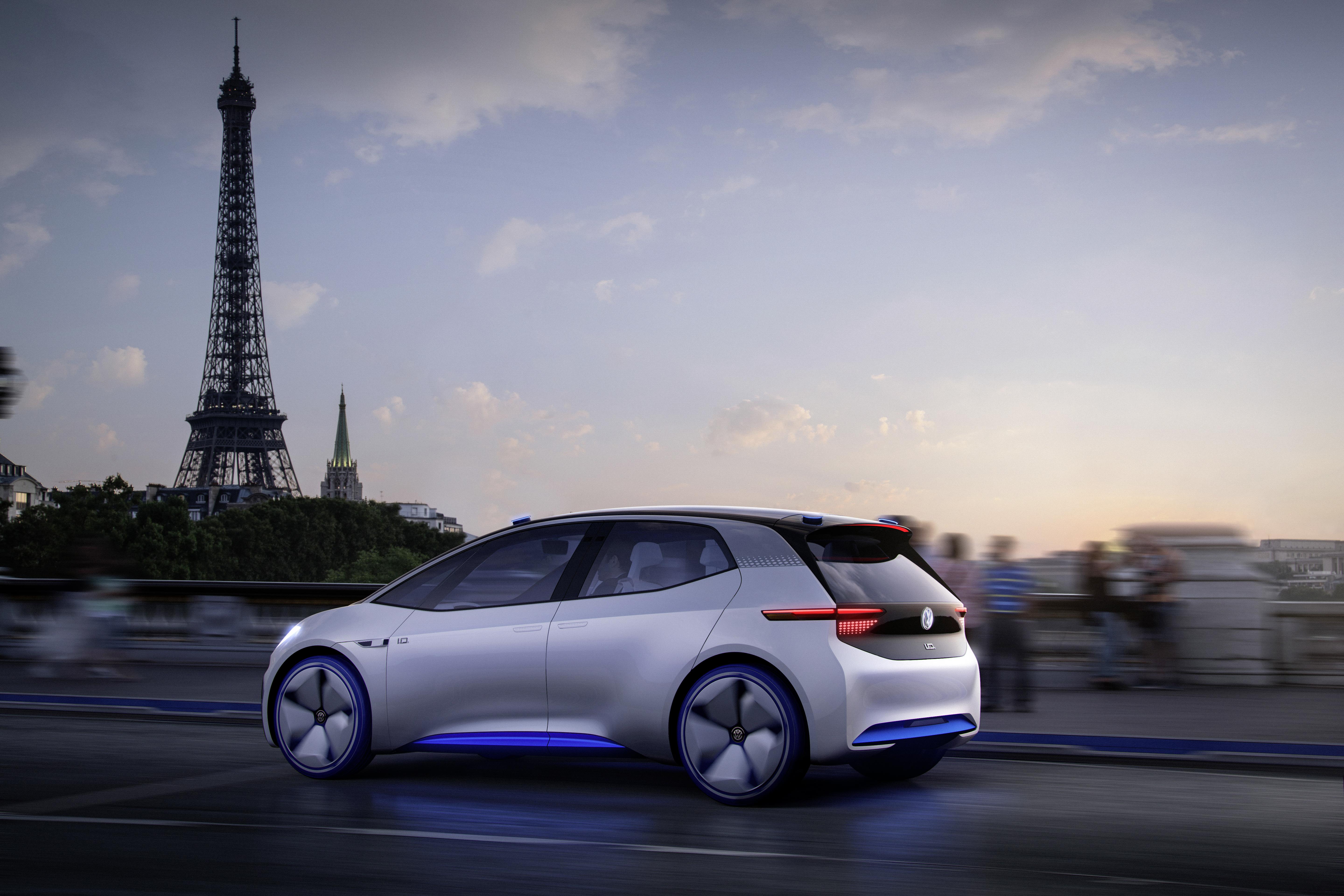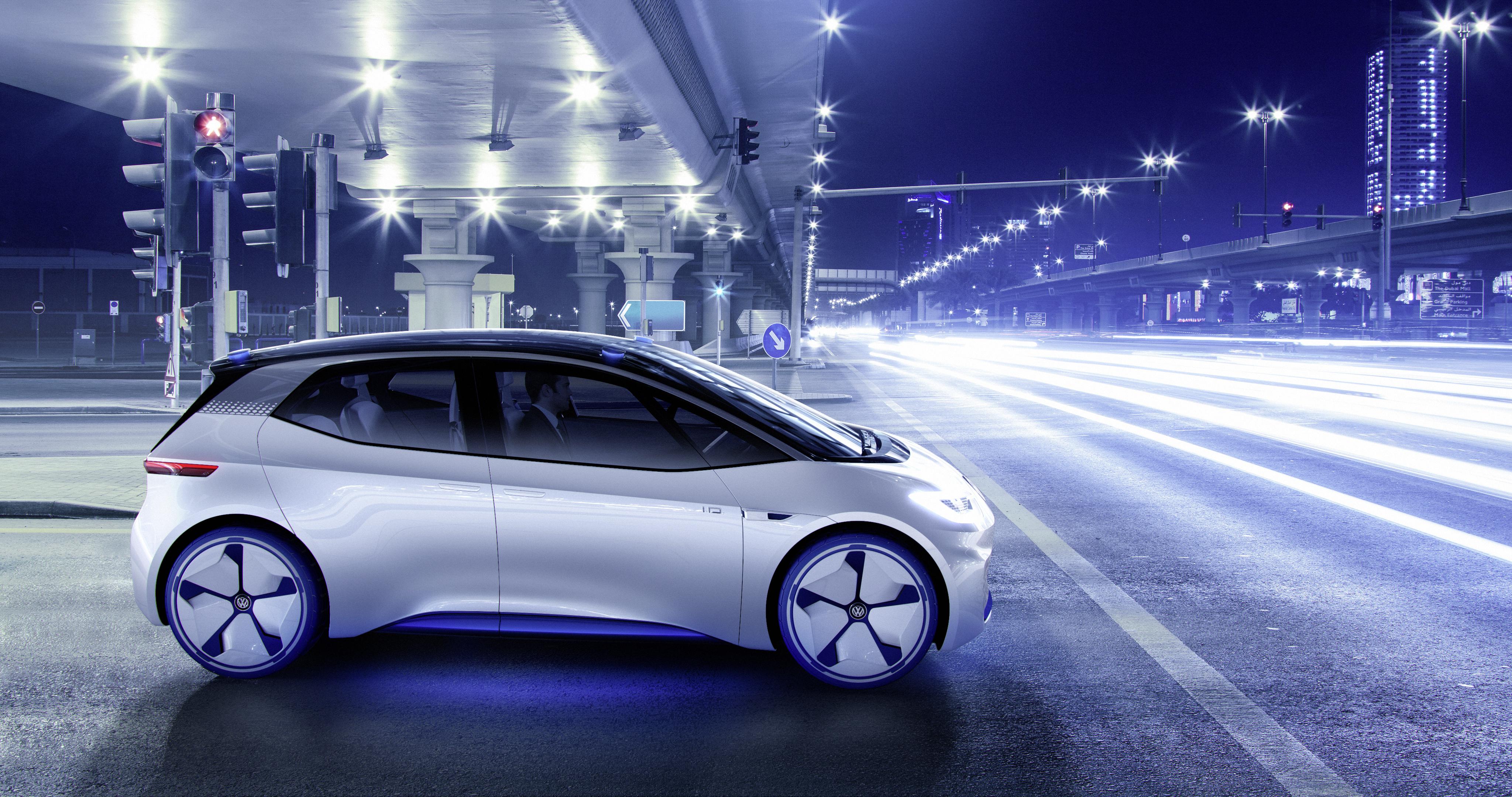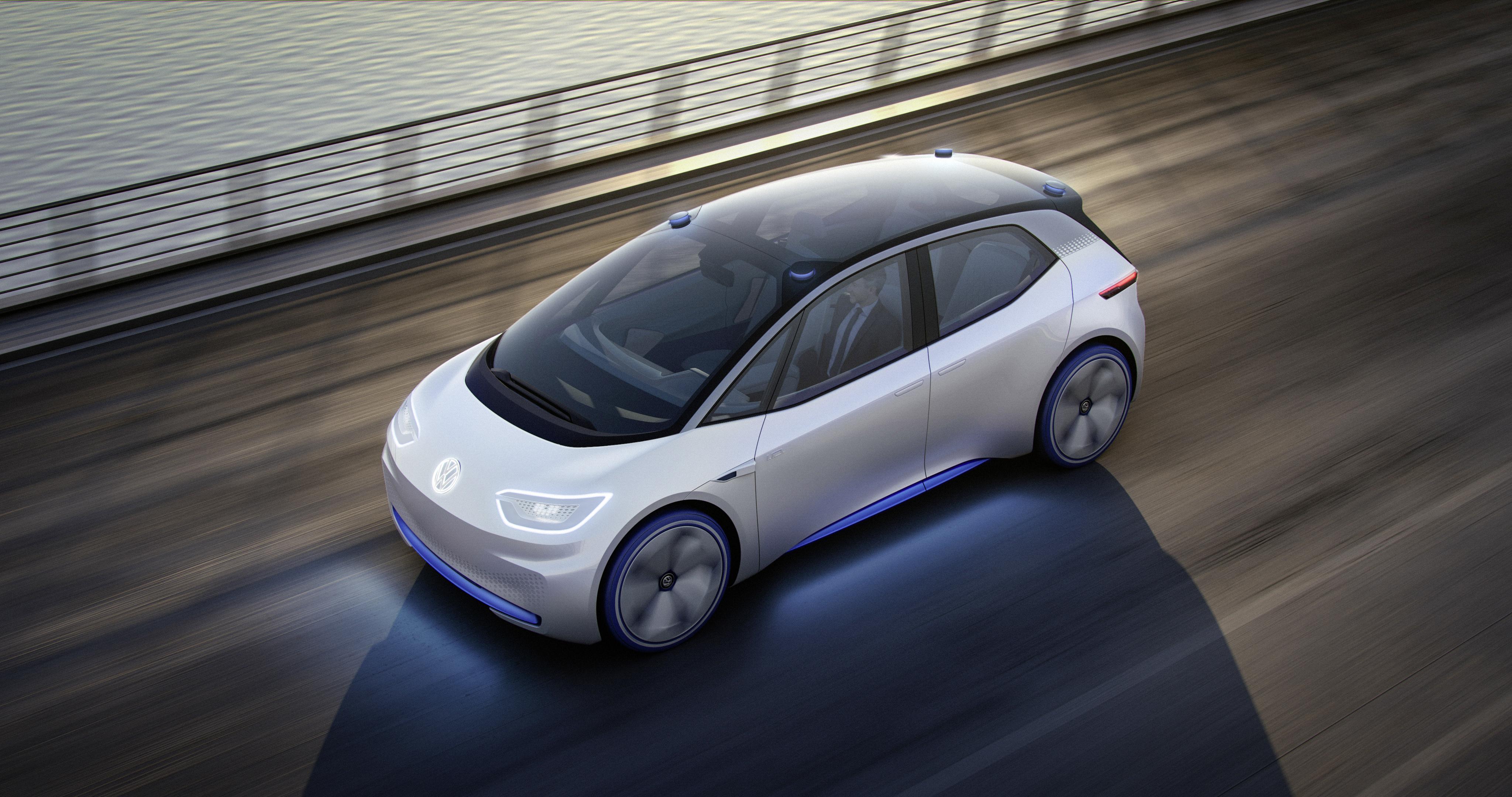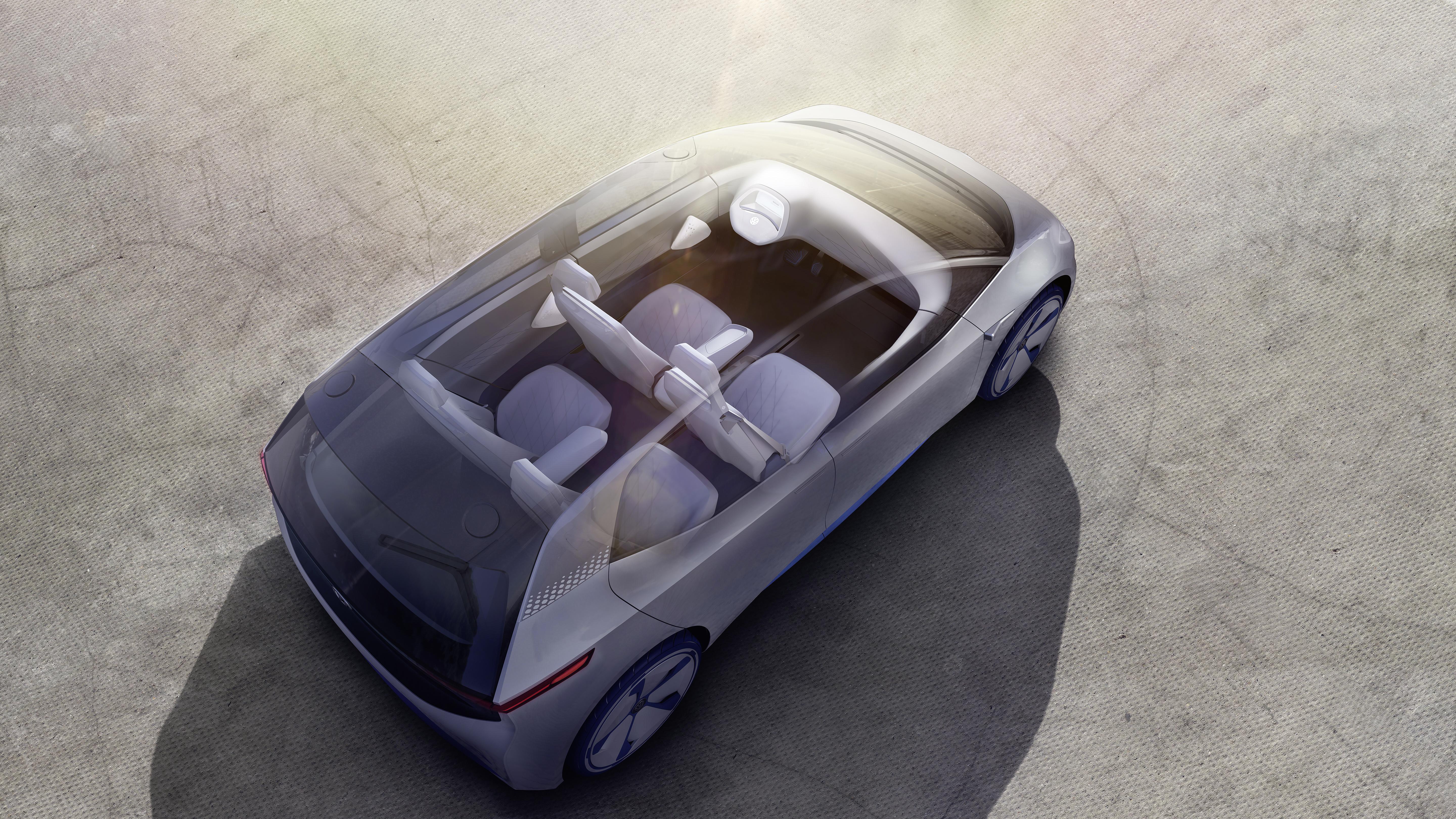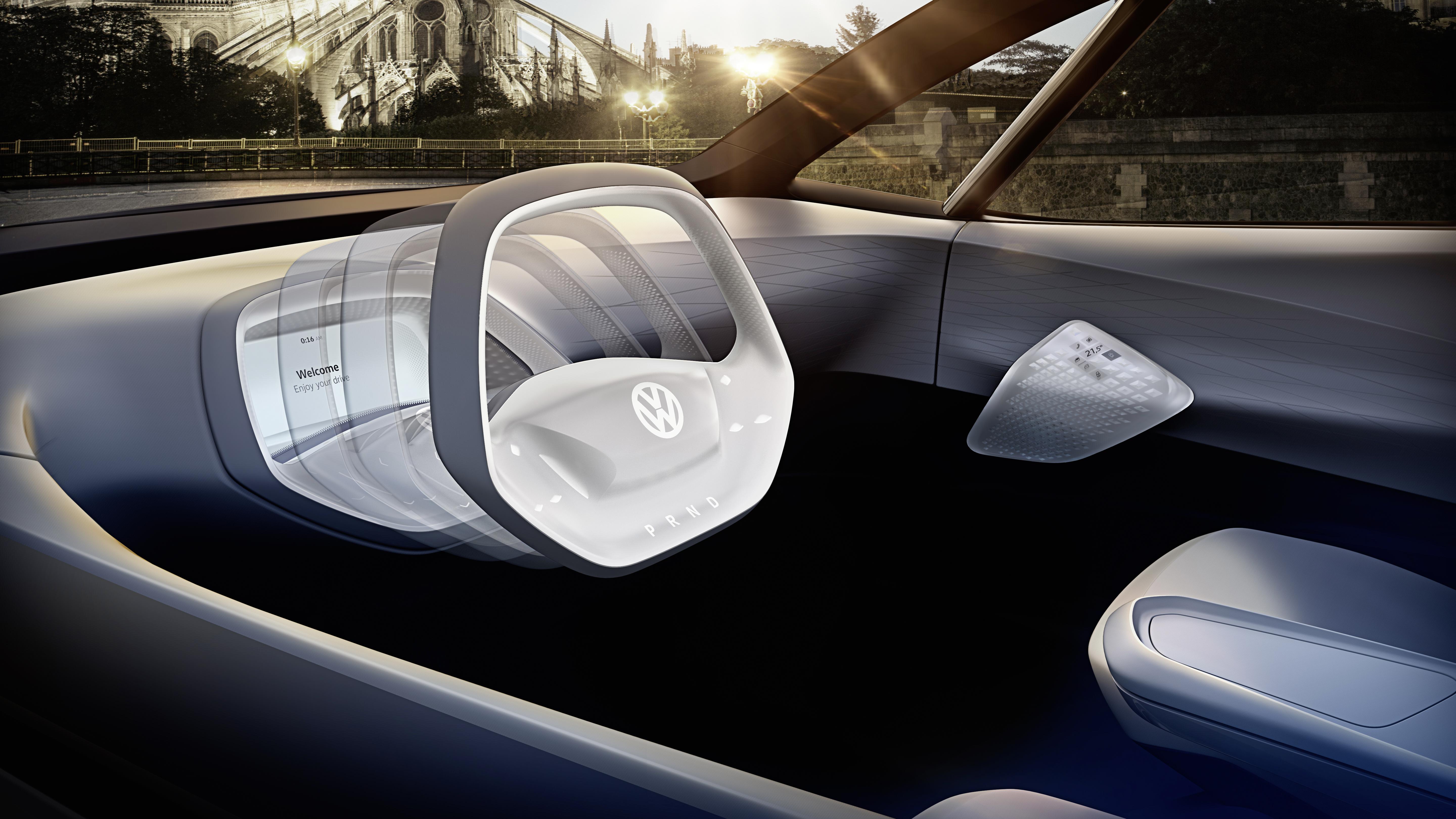Volkswagen The Tech Giant The World Had No Idea Existed
When I think of cutting-edge technology in the automotive world, Audi comes to mind. Performance, it's Porsche. Bentley, of course, holds the title for luxury and the hypercar trailblazer, without a doubt, is Bugatti. So where does that leave VW? When I think of Volkswagen, I think of reliable cars that are affordable for mass-market consumers.
There's a perception, at least for me, that Volkswagen is slower to adopt the latest technology – both inside and out. For instance, it was only within the last couple of years that VW finally equipped its cars with USB ports. Features that are standard, or at least made available as options, from other automakers just seem to take longer before they hit VW's cars stateside.
Take the Passat, for instance. In Europe, it's already offered with the Digital Cockpit, essentially Audi's Virtual Cockpit with its high-resolution displays replacing analog instruments. From what I've gathered, only SUVs in the states will get the feature. I do get the sense that VW's working hard to democratize all of its safety features, as well as push greater amounts of in-car technology to more of the vehicles it sells from 2016, and that's a great – and overdue – thing for both VW and consumers. The automaker desperately needs to make this happen sooner rather than later.
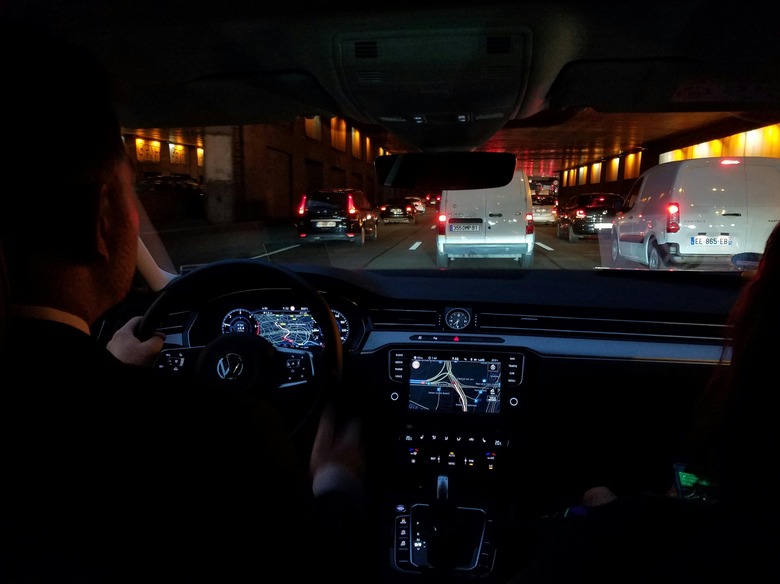
Now look at the Volkswagen I.D. Concept, the car that the automaker insists will be on the road – in some production form, at least – by 2020. It may be Golf-sized, but it certainly isn't anything like the familiar old Golf you'll find on VW dealer forecourts today.
Prior to I.D.'s unveiling at the Paris Motor Show, I got to experience a couple of neat research projects that VW's been working on. Concept cars are, by their nature, often more about looking great under show-floor lights than giving any real insight into what we'll be driving in the future. My objective, though, is that by the time you finish reading this article, you'll have a strong sense as to why I.D. plays a major role in VW's future of connected and electric mobility.
All the cool kids are using the term "autonomous driving" these days. By 2025, VW's aim is to reach level 4 automated driving. This means that the I.D. should be able to fully drive itself, but there's still a steering wheel available should you want to take over control. I know that this sounds outrageously aggressive considering it's only eight short years away, but 2025 seems to be the general consensus among automakers that it's when we'll start to see autonomous vehicles out in the wild with regular consumers inside them. Mercedes-Benz, for instance, is aligned with the same sort of vision and 2025 timeframe, unveiling the Generation EQ concept also at the Paris Motor Show.
At the core of self-driving vehicles are driver assistance systems working in collaboration. Features such as auto-parking and adaptive cruise control have been around as far back as I can remember. During my visit to VW's proving ground in Wolfsburg, I was got to experience the automaker's take on advanced parking functionality, such as pulling into a parking slot – both head-first and reversing in, parallel and possibly the only automaker to offer perpendicular parking.
During my "self-parking" experience, I still had to manage the gas and brake pedals myself while the system handles everything else. There are digital pointers on the console letting me know when to shift into gear, whether it's reverse or drive, as well as the distance I have before I need to stop. Even before that all happens, the car helped hunt down a suitable space: I pushed a button, signaled left or right indicating which side of the road I wanted the system to examine, and then the car uses a short–wide spectrum radar to seek out a potential slot while the other radar systems pinpointed the distance. Once a stall was located, it spins the wheel all on its own.
You're probably thinking "heck, my five-year-old Lexus can do that" and you're absolutely correct. VW raised the bar a few notches by teaching a Golf R how to park on its own. Here's the idea: your car drops you off in front of your office building, or wherever you might be going, and then with a couple of of taps on the hood, you send it off in search of a parking spot all, whether it's street side, your garage, or a parking garage. The self-train-park system I got to experience was accurate down to 1-inch for the positioning of the front and rear tires: instead of relying on GPS, VW implemented a localized system utilizing only the cameras already available on cars today, paired with the radar system used for parking assist.
The upshot to avoiding GPS? No need to worry about underground garages, urban canyons, or multi-level facilities where a clear view of the sky can't be guaranteed.
One immediate real-world application for trained parking assist would be if you have a tricky or tight parking slot in a parking garage or at your home, since after a couple of times pulling in and out, the system "remembers" how to park. The next time you arrive home, you can jump out of the car, tap the hood a couple times, and your car parks itself. As it stands right now, the feature is still in the research phase which means that it's a few years before it'll be available to VW, Audi, or some member of the VW's family.
I asked whether the triple-tap on the hood trigger to activate self-parking will make it to the final product. The short answer is, probably not. It sounds like a joke, but VW's fear is of a situation such as three acorns falling off a tree and misfiring the three tap sensor.
How does this relate to I.D.? The production car is expected to be able to find a parking space on its own and then park itself. In theory, you'd have stopped at a specially-designated, marked zone in the entrance to the garage and, of course, that garage has been designed from the ground up to accommodate self-parking features. For the driver, it's a case of pulling up the Volkswagen app and dispatching the I.D. to park itself. Along the way, it's able to detect other cars as well as pedestrians. Retrieving I.D. is as simple as hitting a button in the app to summon the car back to where it dropped you off.
It's part of what VW is calling I.D. Pilot, and it'll be able to deal with all road conditions on major roads and highways, at speeds up to 81 mph.
Cars that drive themselves are clever, undoubtedly, but there are a lot of drivers out there – myself included – who don't want to necessarily give up their role behind the wheel. Undoubtedly my favorite aspect of VW's research, therefore, was its race trainer project, intended to help make potential race car drivers better from the start, before they learn any bad habits.
In a sense, it's using a self-driving car as the "perfect" tutor. First, I was driven around a twisty make-shift track on the proving ground: I was behind the wheel, but not actually driving, since it was a prototype Golf R equipped to do all sorts of neat things like self-driving.
It also has one of the best Augmented Reality head-up displays that I've seen outside of a science-fiction movie. Much larger than anything I've seen on the market today, in the concept R it was used to help guide me through the track. When a big turn comes up, for instance, the racing line overlay changes color from blue to red, indicating when I should slow down and by how much. During the turn, there's a "virtual wall" projected into my field of view, to help me avoid missing the corner. Why's all this important? I.D. will feature a large Augmented Reality display too, though to guide you along the route to your final destination rather than around a track like Race Trainer. Data and updates such as traffic and the next navigation instruction is projected so that it appears to be between 7 and 15 meters ahead of the car, and fully integrated with the real-world surroundings.
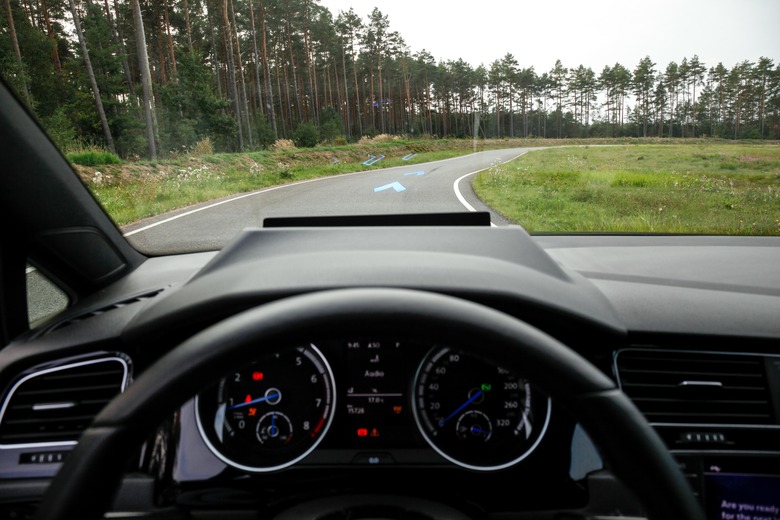
I've already experienced just how exciting it can be, being driven fast by a car doing all the hard work, but VW's system opens the door to another potential benefit of autonomous vehicles: collaborating with, rather than replacing, a human driver. I experienced this in a controlled environment during my Race Trainer session. Yes, the Golf R used GPS in conjunction with its various cameras and radars to maneuver itself around the track with aplomb, but it also went a step further: the system helped me learn the track myself.
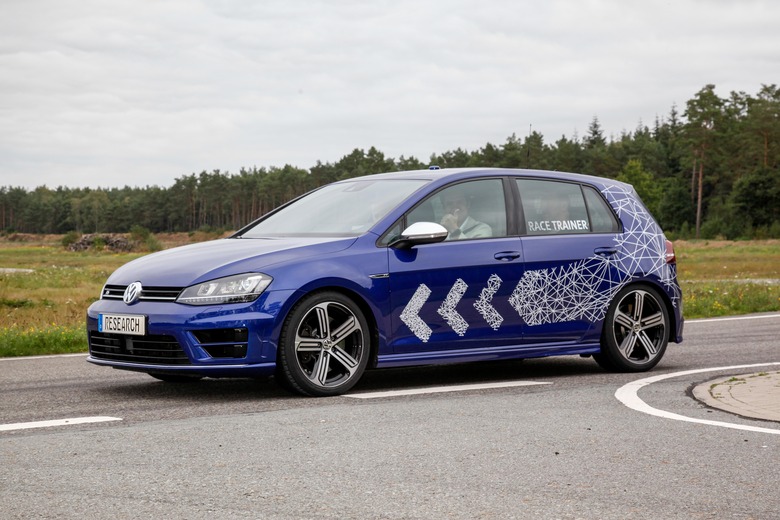
It starts with the AR head-up display, guiding me along the best racing line, but it also utilizes my other senses to help me become a better driver. An audible tone alerted me when to brake, and if I missed the braking-point, the car braked for me. If I got overly aggressive around a turn, it eased off the gas. Should I oversteer or understeer, the system steps in and helps steer for me.
Having driven on many race tracks around the world, and having had many drive instructors sitting beside me, this is the first time I've had the car itself teach me to drive. It's honestly remarkable, and a fascinating possibility for how human drivers could stay engaged with the process while still benefiting from the safety and intelligence of a computerized system.
Race Trainer has three levels. Level 1 is characterized by aggressive braking, slower overall speeds, and overwhelming control of the steering wheel, while in Level 2 the system backs off by an estimated 30% and you're able to drive faster. At Level 3, the system is still on but it backs off considerably, and allows you to drive a whole lot faster.
Due to time constraints, I got to Level 2 and could really tell the difference. My co-driver, Michael Harley with KBB, went first and made it to Level 3; riding as a passenger, I got the sense that he was driving much faster on his own at Level 3.
Going down memory lane with Volkswagen
Do a little digging into Volkswagen's research history, and you might start to suspect that it has been unfairly overshadowed by Audi's clever marketing campaigns over the years. The Audi Pikes Peak TTS project in collaboration with Stanford University, for instance, may have been successfully completed in a car wearing the four-rings logo, but it was actually the brains at the Volkswagen Electronic Research Laboratory (VWERL or just ERL) who did the heavy lifting. In September 2010, meanwhile, the Audi TTR drove itself non-stop up the 12.4-miles Pikes Peak International Hill Climb course in Colorado, toping speeds of 45 mph and completing the legendary (and legendarily challenging) course in 27 minutes.
Having driven the course myself recently in the new 2017 Macan GTS I know first-hand that it's not an easy route to speed up, let alone negotiate the 156 twists and turns. My outcome was somewhat faster, at under 15 minutes with average speeds of 60+ mph, but VWERL's achievement is astonishing.
That's because VW's autonomous driving research didn't start in 2010 but in fact much earlier. It was in 2005 when VWERL first collaborated with Stanford University for the 2005 DARPA-sponsored Grand Challenge, where a heavily-customized VW Touareg named "Stanley" won first place in a race against other autonomous vehicles. The challenge was to see who could use high-tech hardware sensors and artificial intelligence software to maneuver Stanley through rough mountainous terrain and arrive at the finish line without crashing.
Later, in 2007, VW and Stanford took everything they'd learned to score second place on another DARPA Urban Challenge, with a Passat station wagon named "Junior" successfully navigating itself through a variety of real-life city driving scenarios. It ably followed all road rules while driving in traffic alongside other cars as well as obstacles. It tackled intersections, traffic lights and even parked itself at designated areas. Of course, there were other successful challenges leading up the TTR ascent up Pikes Peak – and this is just the beginning.
In the past couple of years, Audi took the torch and ran with it, accomplishing so much in the "piloted" autonomous driving space with the RS 7 challenging the best human drivers on race tracks, as well as out on public roads.
Volkswagen didn't just wake up one morning – or post-TDI – thinking, "hey we need to focus more on autonomous vehicles". Instead, though it might not be the first name you associate with the technology, VW & co., has had a long and successful history in developing self-driving cars. I suspect I'll be among the first in line to buy the piloted driving I.D. off the assembly line, though I'll have to wait until 2025 to do it. Until then, you can expect me to be along for the ride, documenting every aspect of VW's advancement in the self-driving space, as safety and assistance technology today paves the way for safer, more efficient roads tomorrow.

